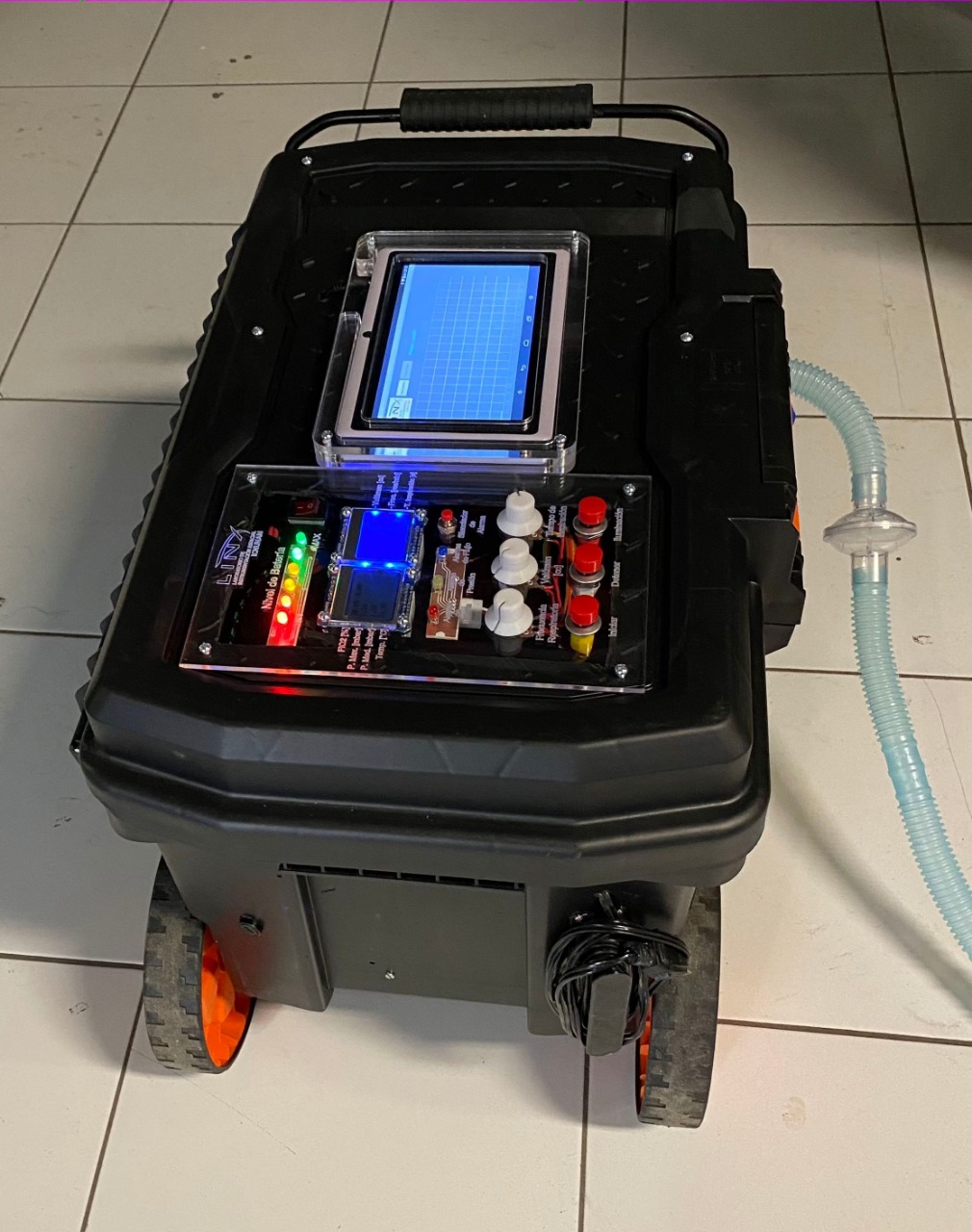Nuestro objetivo
Desarrollo de proyectos espaciales de alto impacto en ingeniería y ciencias básicas y aplicadas, con una fuerte componente de formación de recursos humanos en el sector espacial mexicano.
Desarrollo de proyectos espaciales de alto impacto en ingeniería y ciencias básicas y aplicadas, con una fuerte componente de formación de recursos humanos en el sector espacial mexicano.
This is the most ambitious mission LINX is developing. The mission aims to demonstrate the feasibility of building structures on planetary surfaces, using swarms of self-organizing robots. The payload comprises a command, telemetry and deployment module, which is produced by LINX and carried by Astrobotic's Peregrine lunar module.
This mission has the support of AEM, CONACyT and UNAM, and will be the first Mexican mission to the Moon, which will represent a technological, strategic and media milestone for the country.
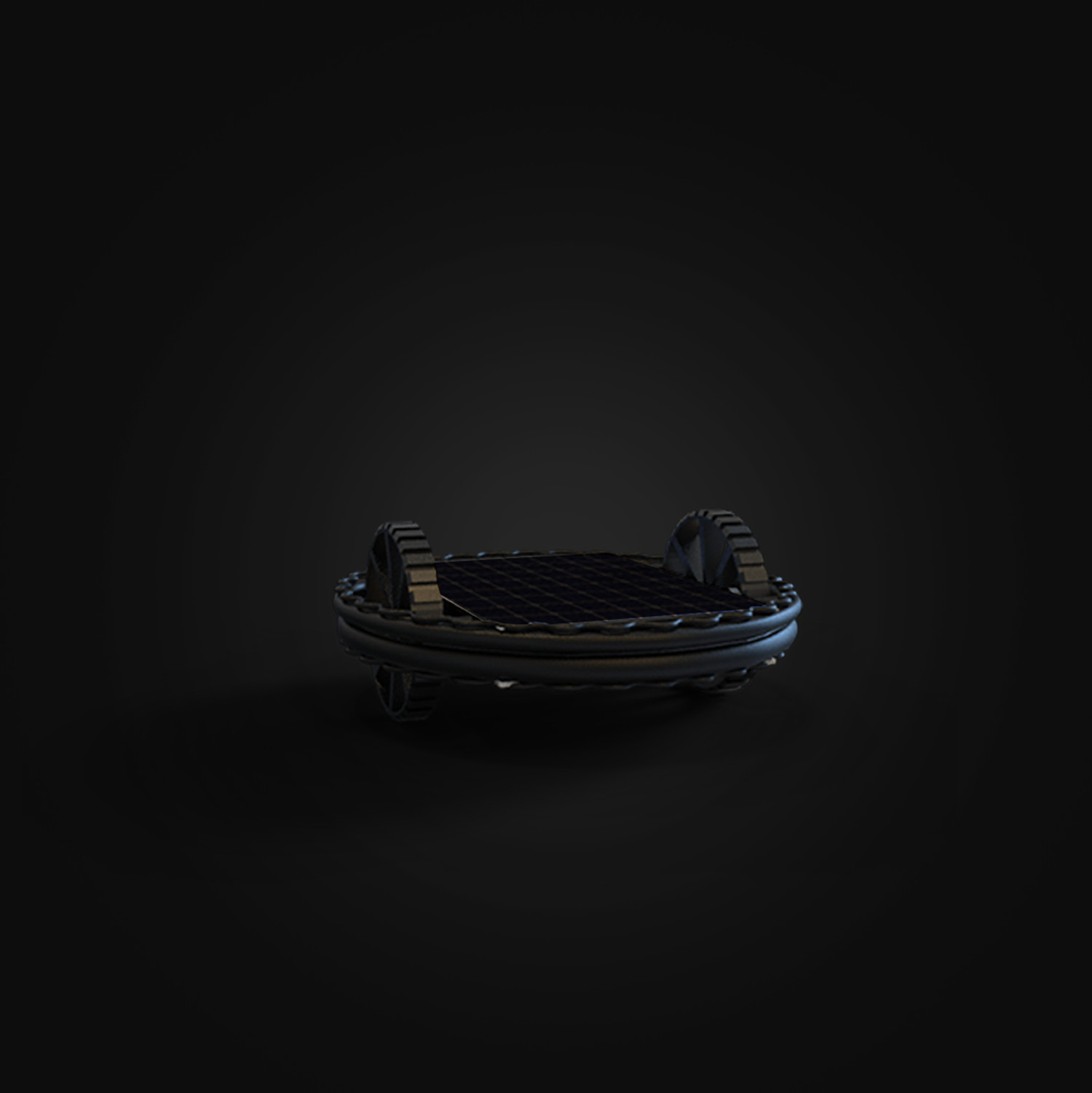
The specific objectives include:
- The deployment of 5 identical units on the lunar surface and their autonomous navigation in order to maximize their spatial grouping and, if possible, achieve electrical connectivity, joining their solar panels into larger solar panels;
- Measure powdery plasma parameters directly on the nuclear surface.
The transport of the payload to the Moon will be carried out by the company Astrobotic, which plans to launch it in 2021.
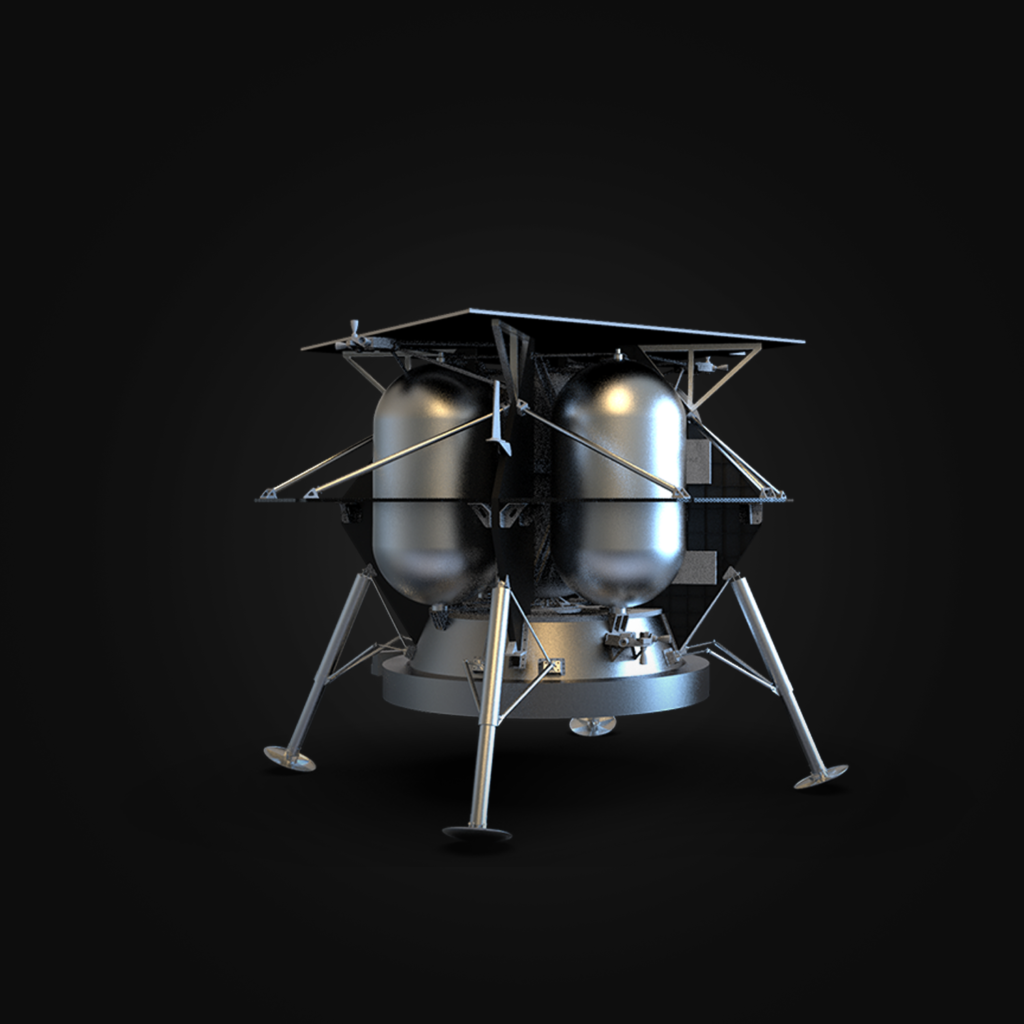
The COLMENA mission is exclusively developed by the Space Instrumentation Laboratory, LINX, of the Institute of Nuclear Sciences of the UNAM.
Students from various careers and academic levels from UNAM, IPN and UNACH, as well as from UNAM preparatory schools carry out or have made stays at LINX and participated in different aspects of the mission.
We have also received kind support in some specific tasks from researchers and laboratories from: the Institutes of Geophysics, the Institute for Research in Materials and Engineering and the Faculty of Sciences of the UNAM, and the ESIME-Ticomán.
Consultations on materials have also been carried out with researchers from L'Institut de Recherche en Astrophysique et Planétologie (IRAP), Université Paul Sabatier, Toulouse, France.
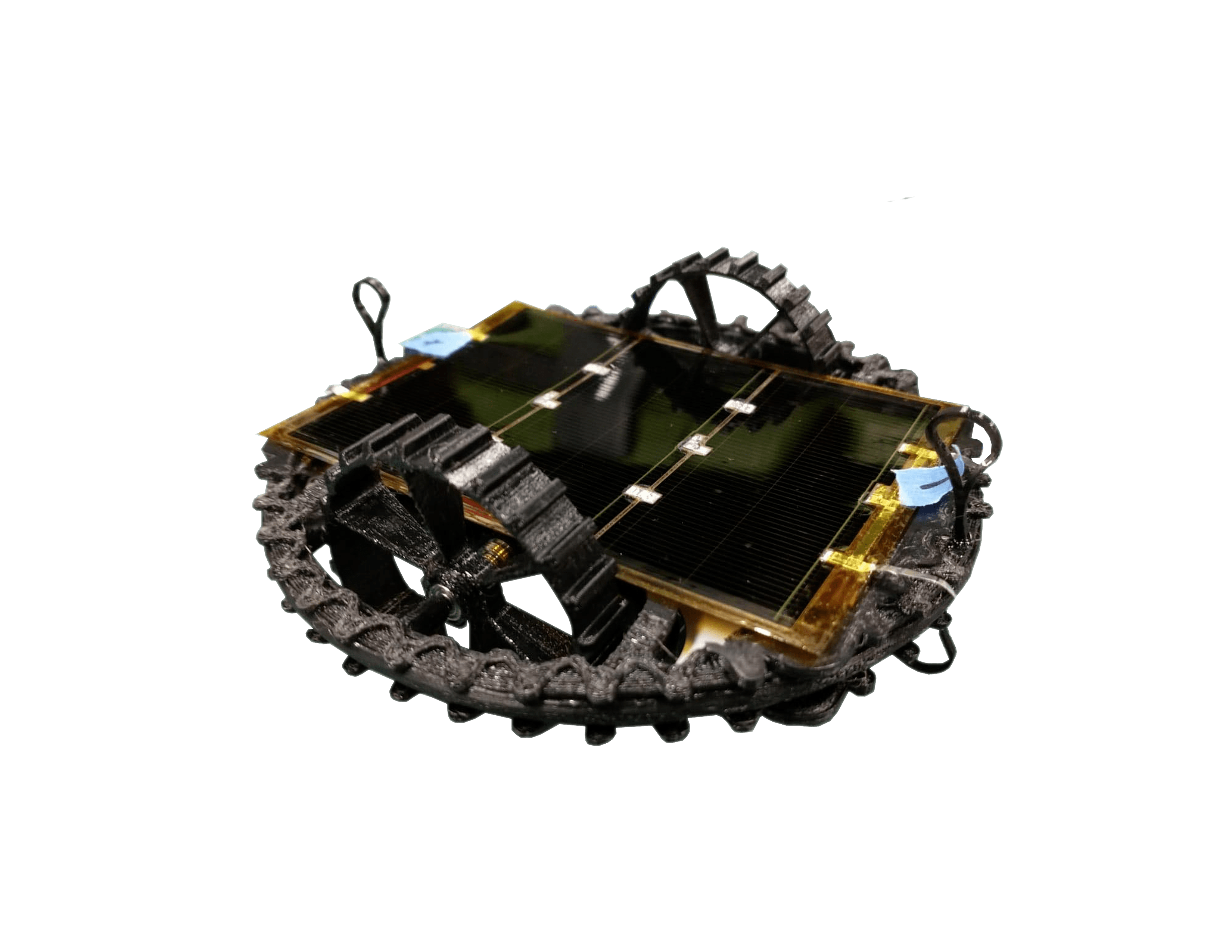
Robots: sistema de cinco unidades independientes, reversibles (i.e. simétricos respecto del plano medio), de 57.4 gramos cada una y con dimensiones externas totales de 120 mm x 54 mm:
Electronics: Unique PCB containing: power system, voltage regulation, emergency power system (Dt > 60 sec), on-board computer, communication system and directional field intensity sensors in nine different bands of 20 kHz wide between 2473 and 2495 MHz, current, voltage, temperature sensors, magnetic field emitter at 20Hz, gyroscopes, 3D accelerometers and magnetometers and omnidirectional electrical omni connectors
System of 2 state-of-the-art Gallium Arsenide solar panels.
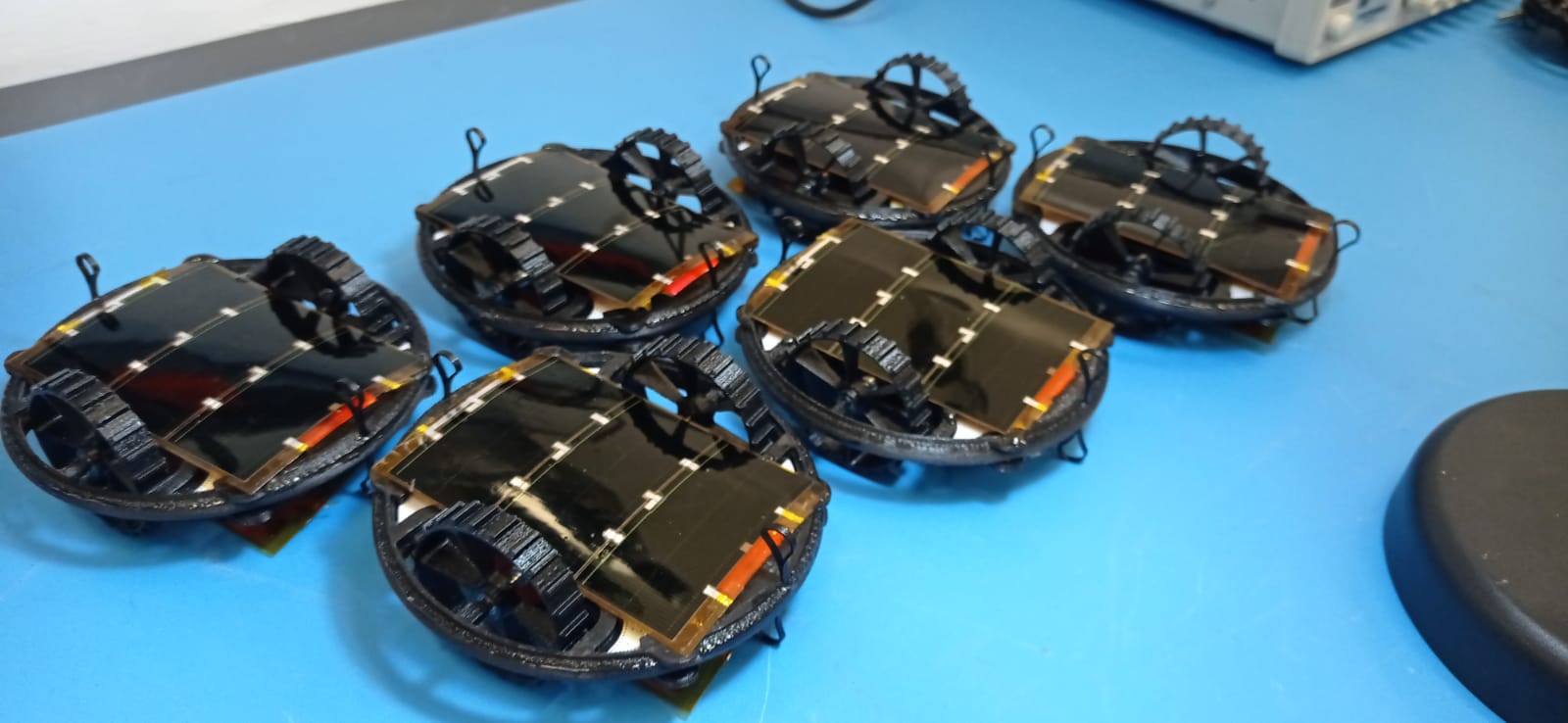
TTDM: Telemetry, telecommand and deployment module, with total mass of less than 140 grams:
Electronics: A single, flexible PCB containing the following subsystems. Power Conditioning, Control, Communications, Monitoring, Interface Connector, Arming & Tripping, Cutting Mechanism, Grounding & Bonding
Mechanical structure: mechanical anchoring to the lander, support and deployment mechanism (catapult arm), cup, coping and stringing.
Interfaces with the Lander: mechanical (four screws for vibration) and electrical (power, ON/OFF, tripping, TM/TC, grounding and bonding.
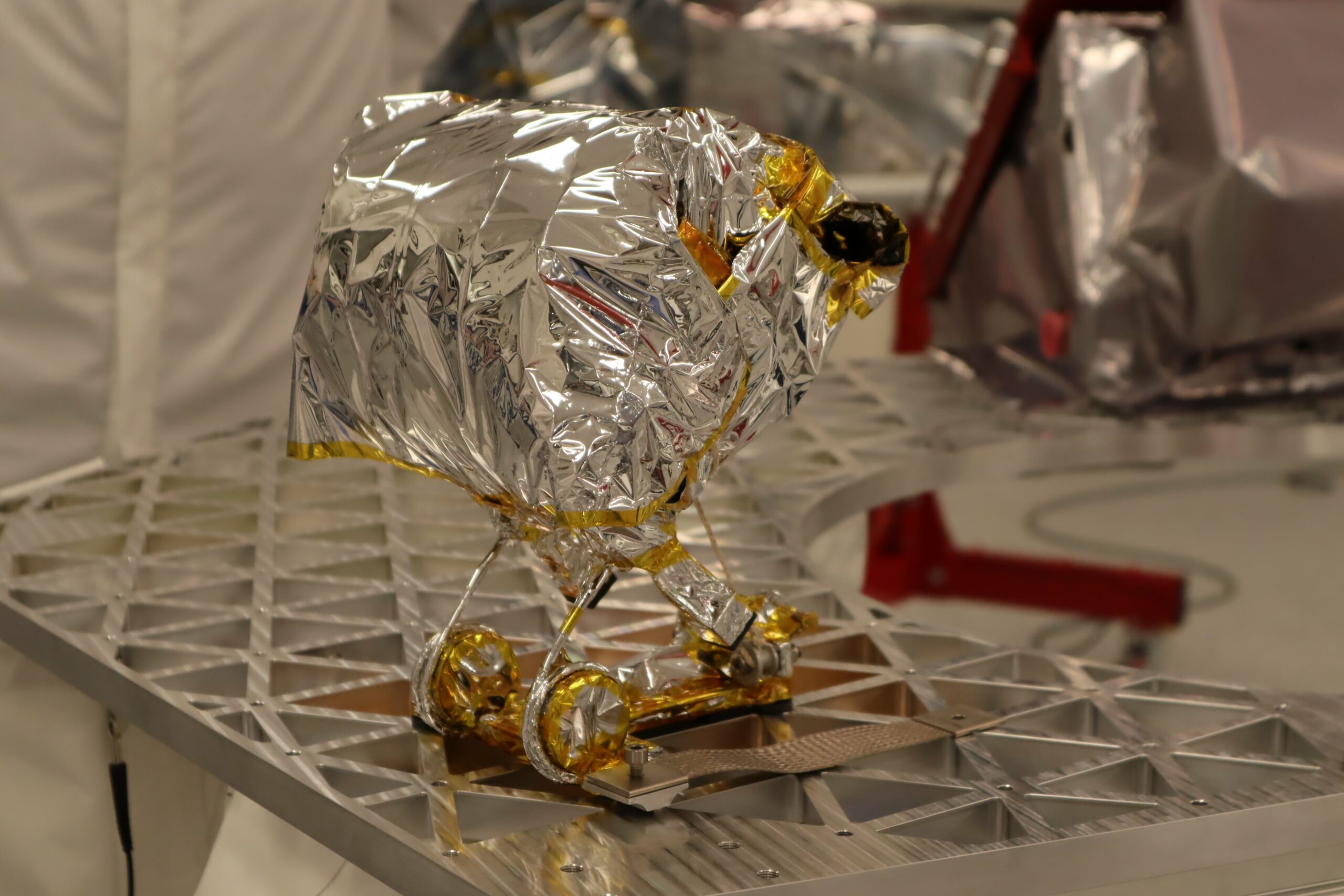


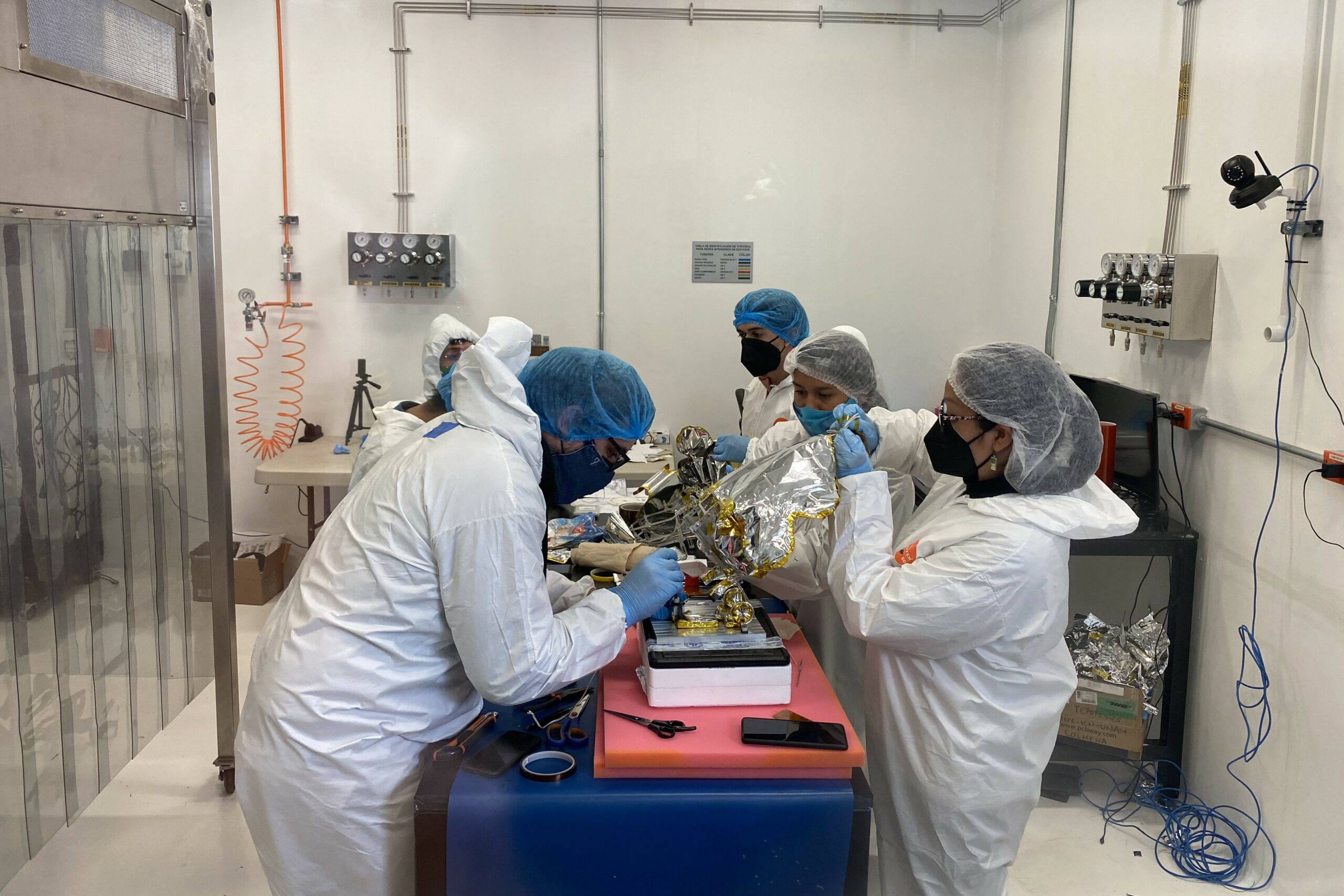

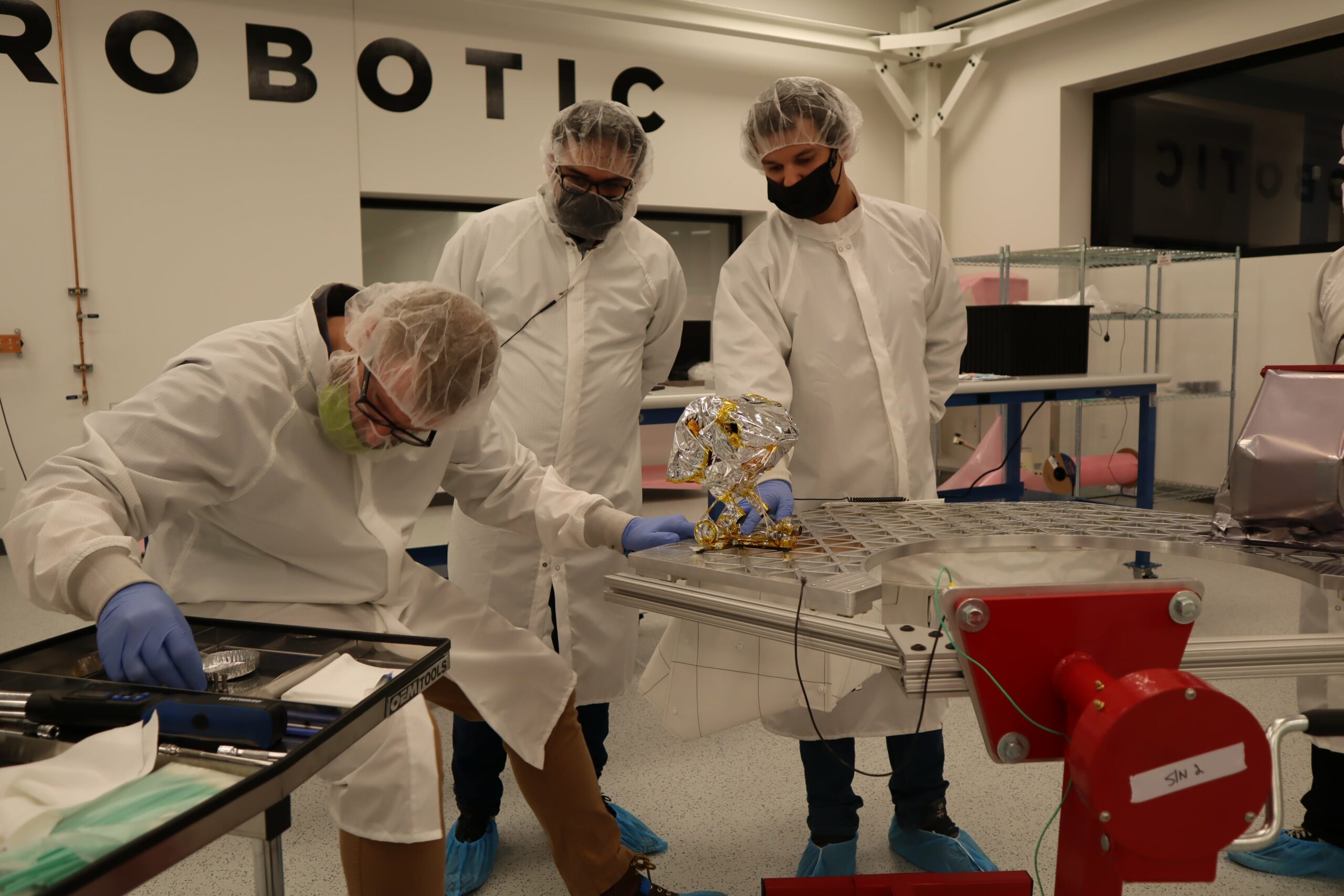
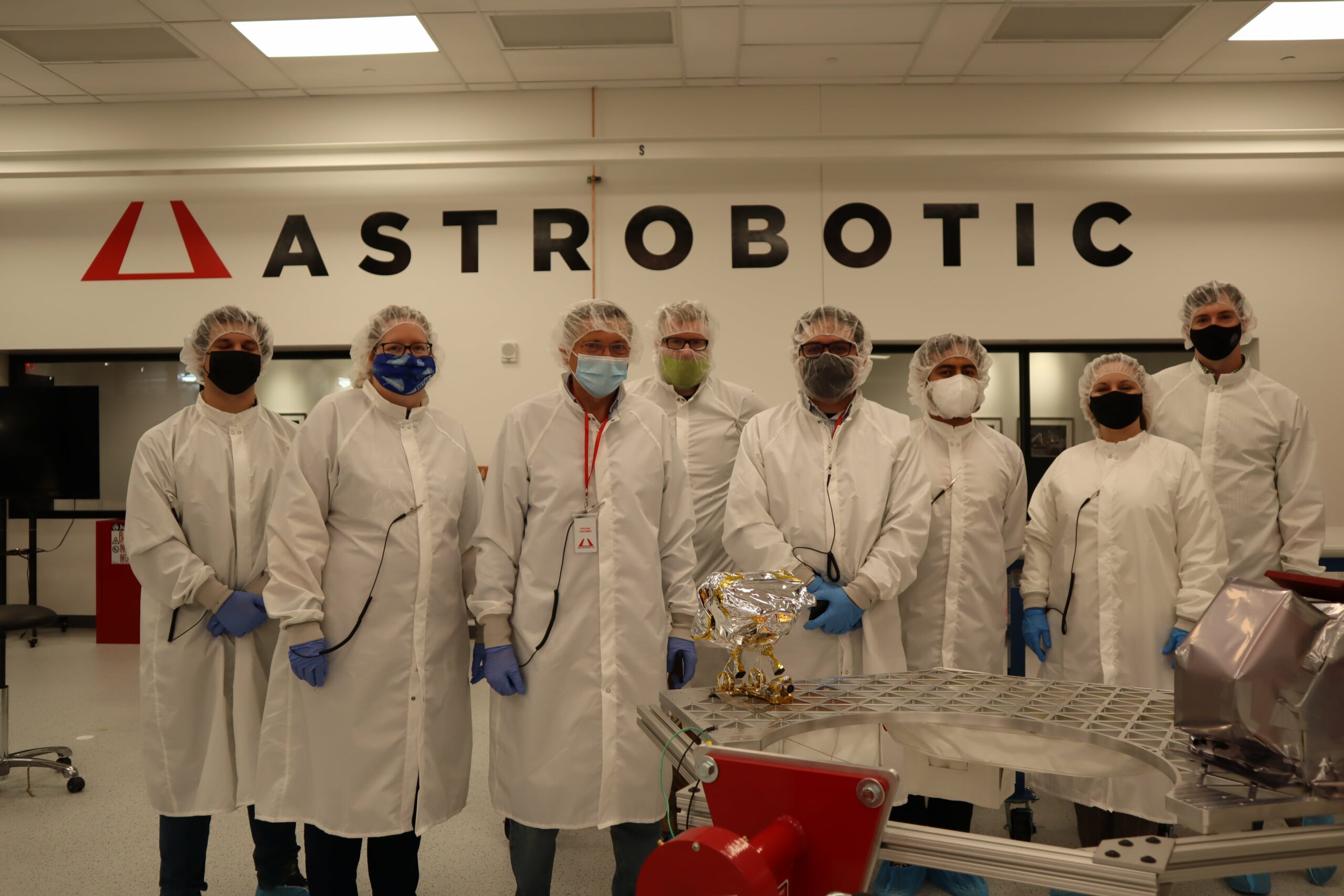
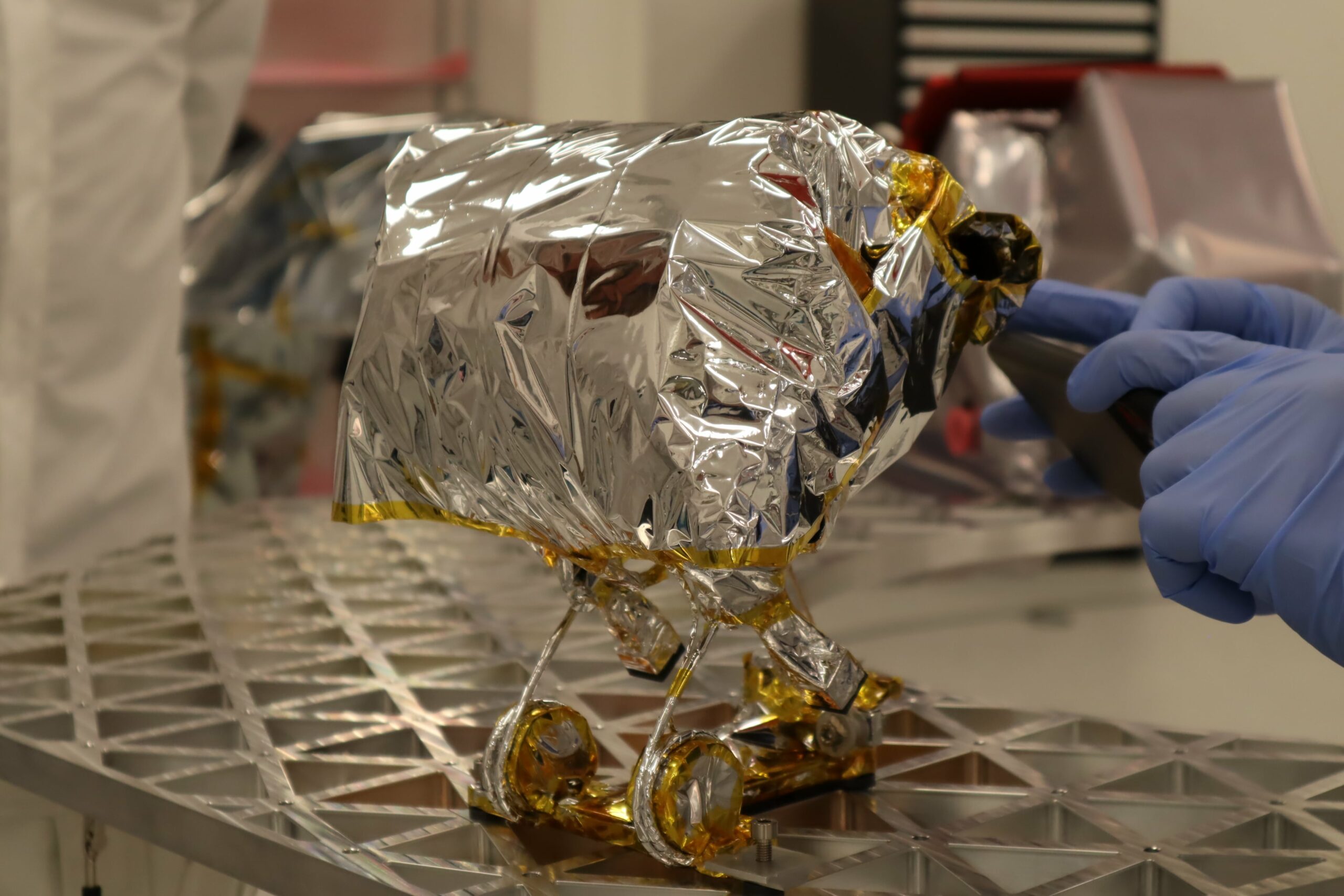
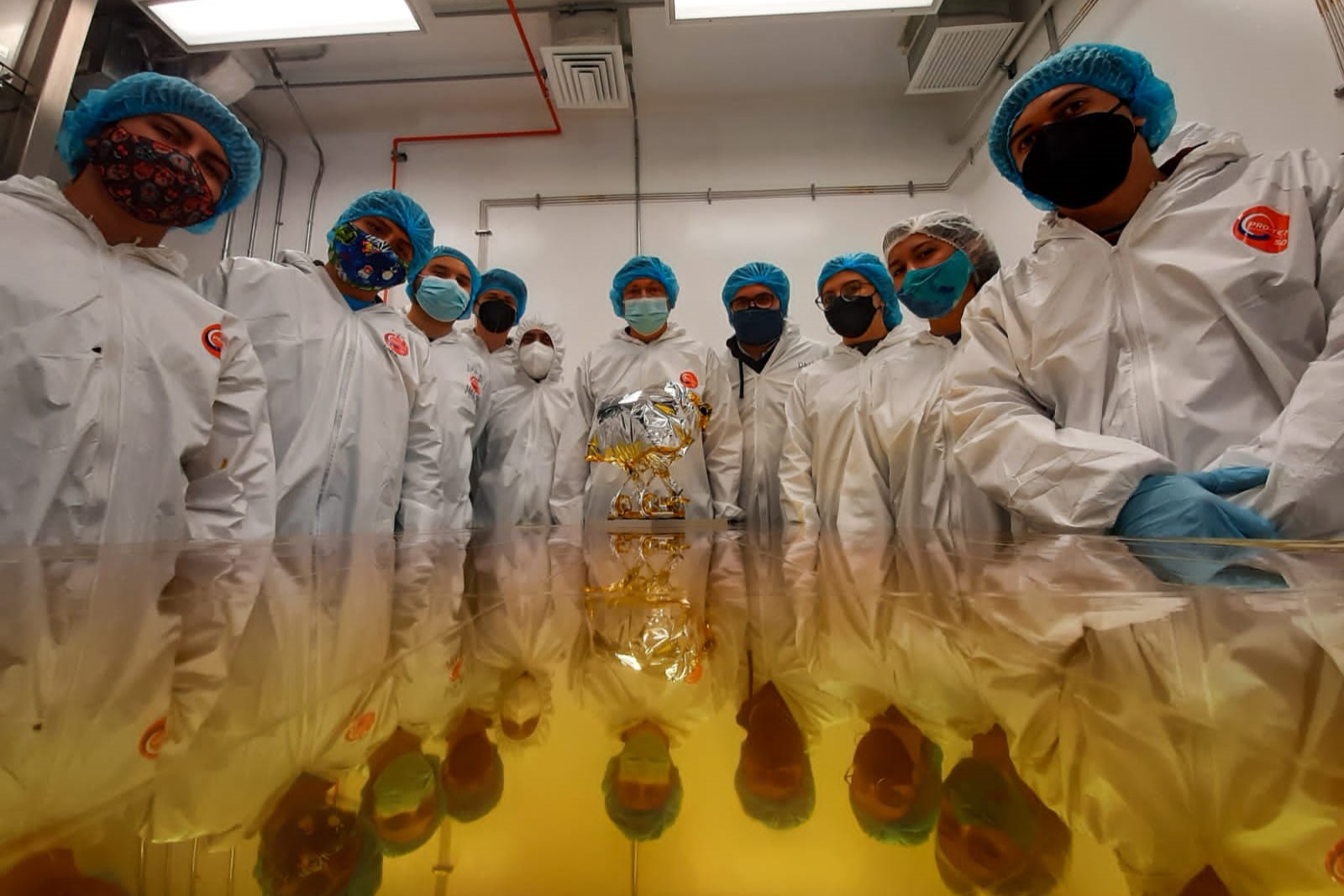
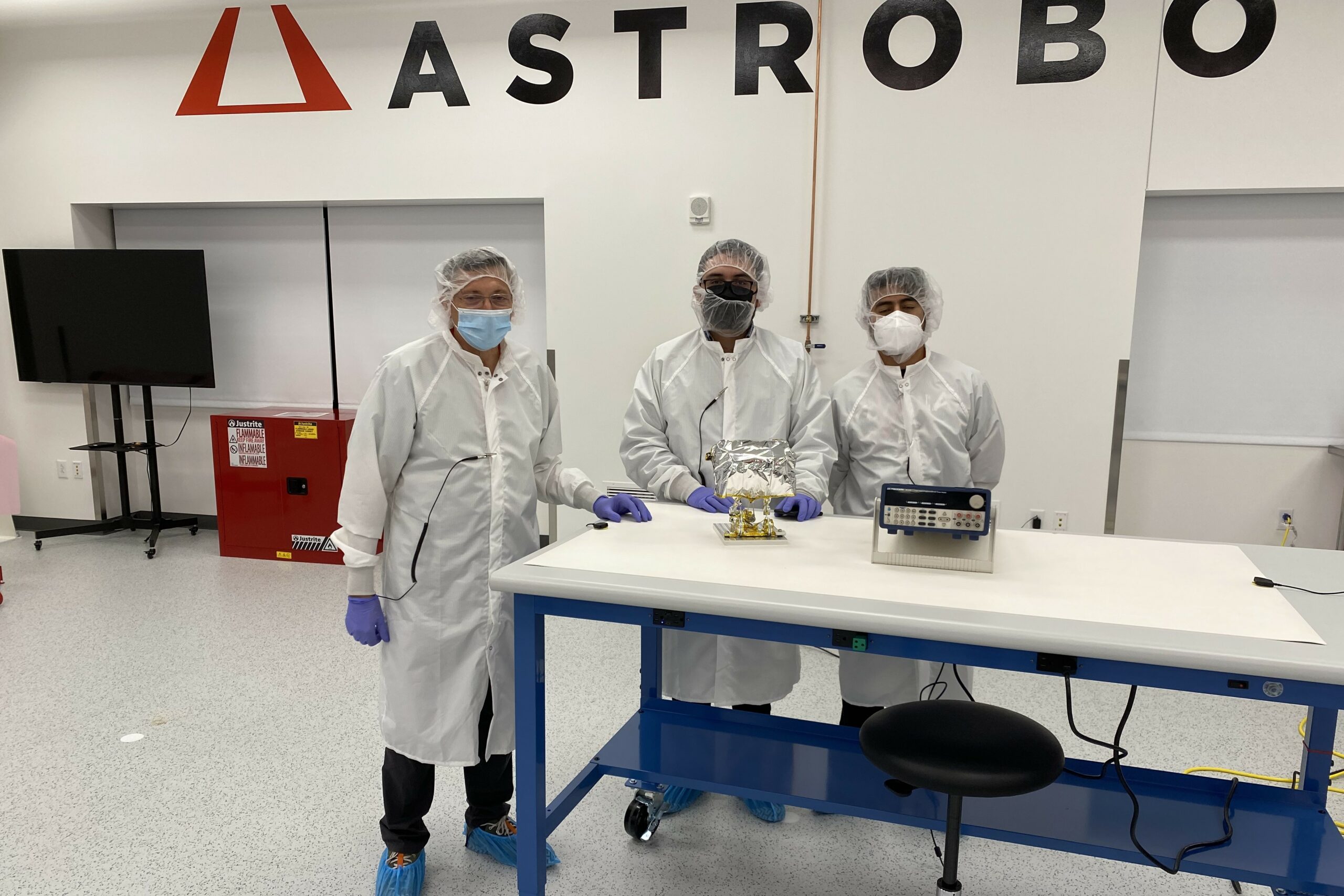
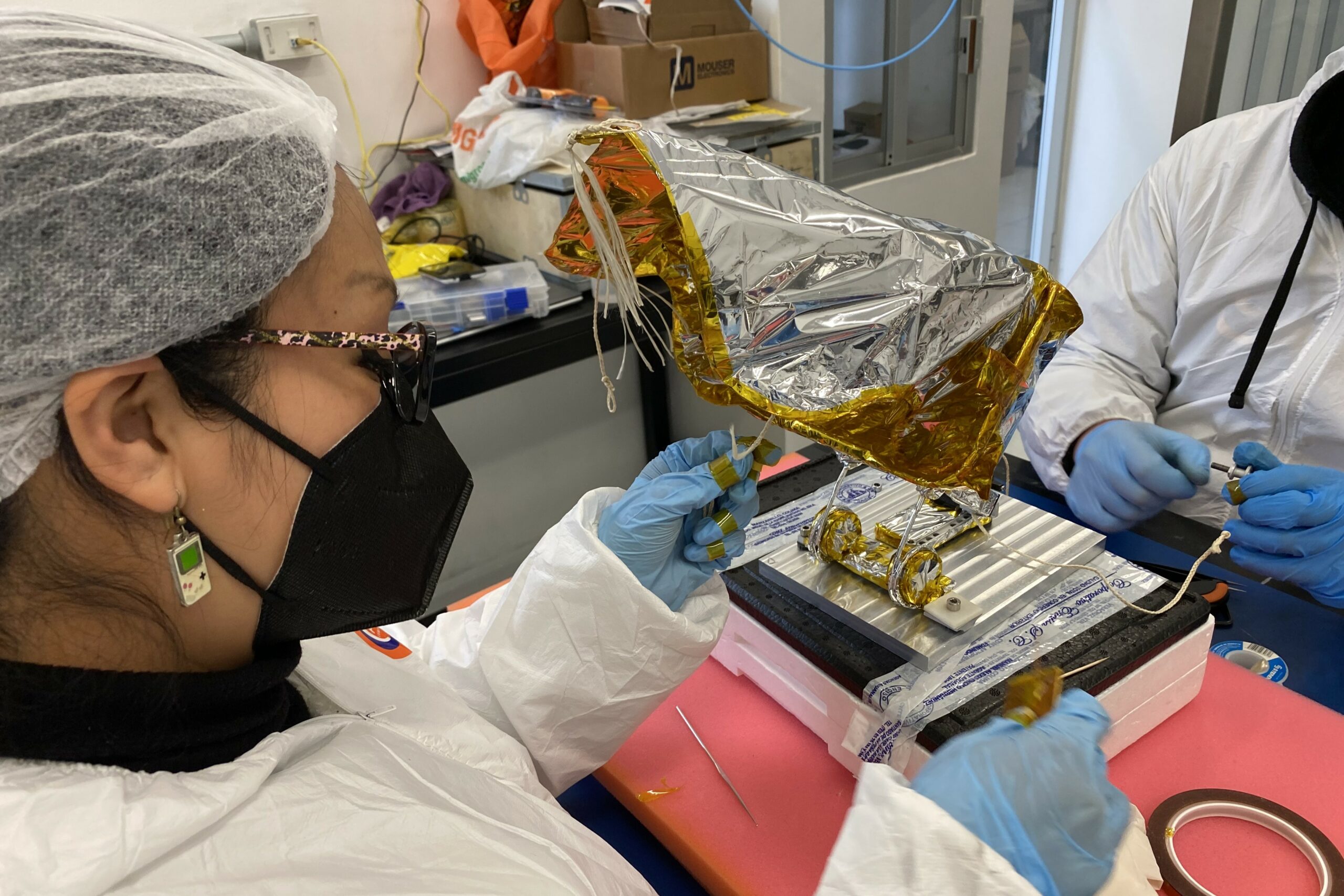
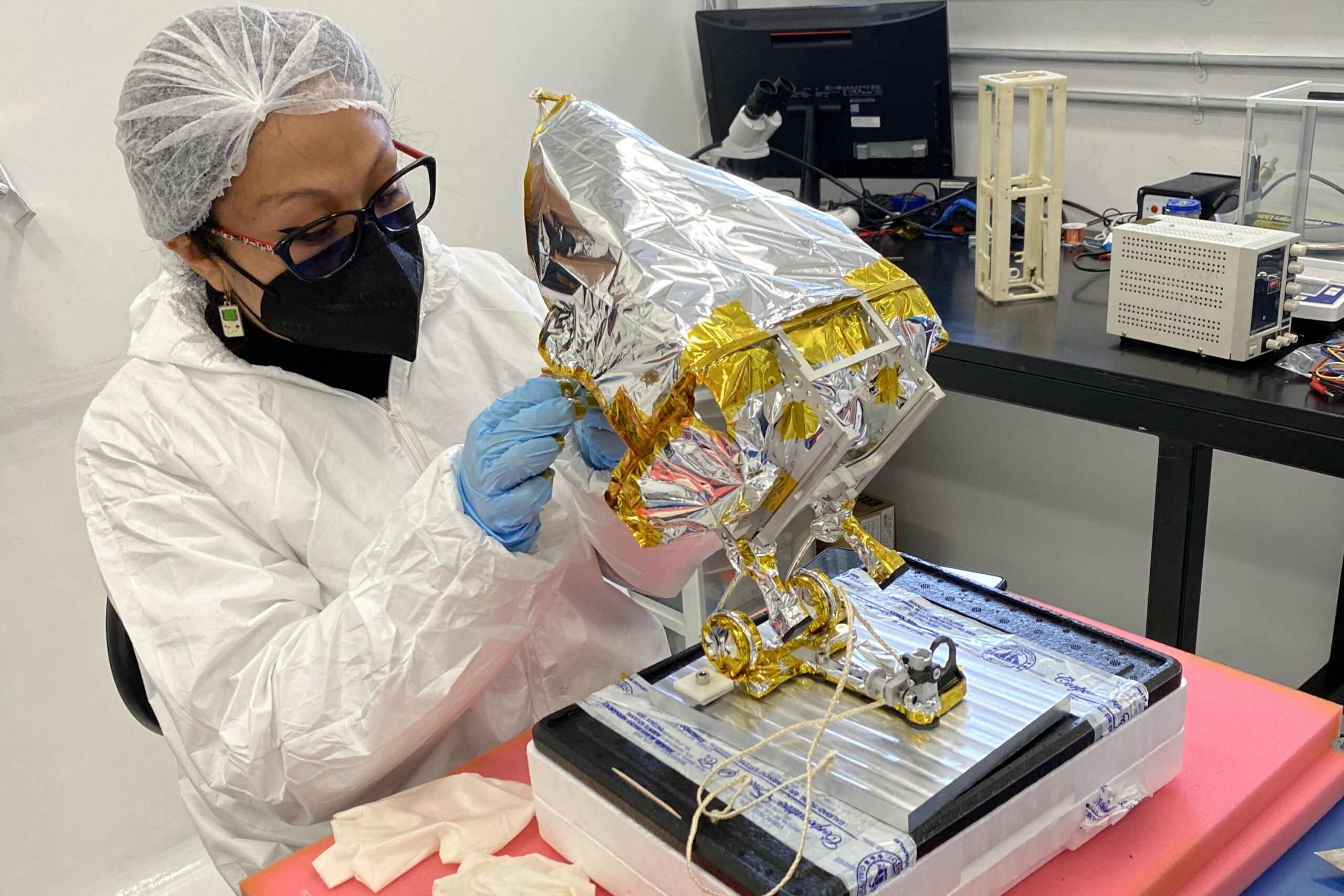
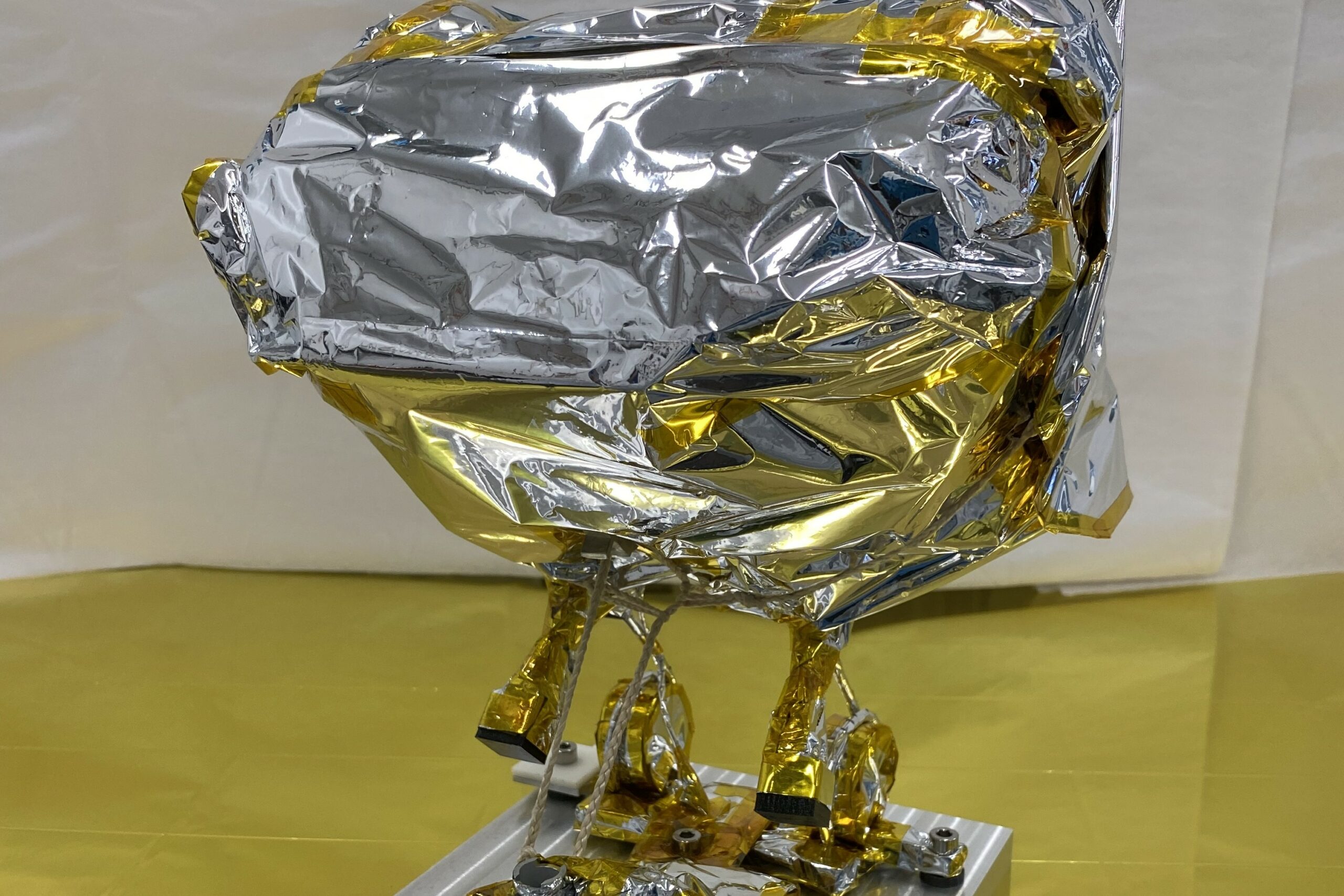
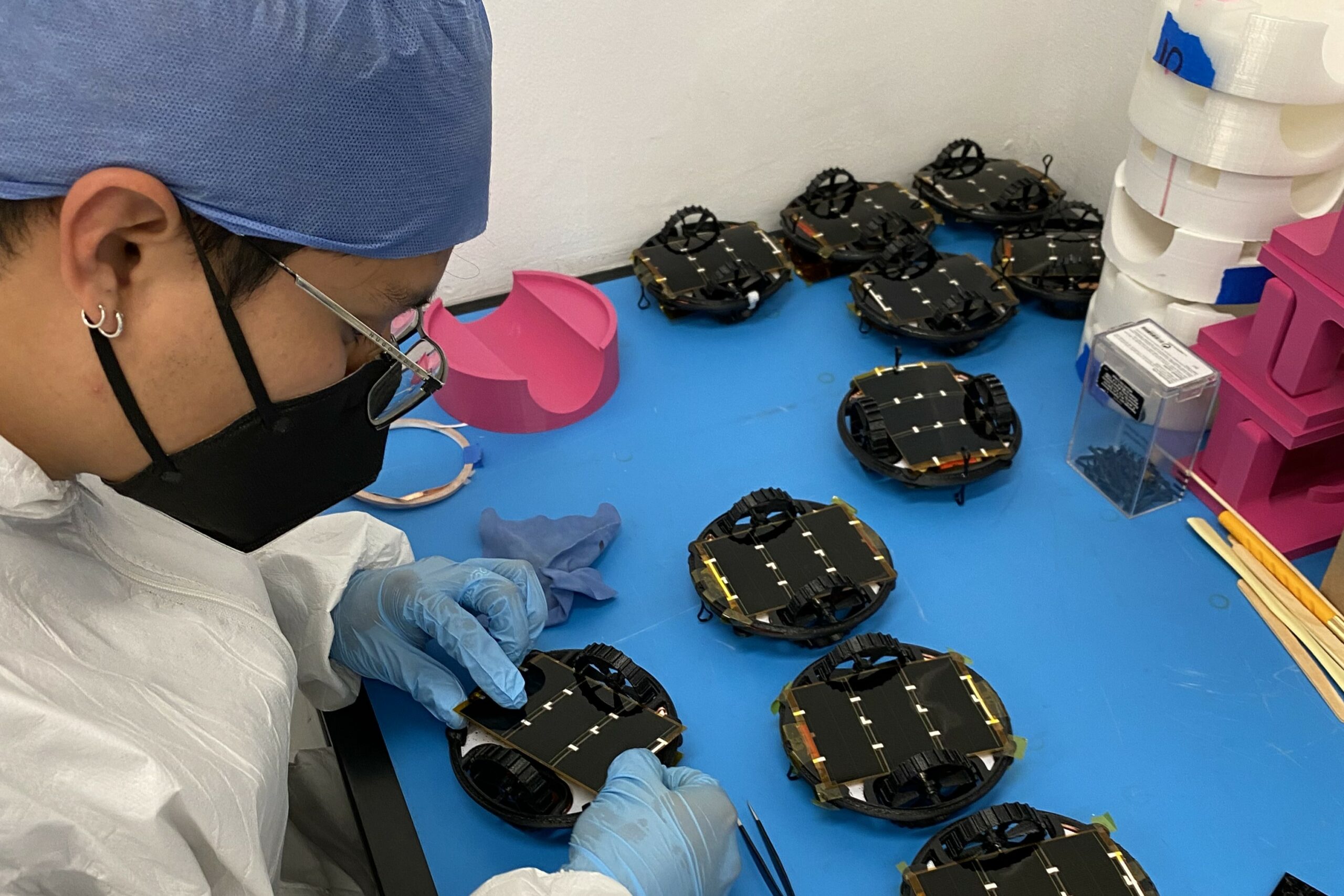
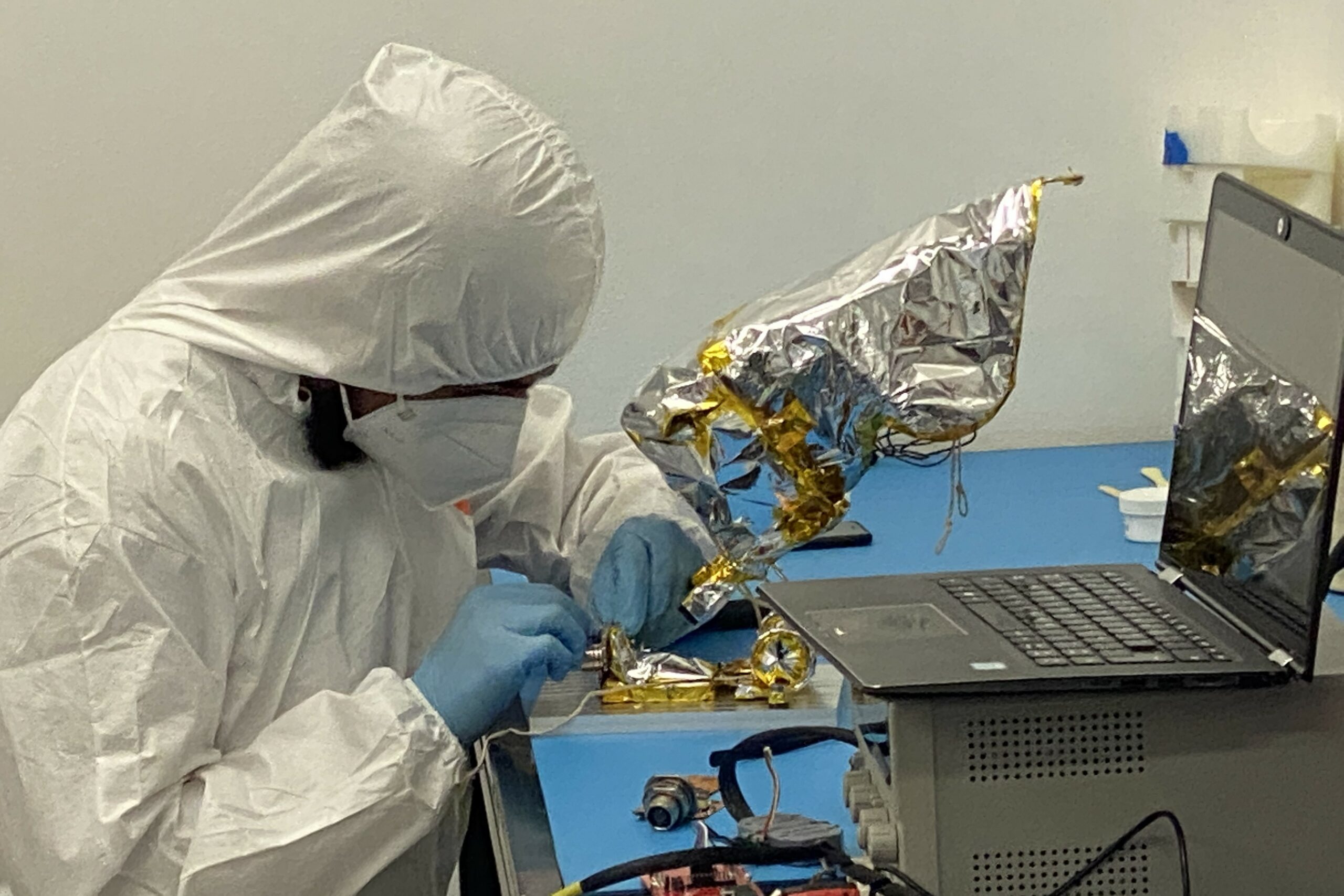
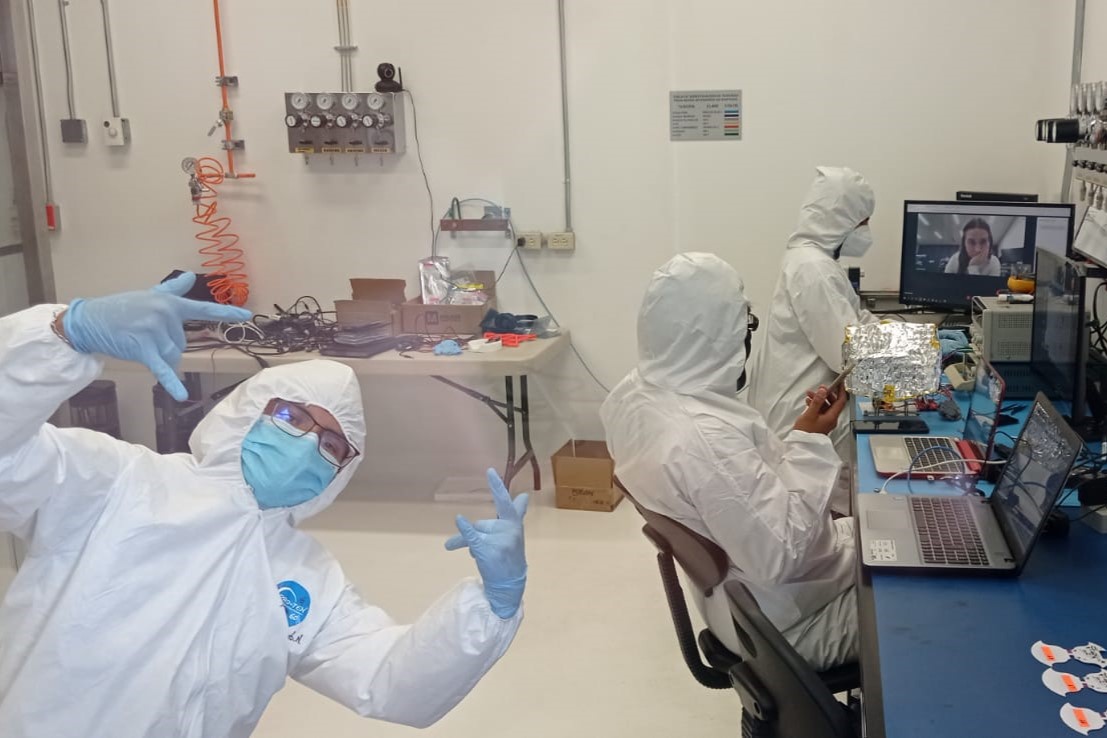
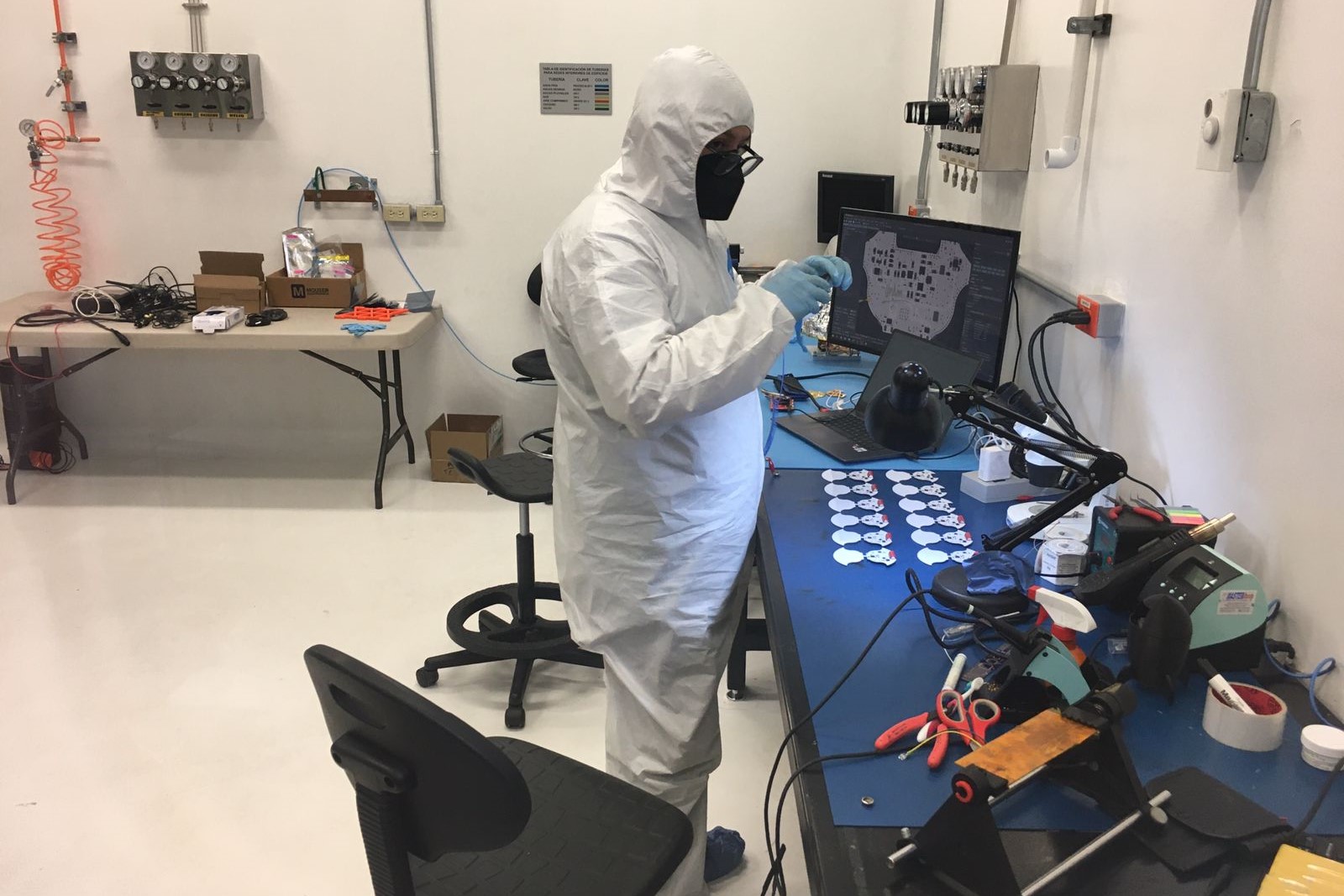
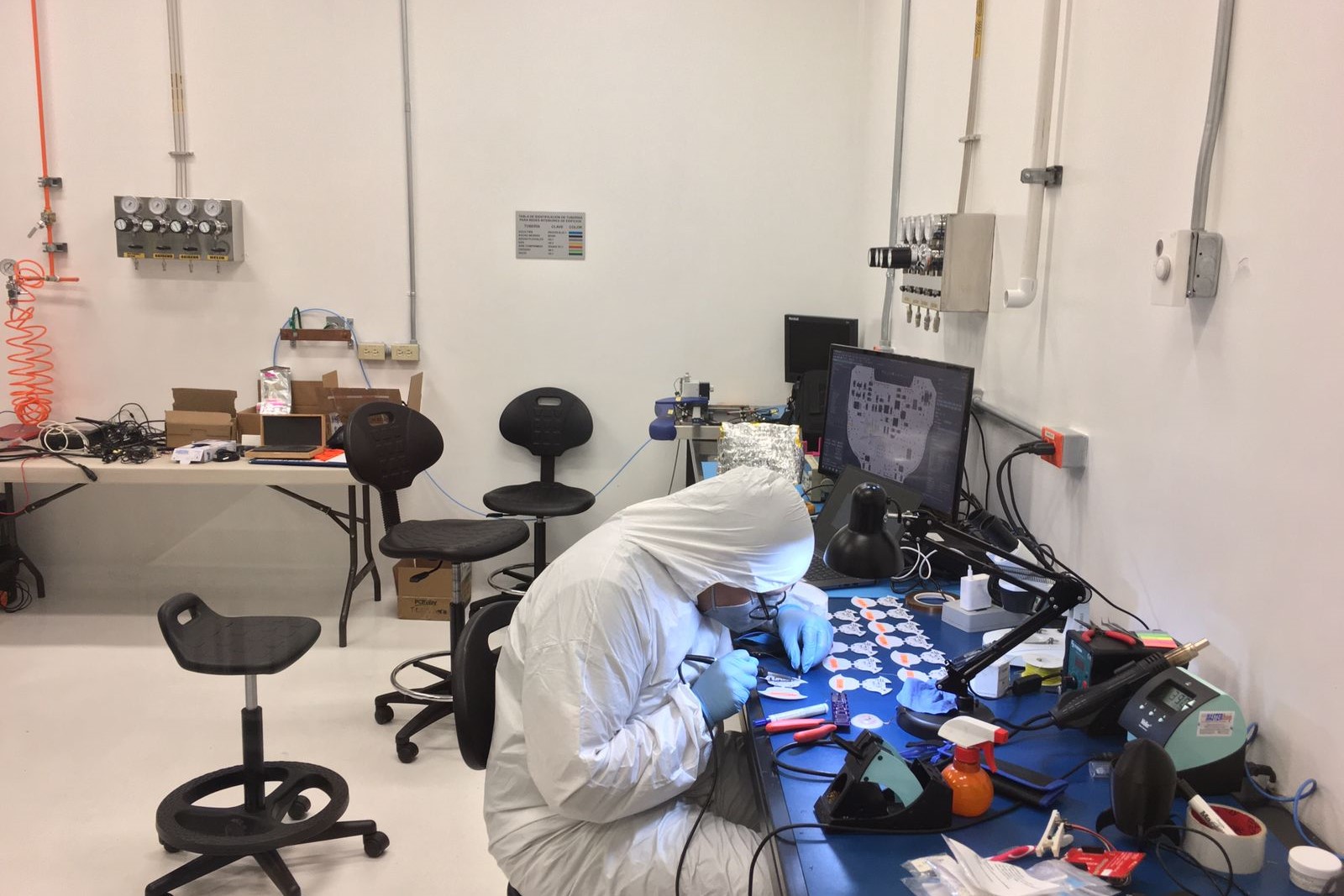
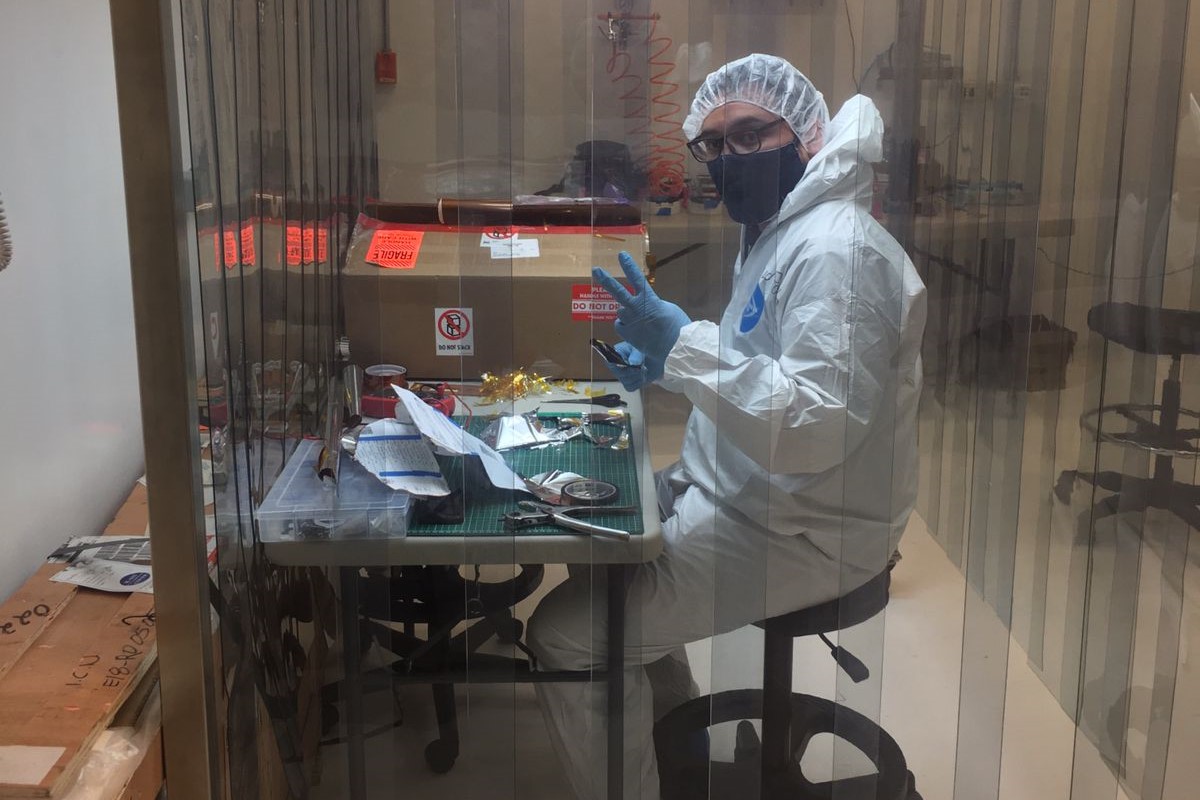
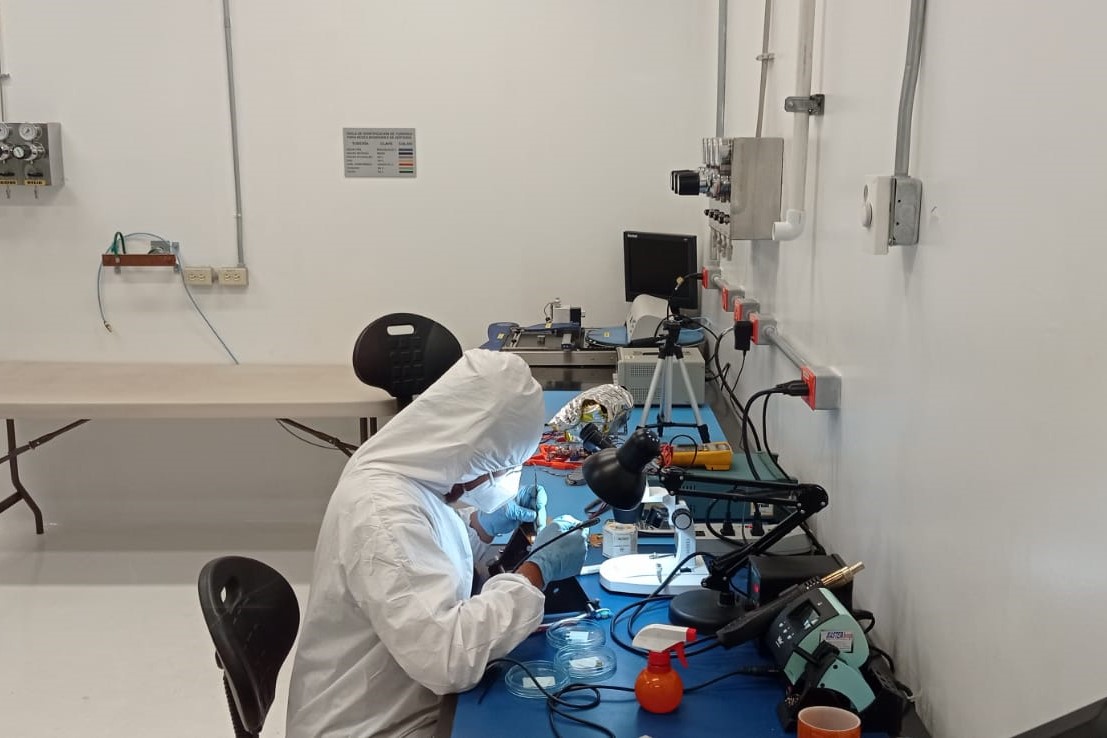
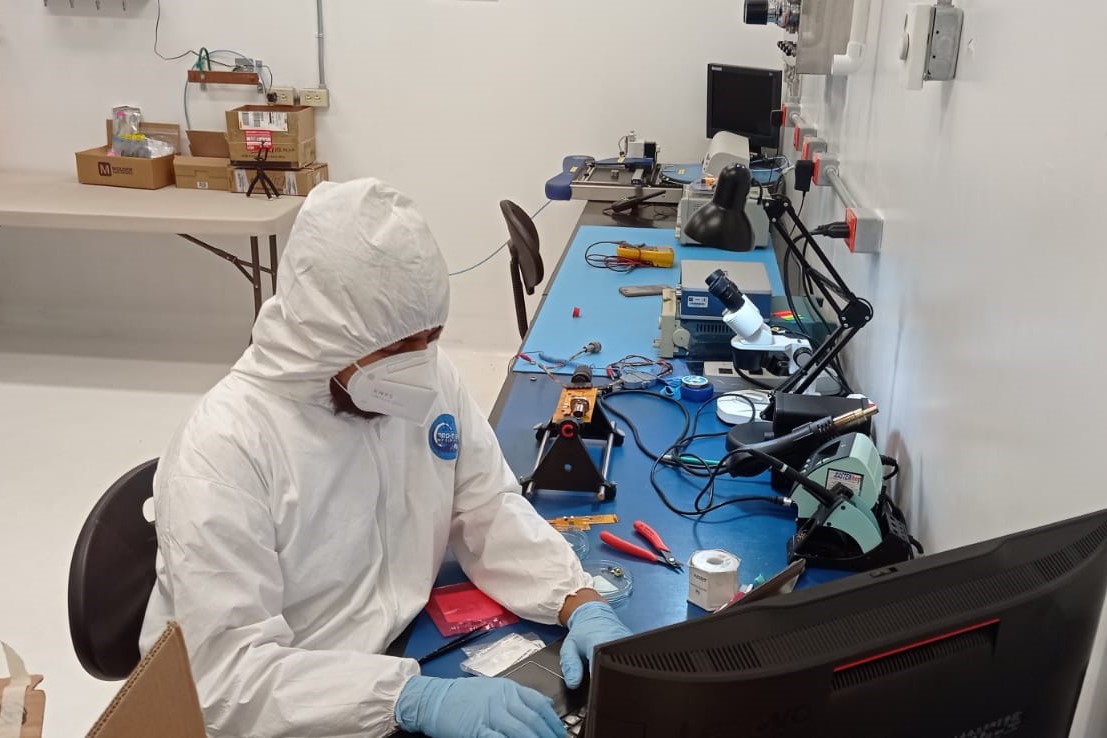
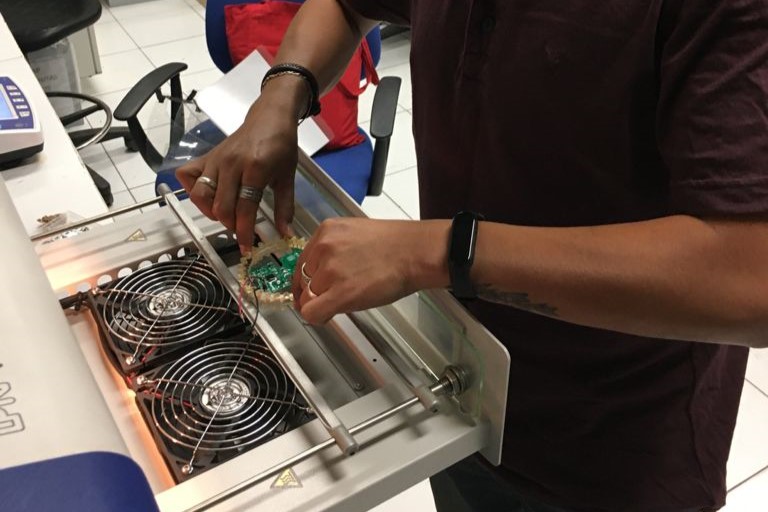
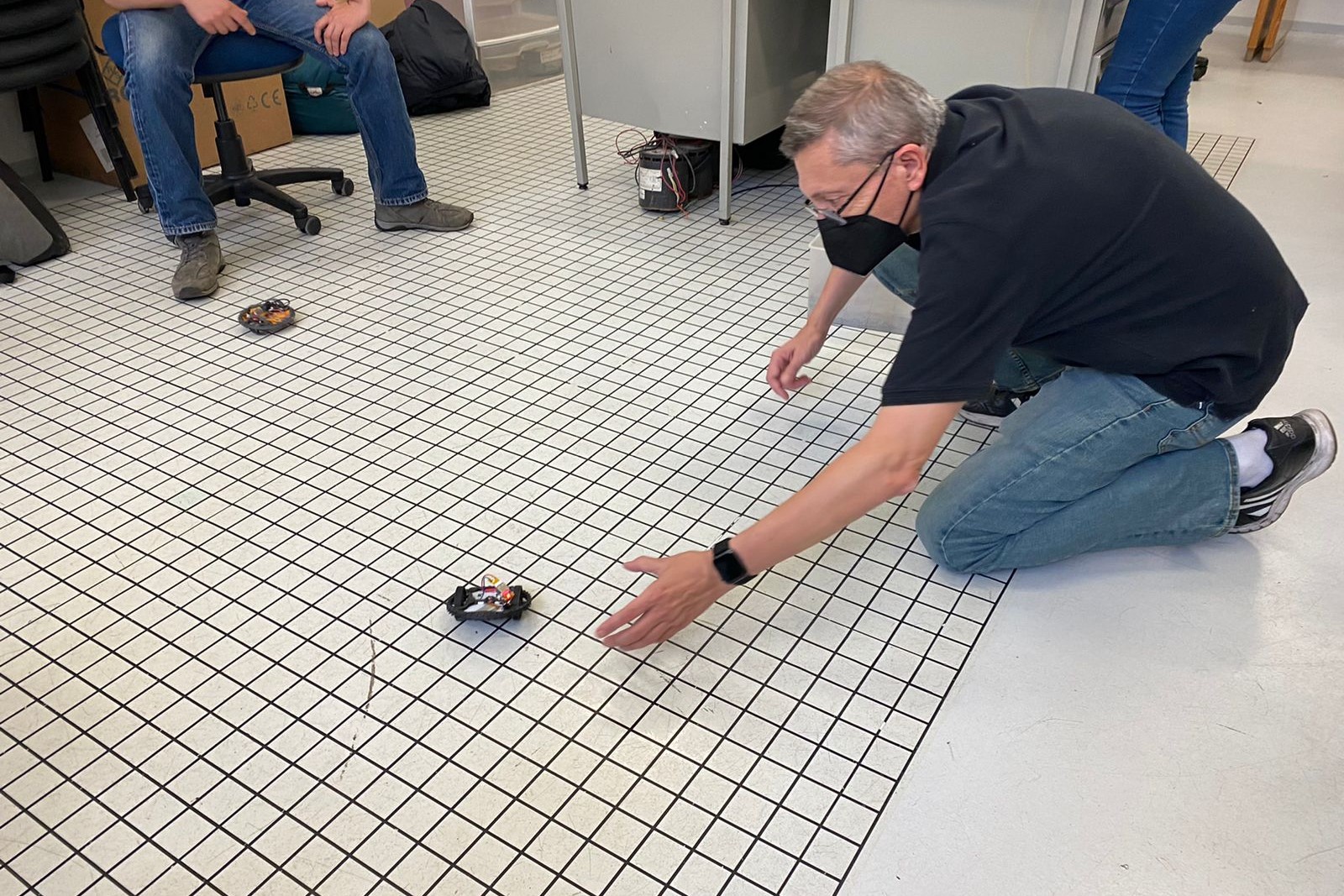

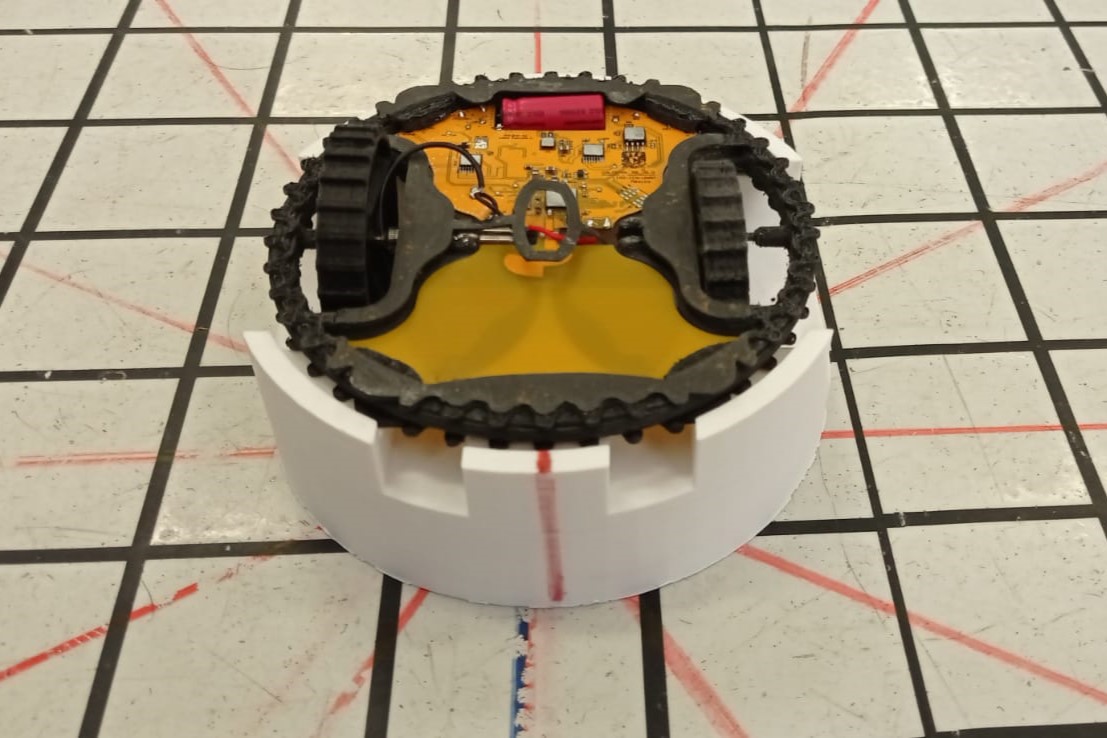
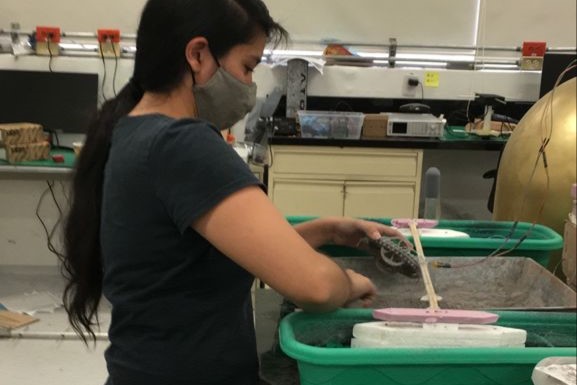
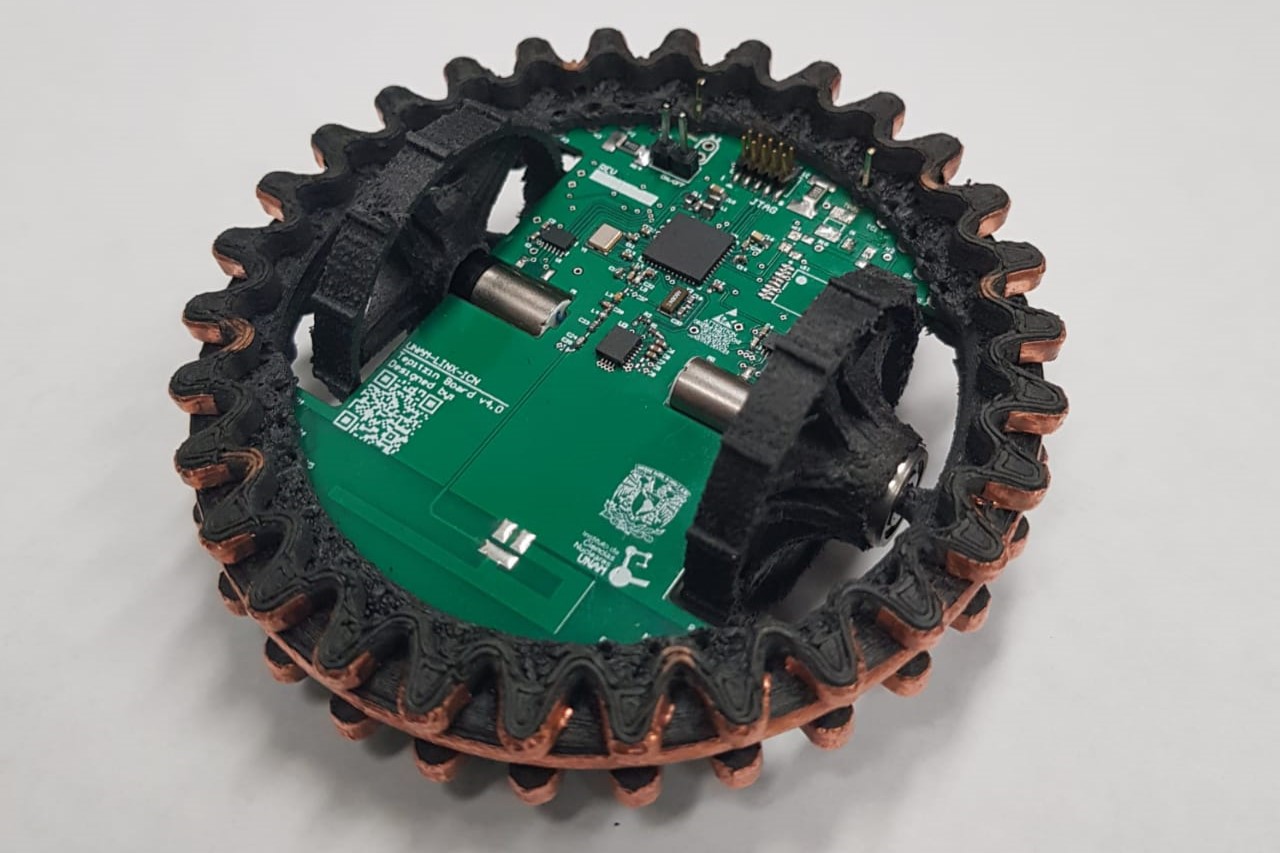
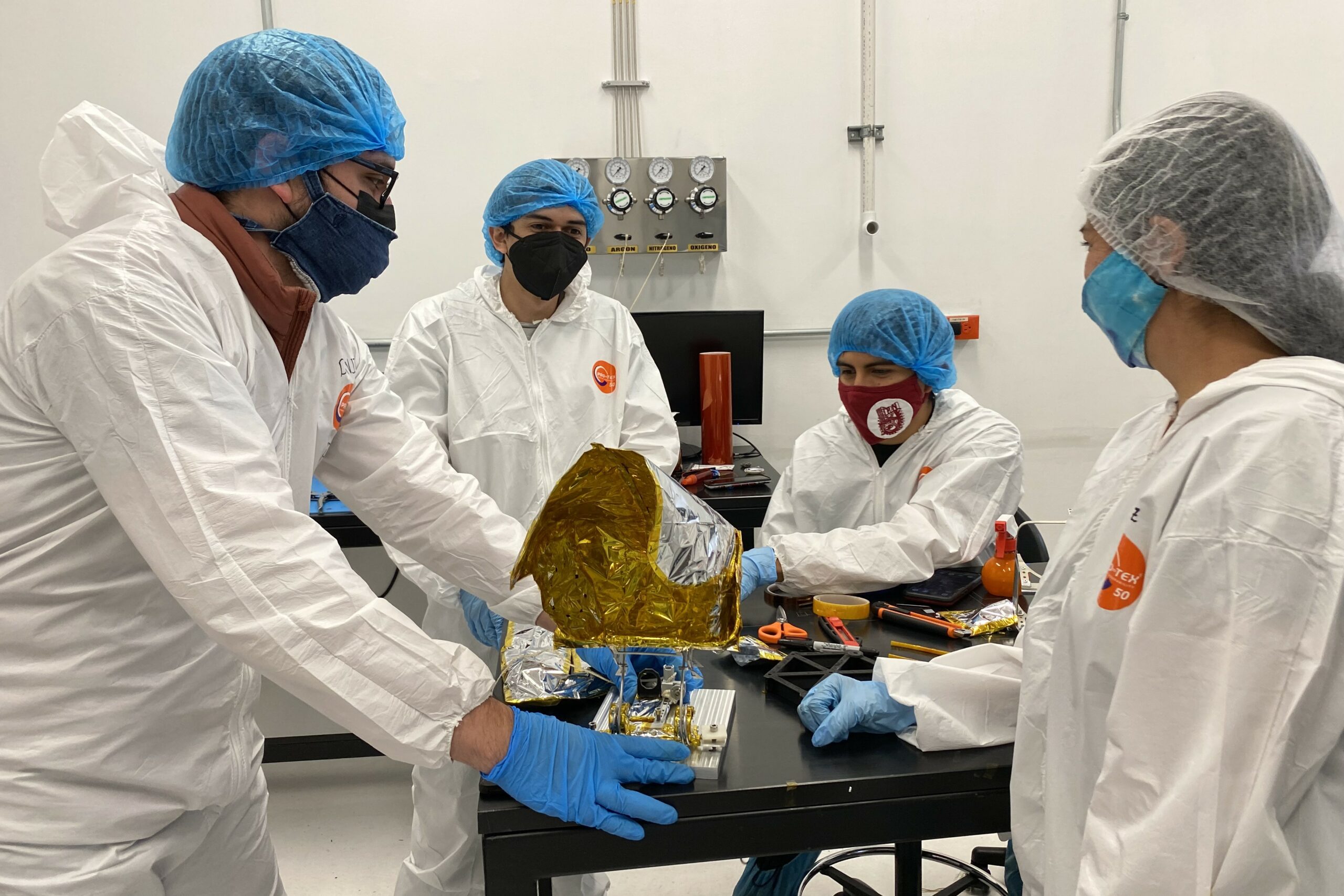
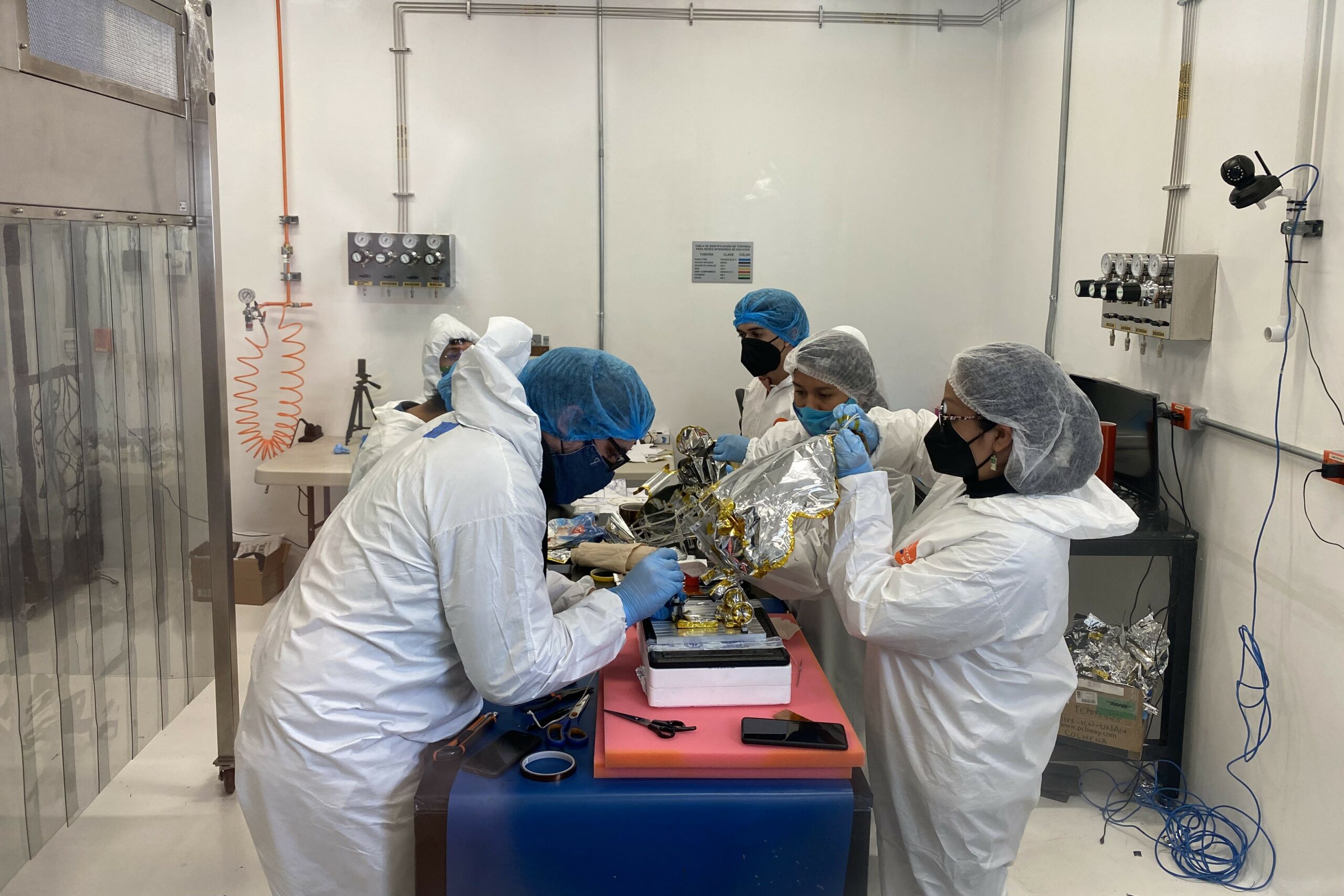
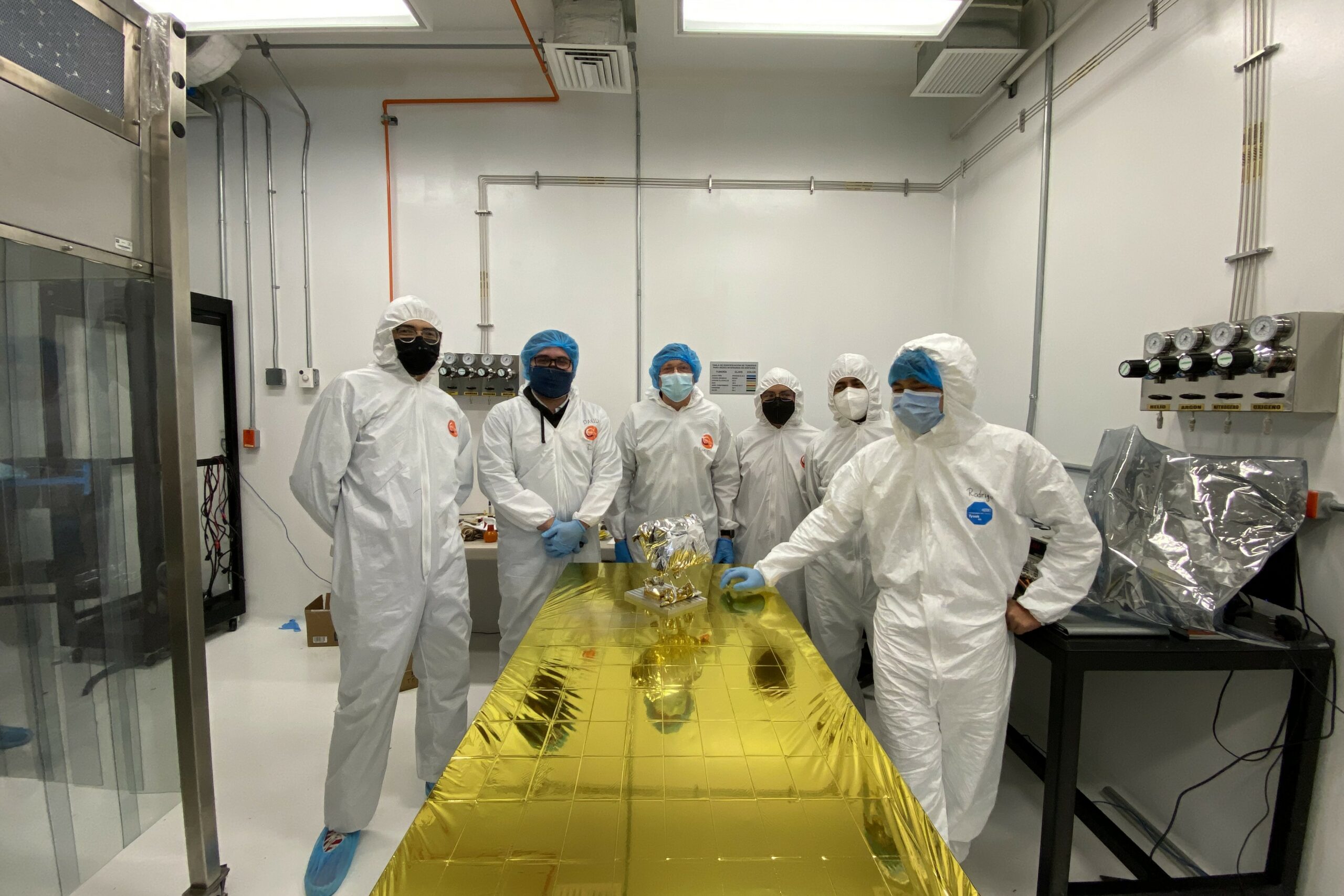
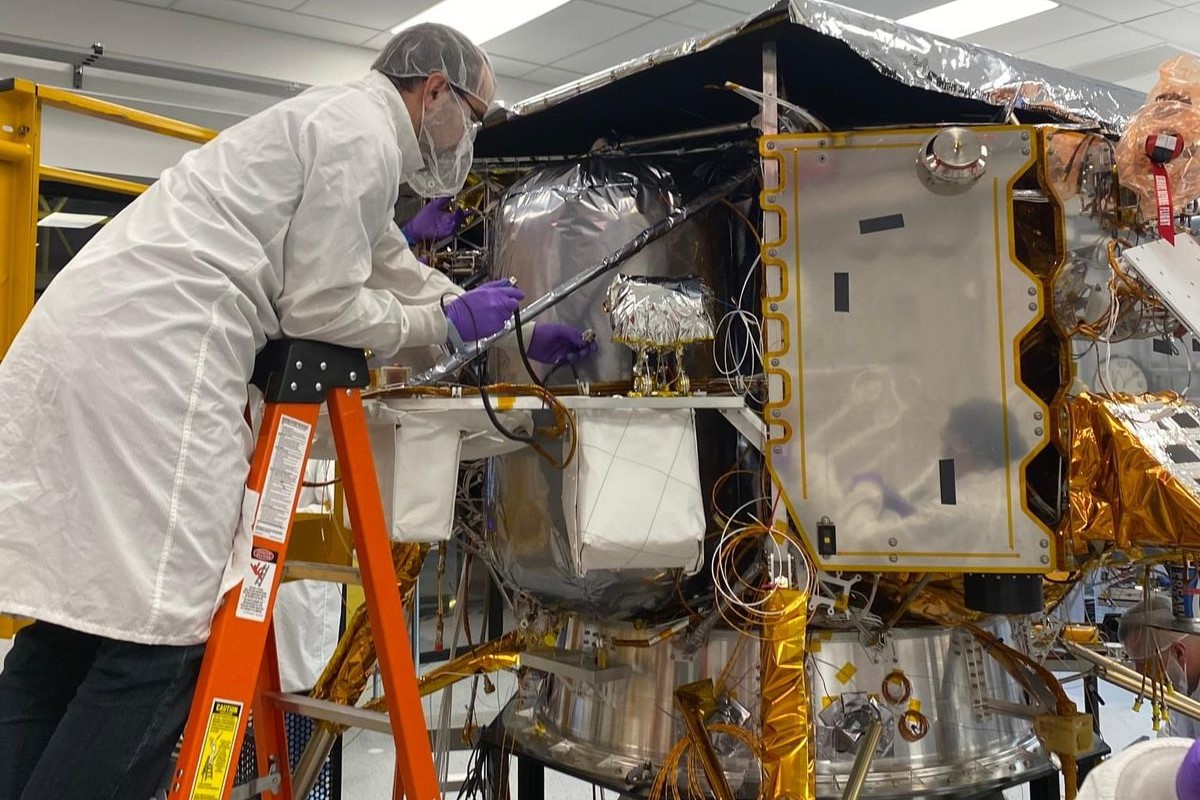
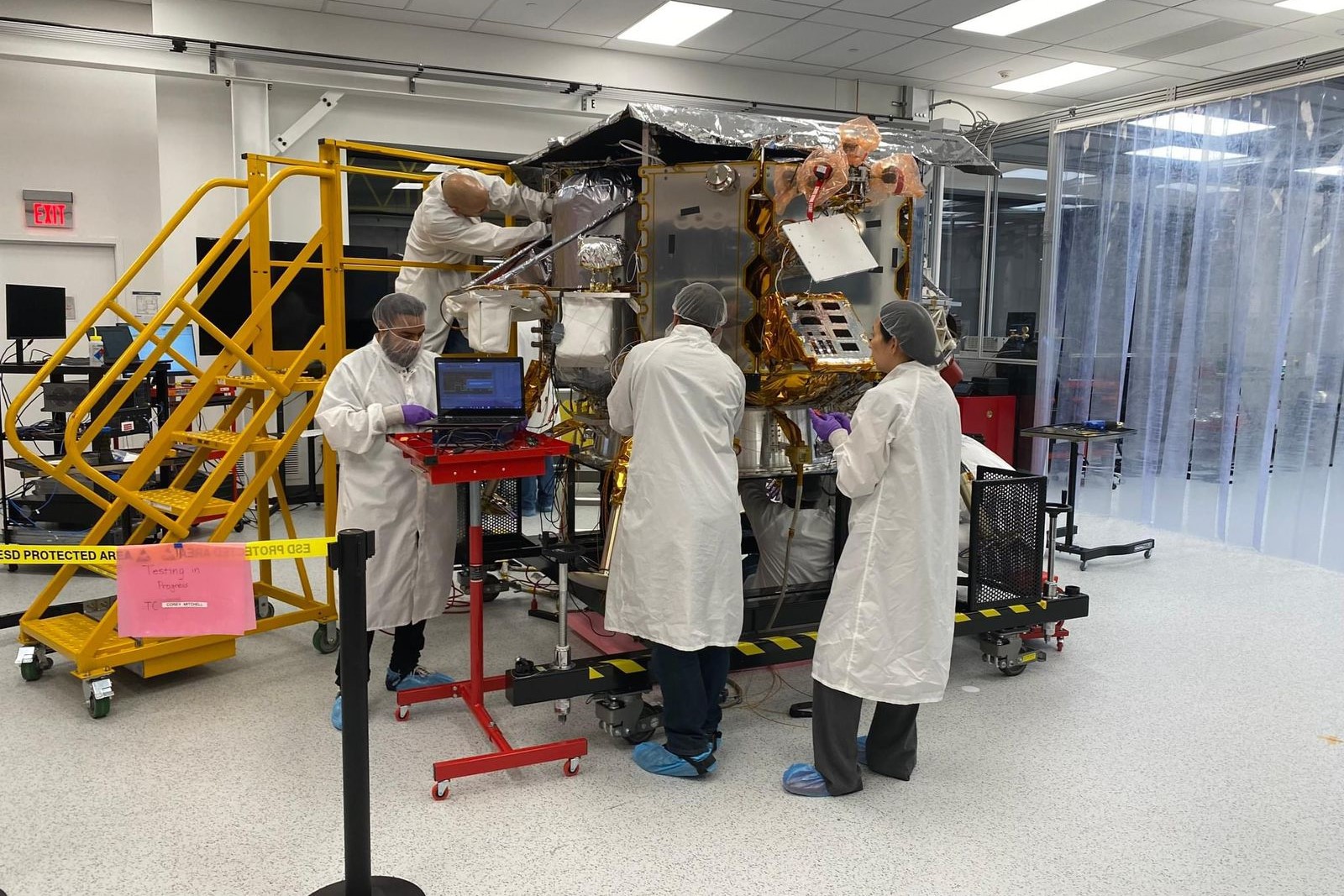
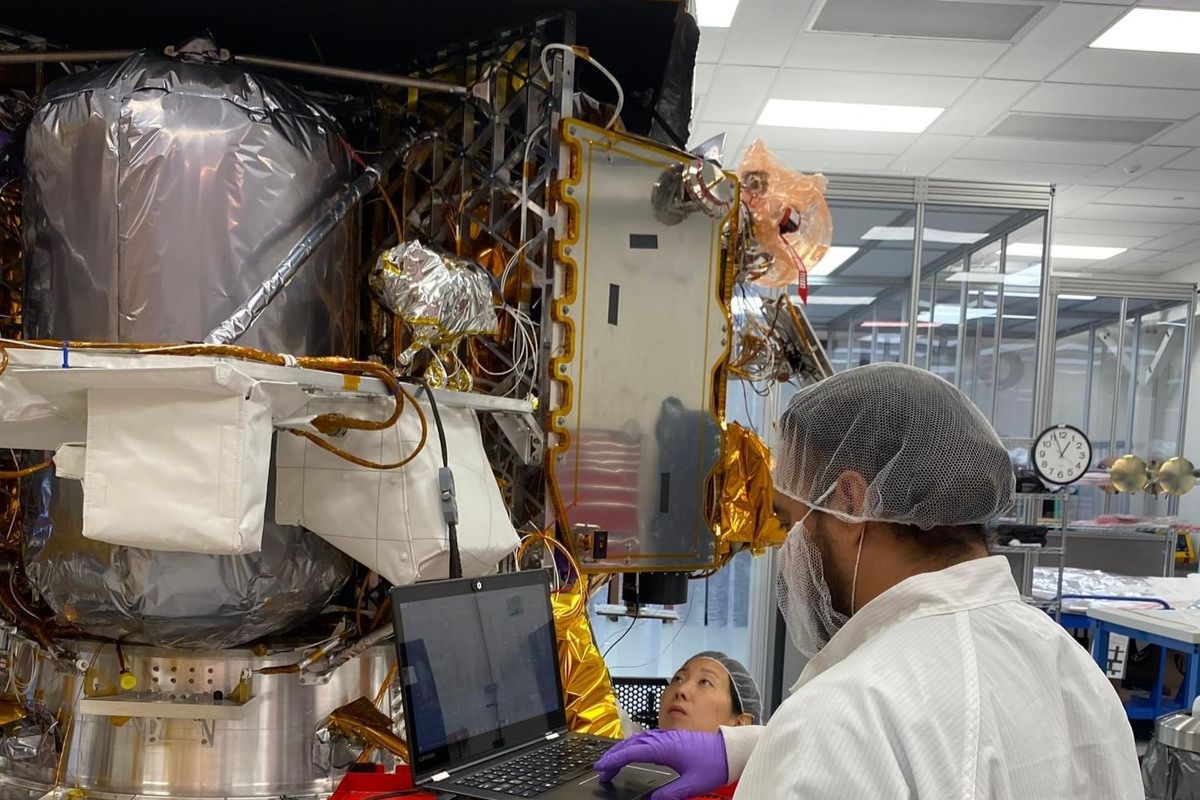
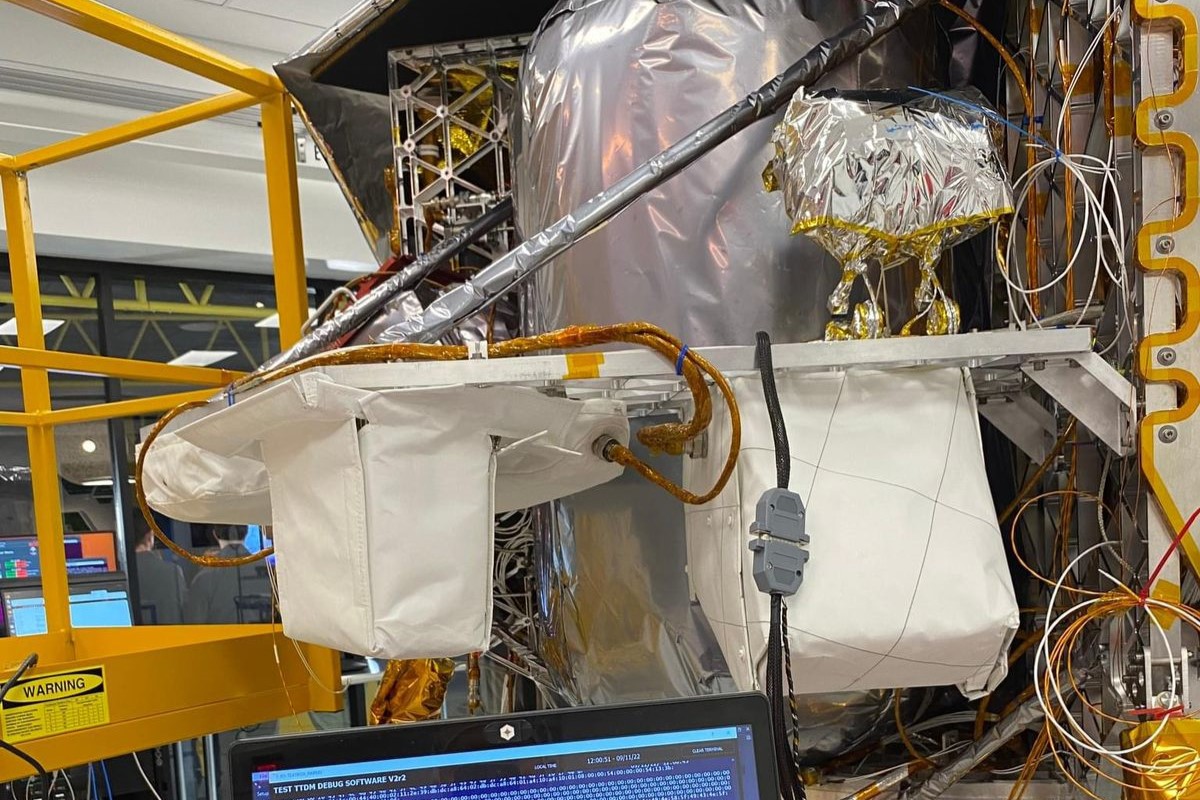
Esta es la misión más ambiciosa que está desarrollando LINX. La misión pretende demostrar la factibilidad de construir estructuras sobre superficies planetarias, utilizando enjambres de robots auto-organizados.

It is a 500 kg stratospheric telescope (flying at an altitude of about 35 km) for the observation of the atmosphere in the UV. It is a prototype of EUSO for the observation of ultra-high-energy cosmic rays.
It was built under the coordination of the French Space Agency CNES, together with Germany, Korea, Spain, the United States, Italy, France, Japan, Mexico and Poland. It flew over Canada in 2014.
LINX contributed the housekeeping and low-voltage power systems and was responsible for the instrument's thermal architecture.
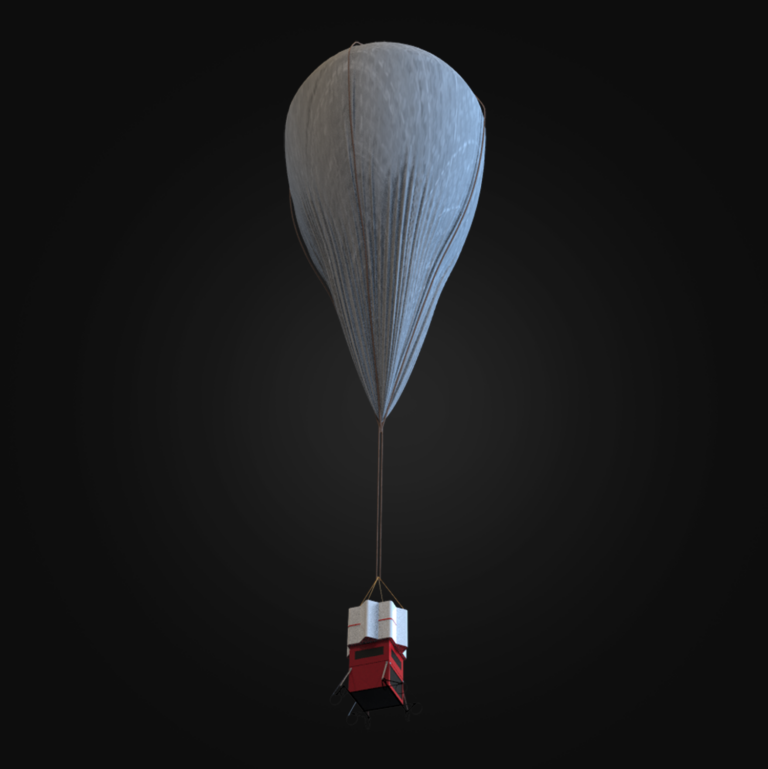
It is a more advanced and complex stratospheric telescope than EUSO-Balloon, weighing 1,500 kg, for observing the atmosphere in the UV. It is a prototype of EUSO for the observation of ultra-high-energy cosmic rays.
It was built under the coordination of NASA, along with Germany, the United States, Italy, France, Japan, Mexico and Poland. It was launched from New Zealand in April 2017. Fly in a super-pressure balloon, NASA's most advanced balloon.
LINX contributed two new housekeeping systems and low-voltage power systems. He was responsible for the thermal architecture of the instrument and for defining the thermal interface with NASA's nacelle systems.
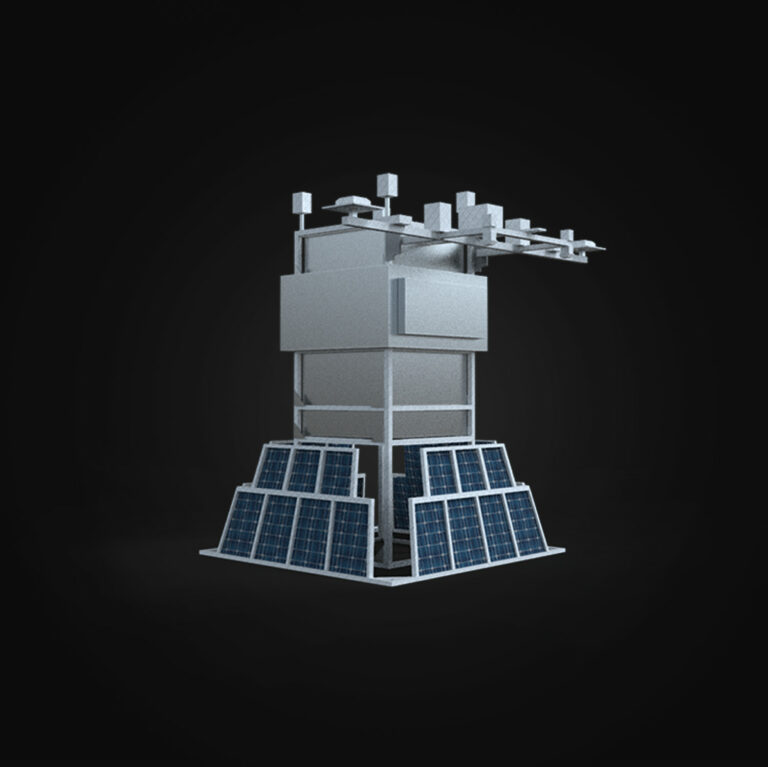
It's a UV camera that flew to the International Space Station in 2018. It is a miniaturized (60kg) version of EUSO-SPB. It will observe cosmic rays entering the Earth's atmosphere from space.
It was built under the coordination of the Italian, ASI and Russian space agencies, ROSCOSMOS, along with Italy, France, Japan, Mexico and Poland. LINX contributed a new miniaturized housekeeping system.
This is the first Mexican team to fly in space!
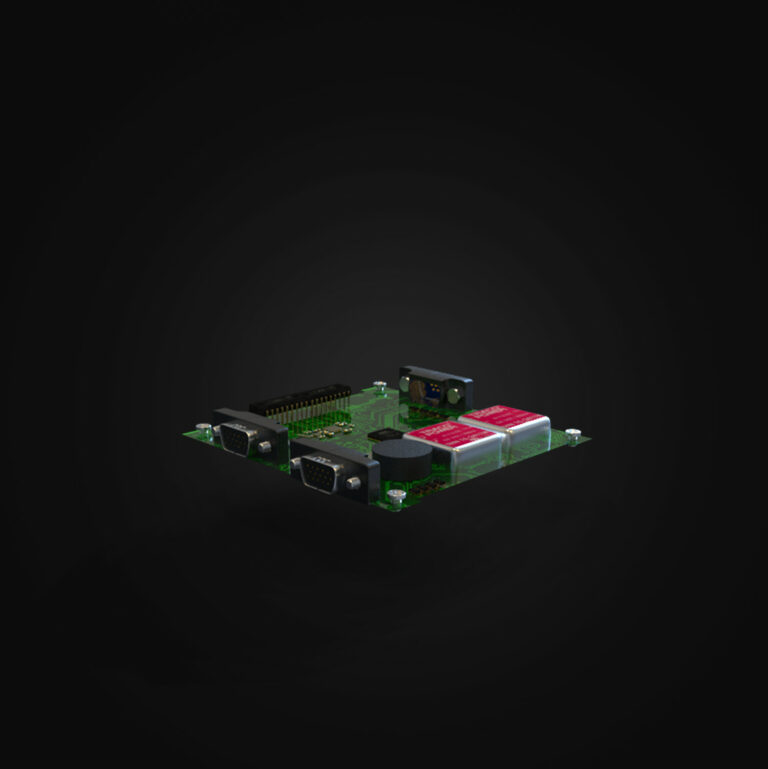
It is a 500 kg stratospheric telescope (flying at an altitude of about 35 km) for observing the atmosphere in the UV. It is a prototype of EUSO for the observation of ultra-high-energy cosmic rays.
It was built under the coordination of the French Space Agency CNES, together with Germany, Korea, Spain, the United States, Italy, France, Japan, Mexico and Poland. It flew over Canada in 2014.
LINX contributed the housekeeping and low-voltage power systems and was responsible for the instrument's thermal architecture.

It is a large space telescope that will fly on the International Space Station in 2023. It is a complex reflector/refractor instrument with a focal area of around 5000 multipliers multipliers, multi-anode. It is a pioneering instrument for frontier physics.
It is being coordinated by the Russian space agency, Roscosmos, and the Japanese space agency, JAXA, and Germany, Korea, Spain, France, Italy, Japan, Mexico and Poland will participate.
LINX will contribute to the complex housekeeping system that controls the instrument from the ground and the main CPU. This will be a milestone in the development of Mexican space technology!

It is a telemetry and telecommand system for long-duration stratospheric balloons developed in an exclusive LINX-CNES (French Space Agency) cooperation. The system is completely original, both in terms of its capabilities, miniaturization, costs, and development time.
This is a great event of international cooperation and the first CNES-Mexican Space Agency (AEM) technical cooperation.
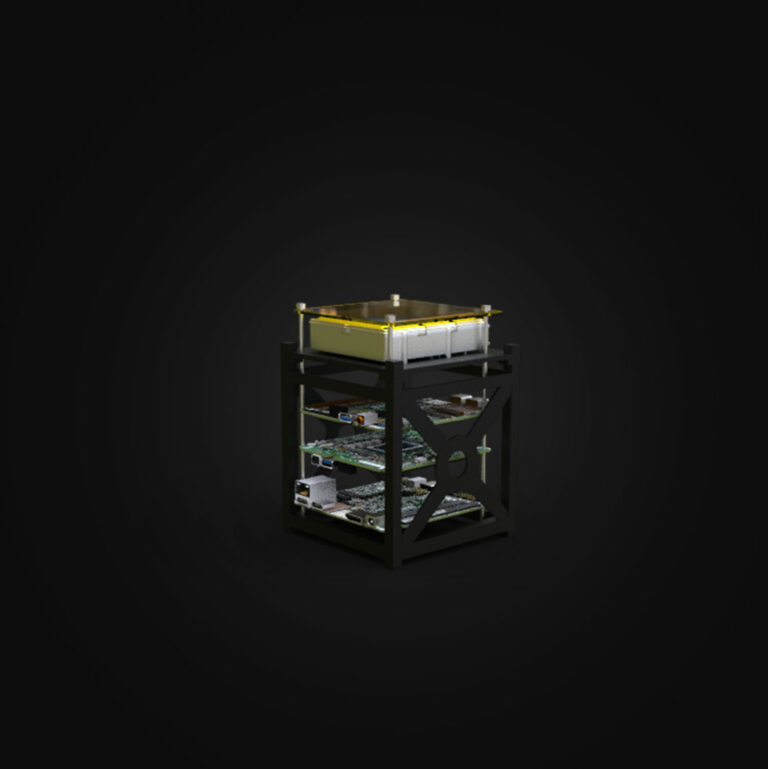
It is a series of nanosatellites that aims to effectively position Mexico in the space sector of instrumentation and applications in low orbits.
The launch will take place on PSLV-C51 from the base of the Dhawan Space Center, SHAR, Sriharikota.
The PSLV will use a solid-state booster configuration added to the main engine for this launch.
It will carry Brazil's Amazonioa-1 as its main satellite, and 18 other secondary satellites, including NanoConnect-2.
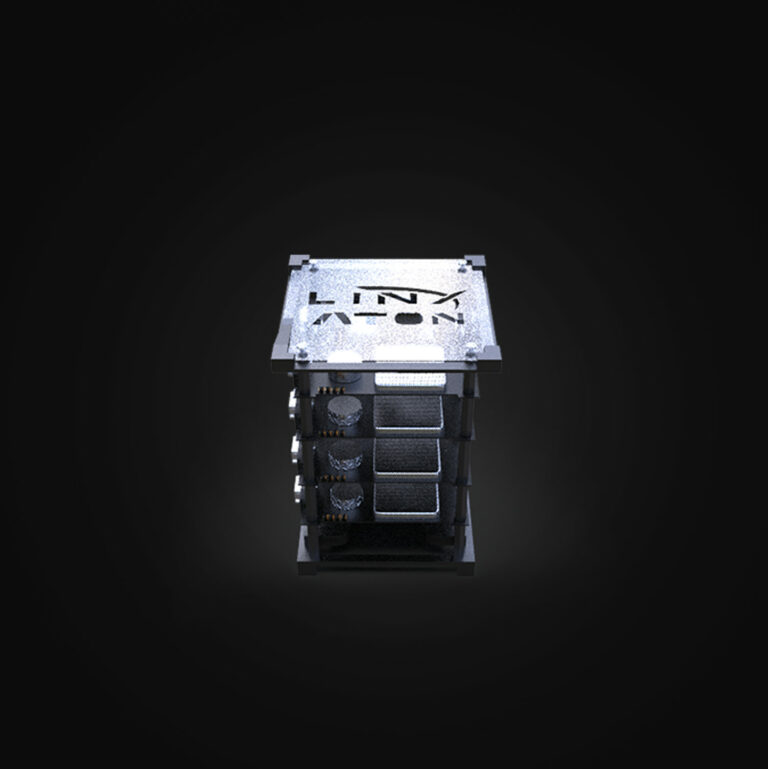

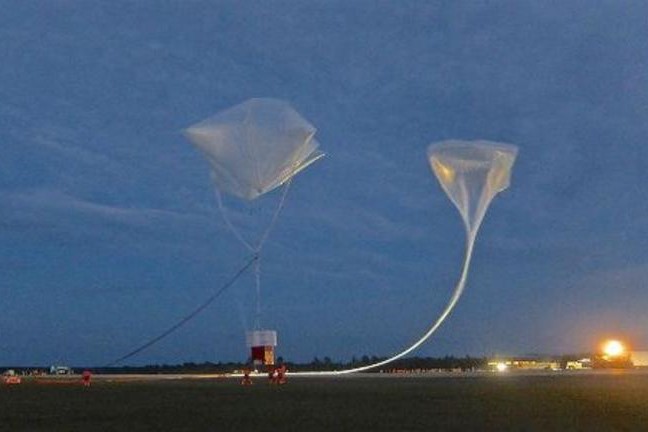

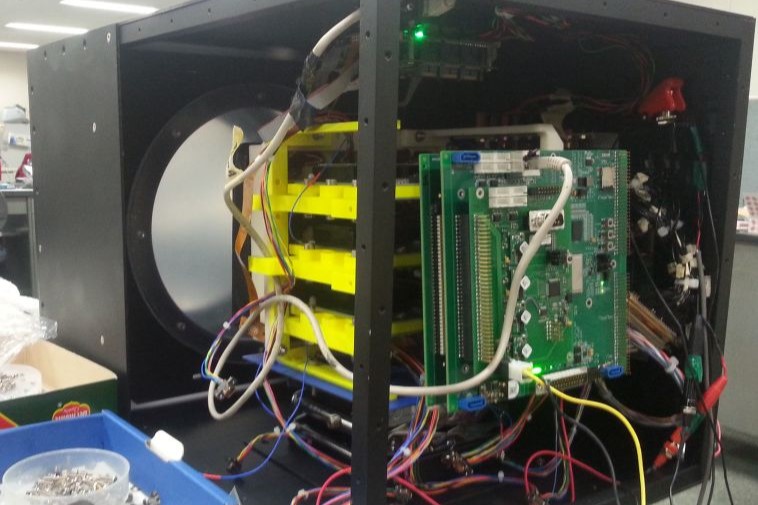
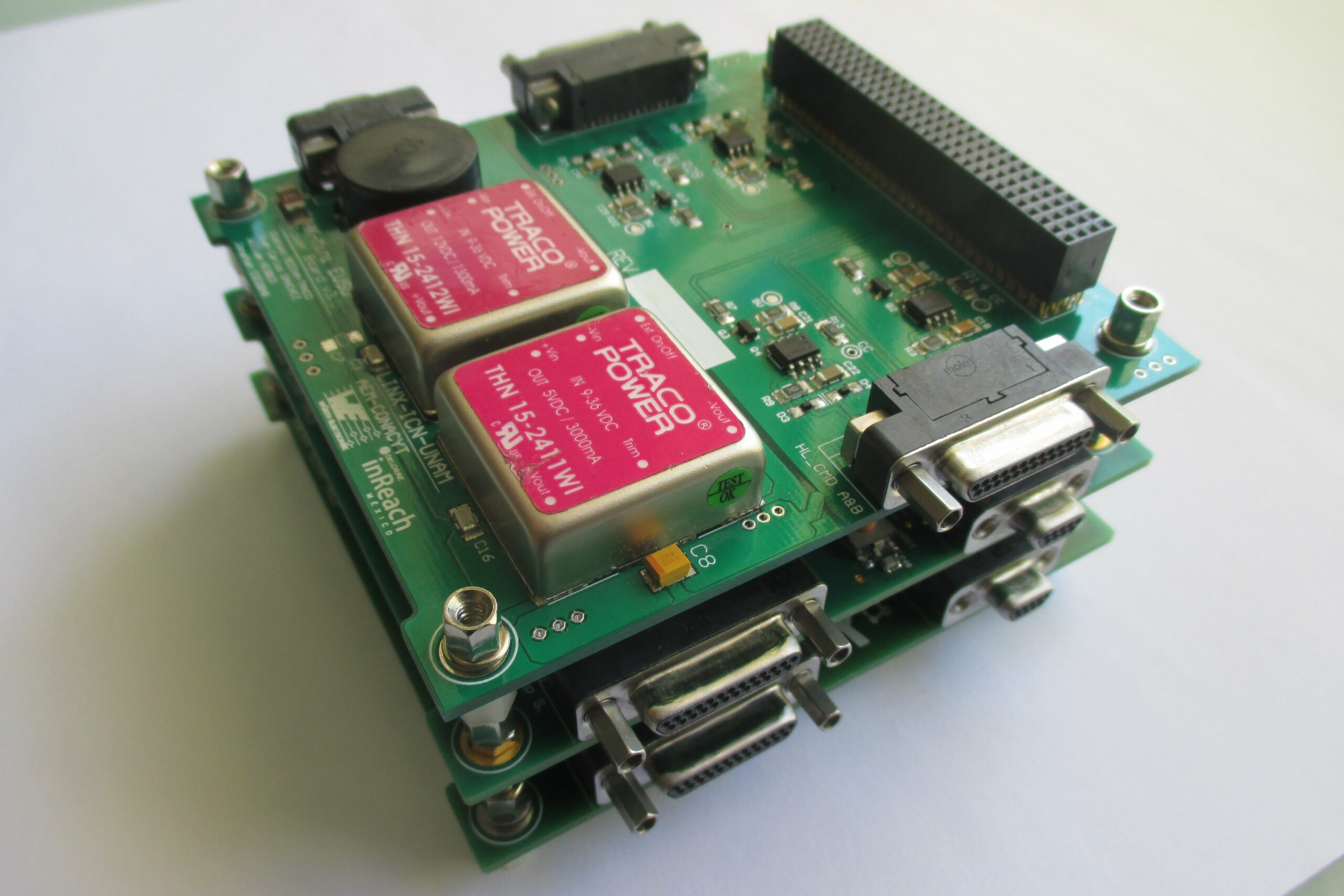
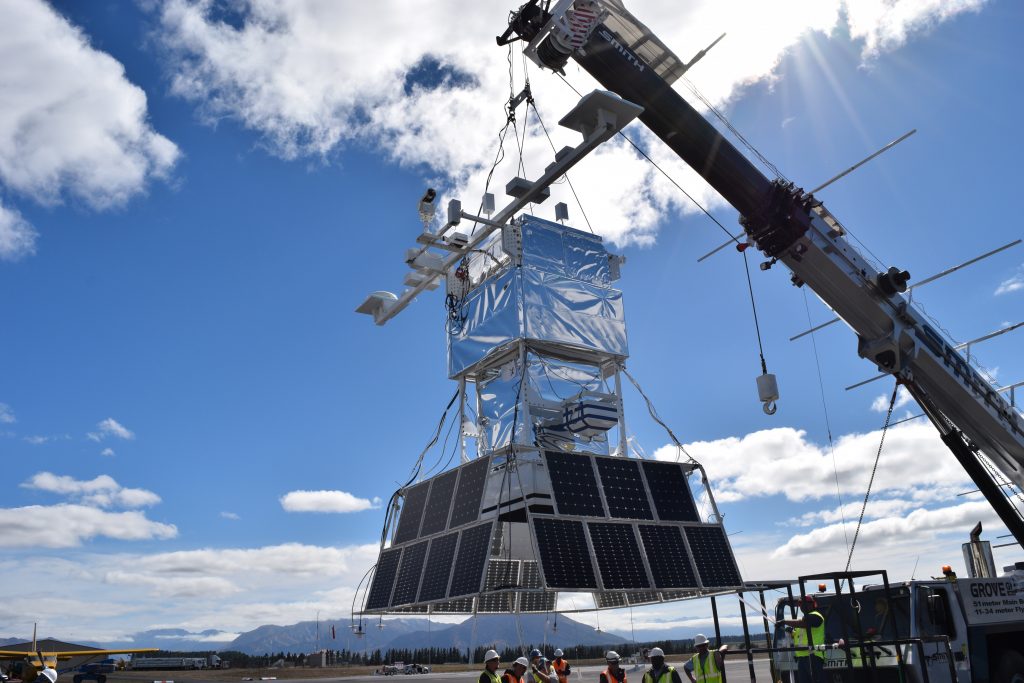

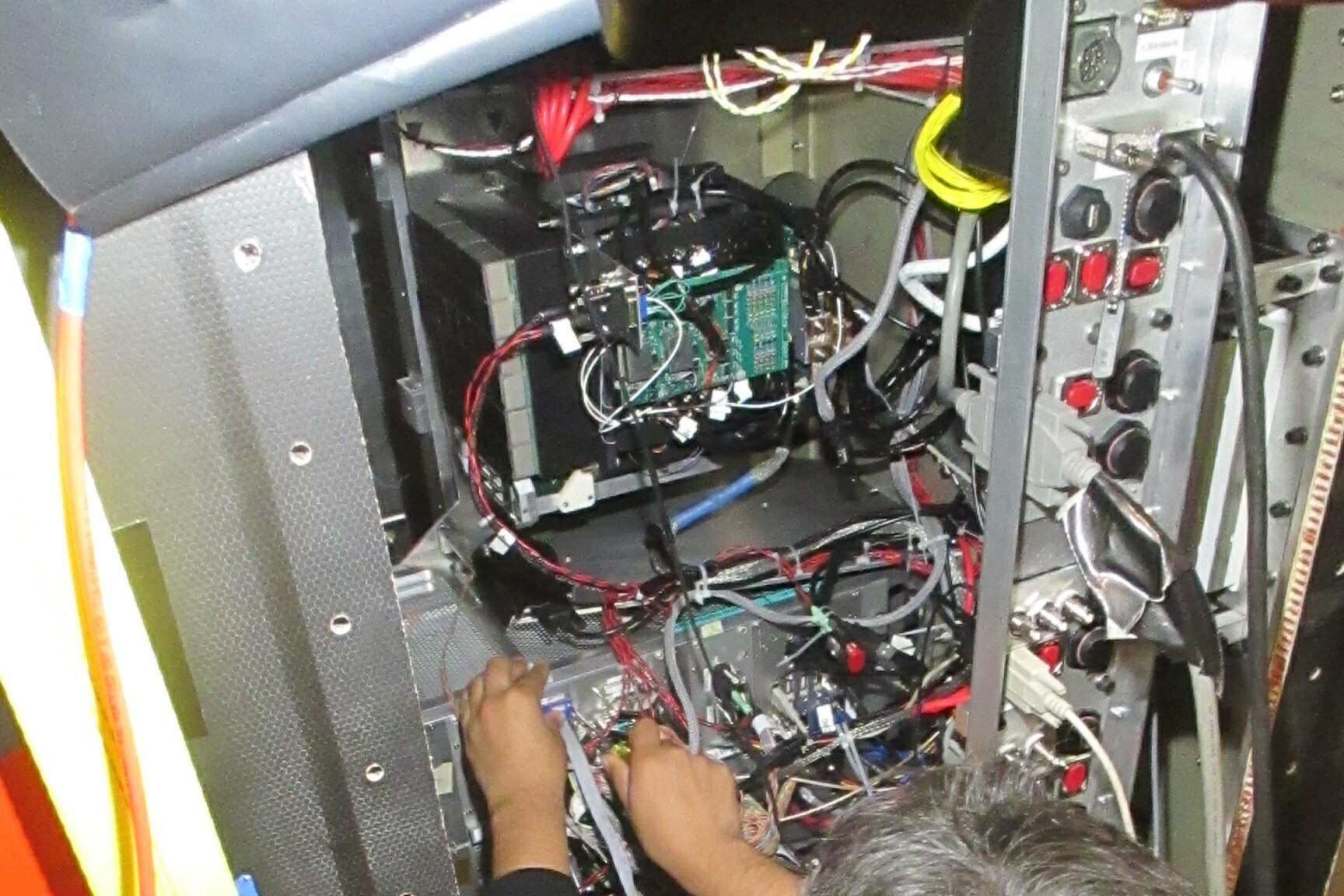

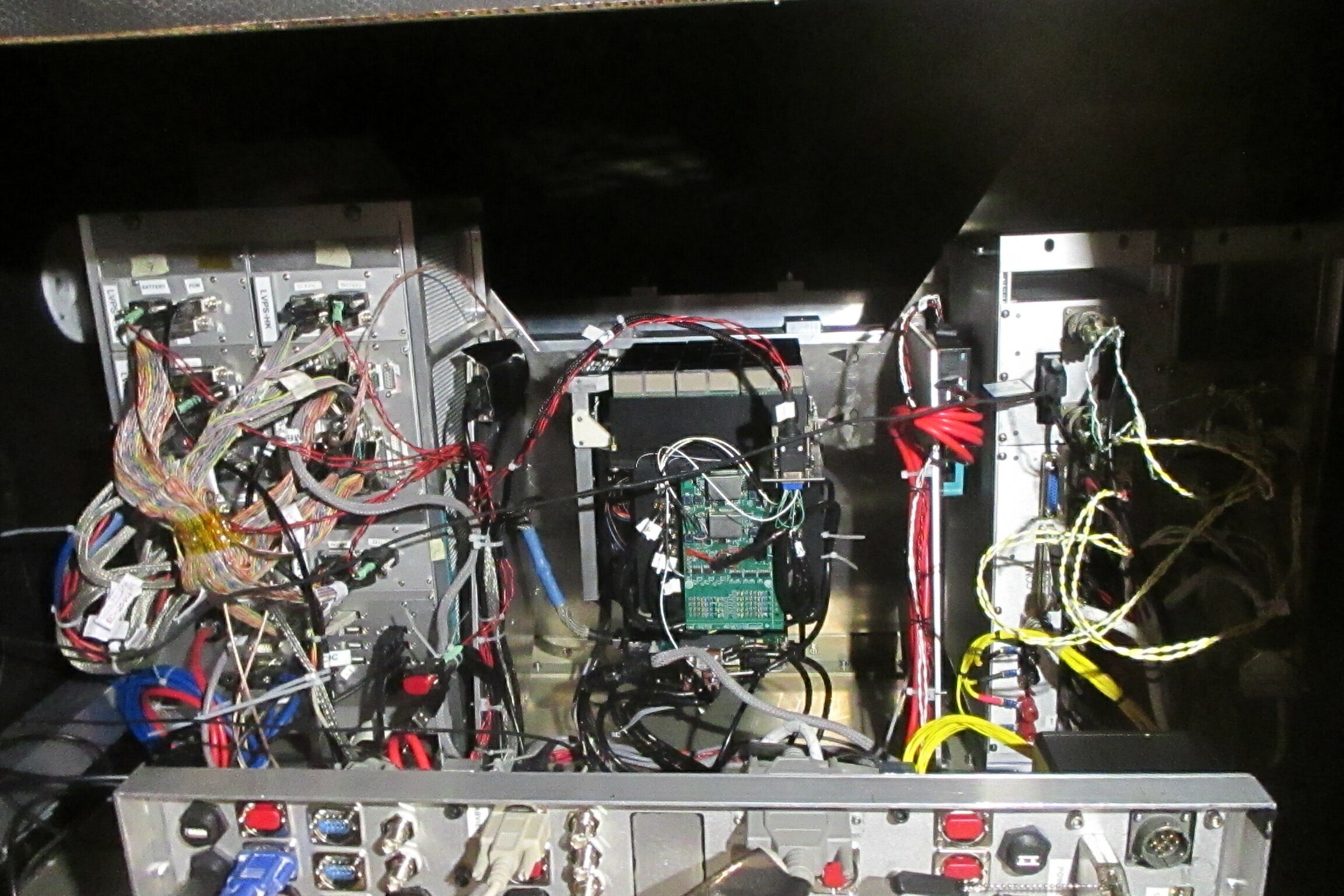
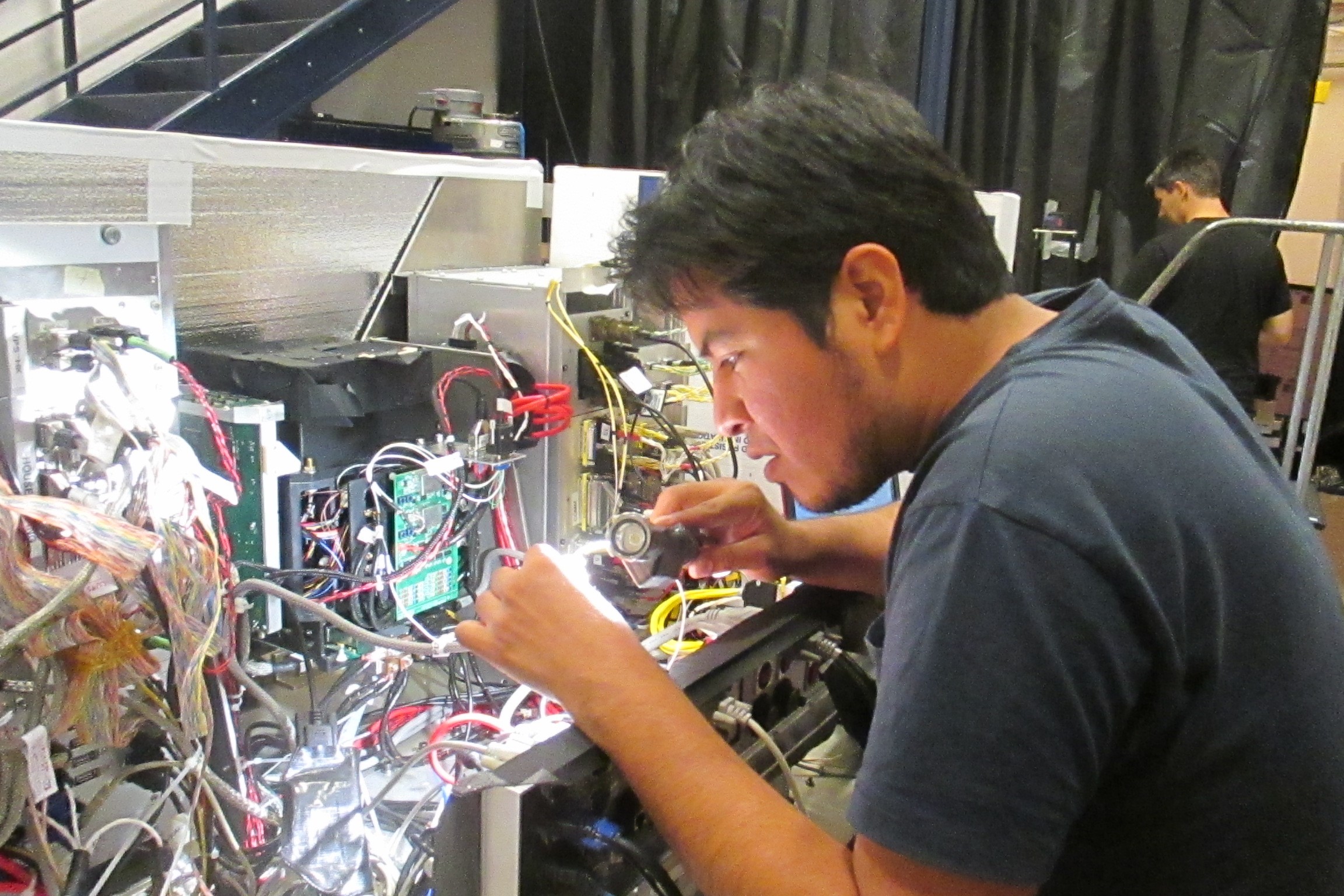


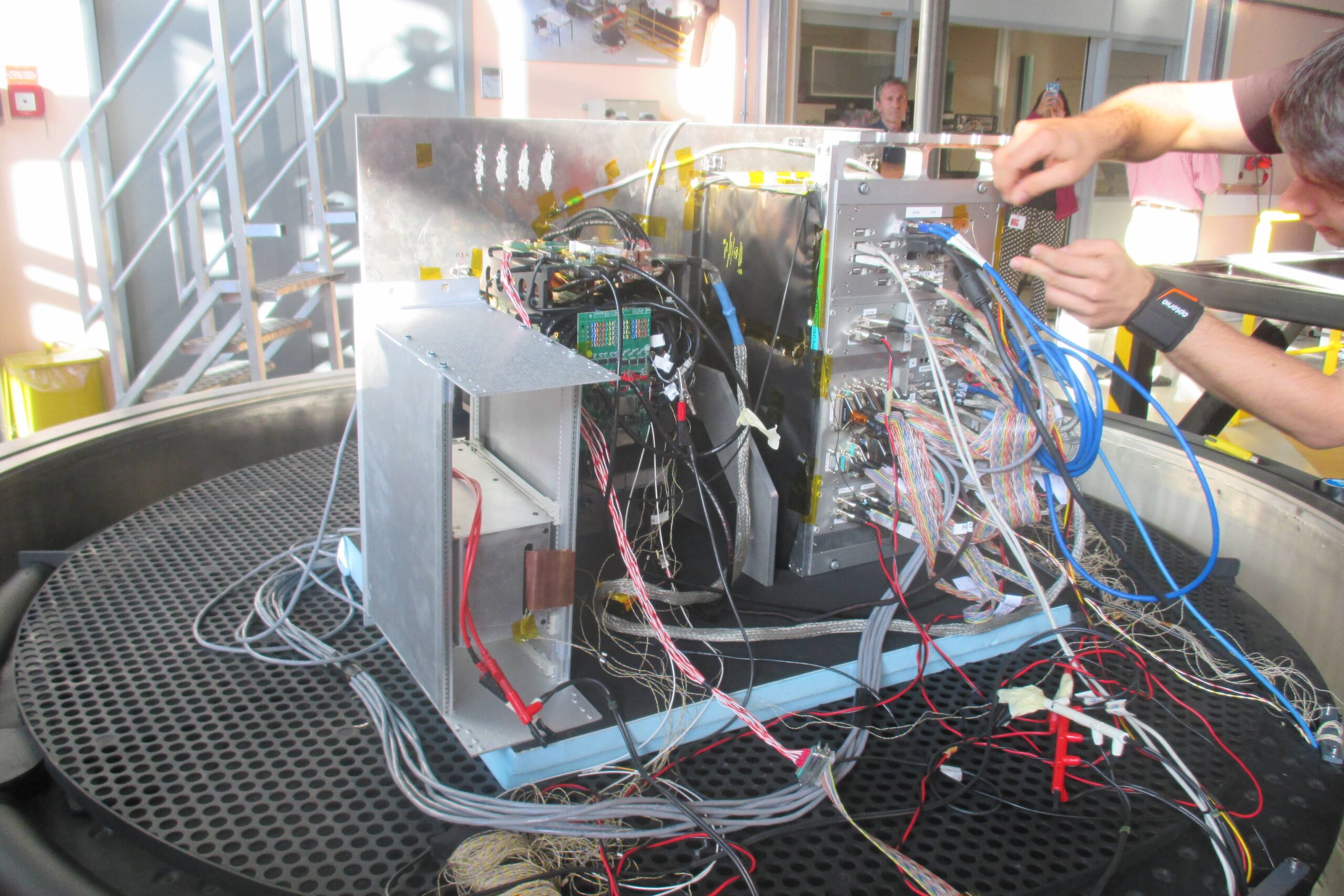
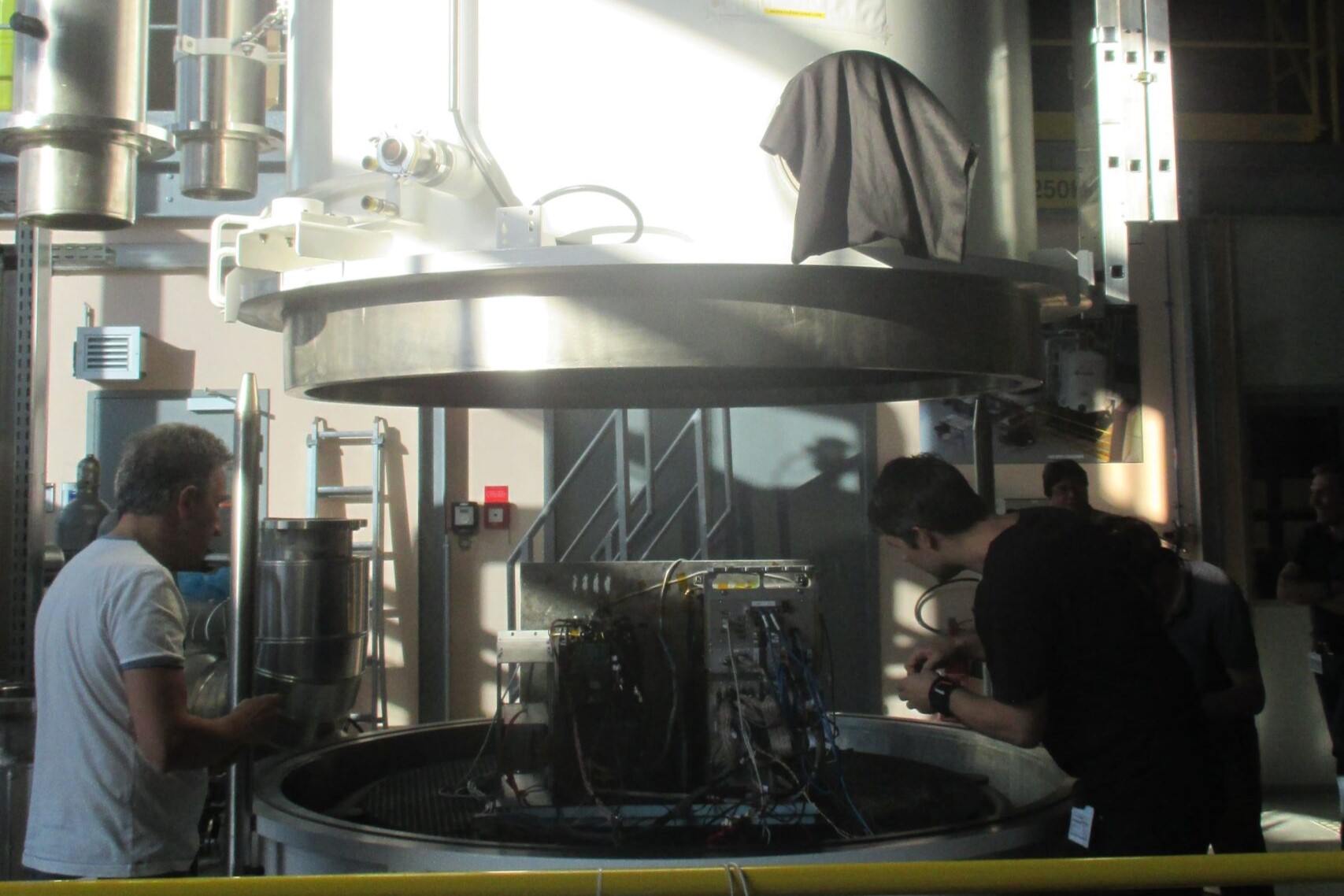

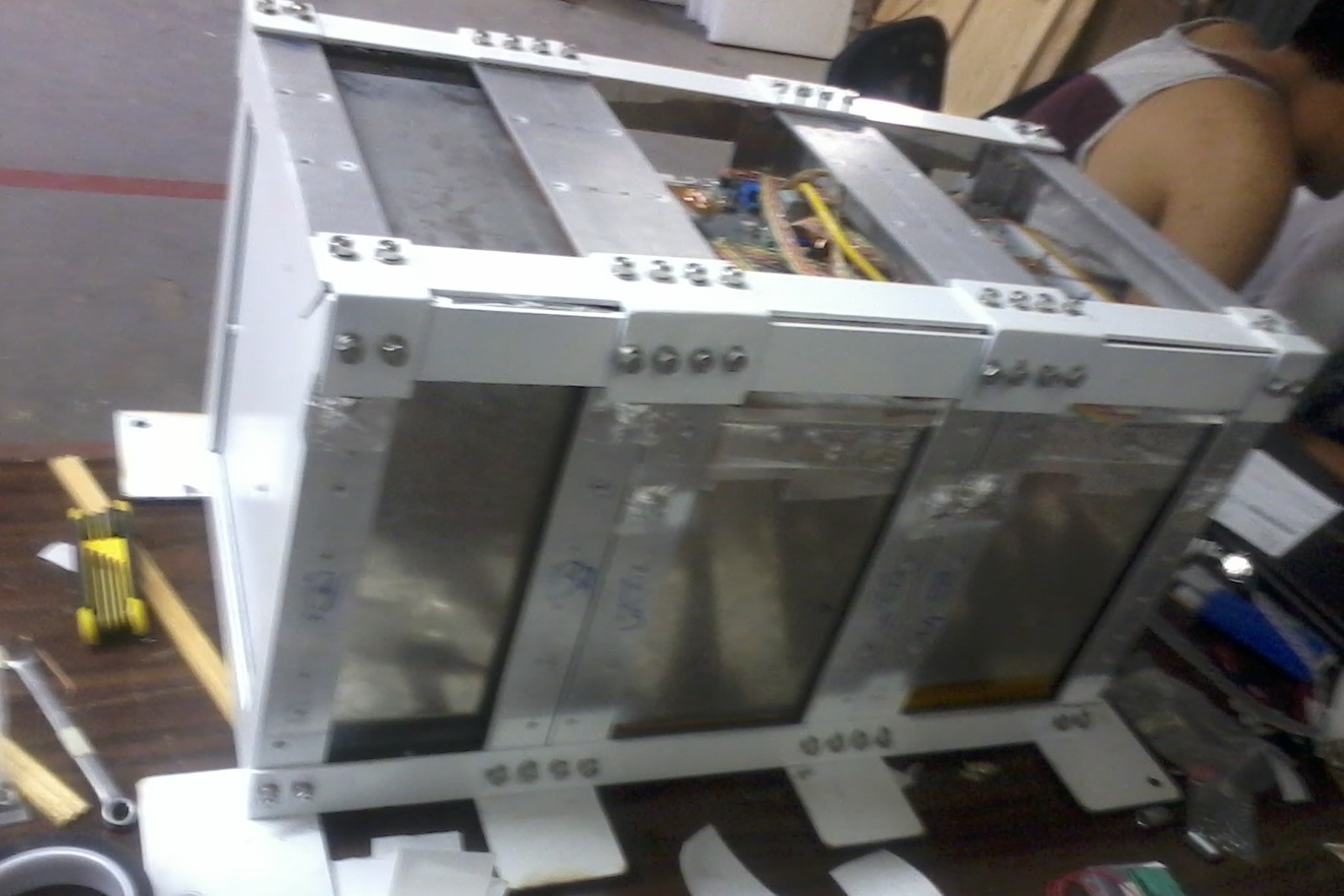
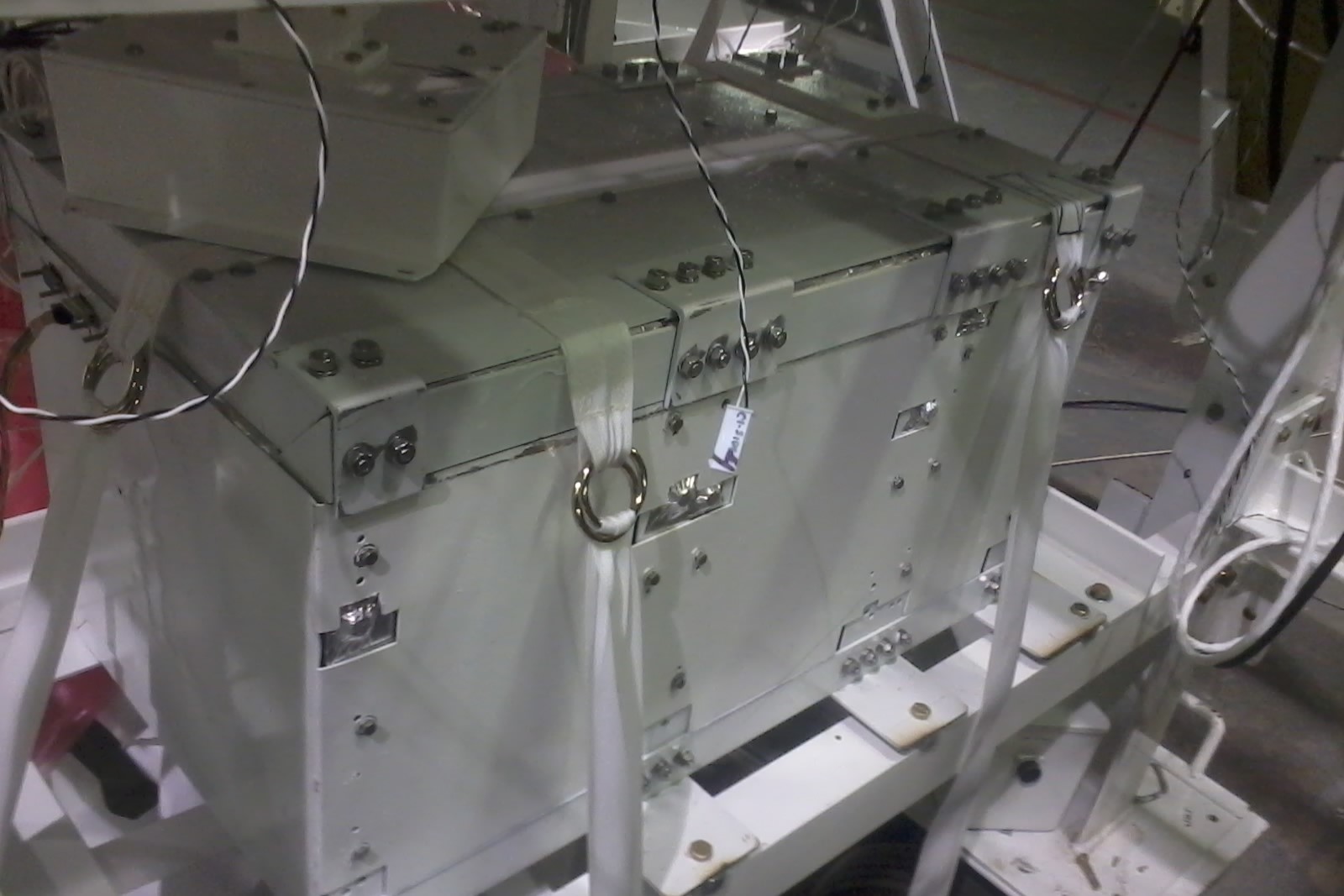
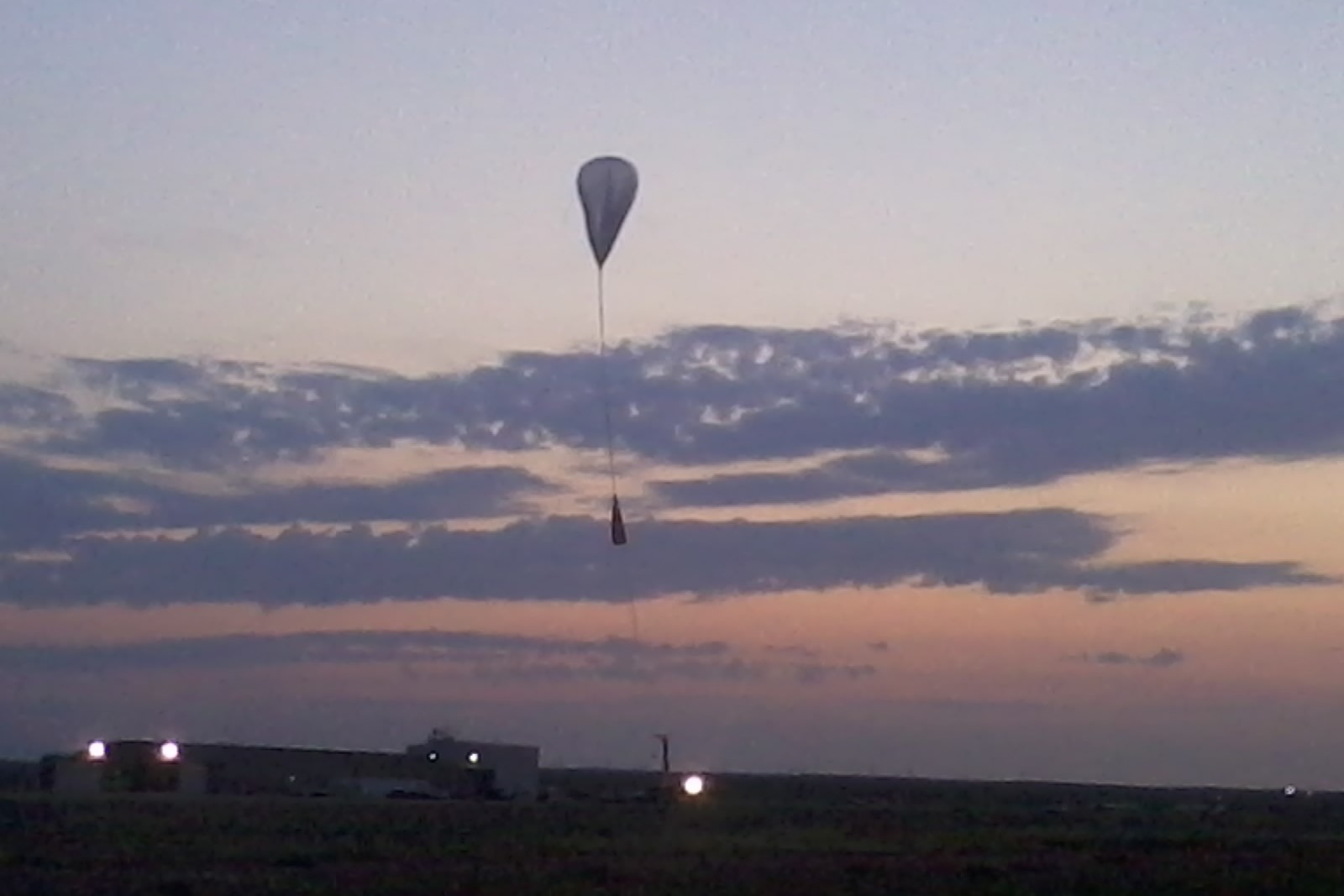
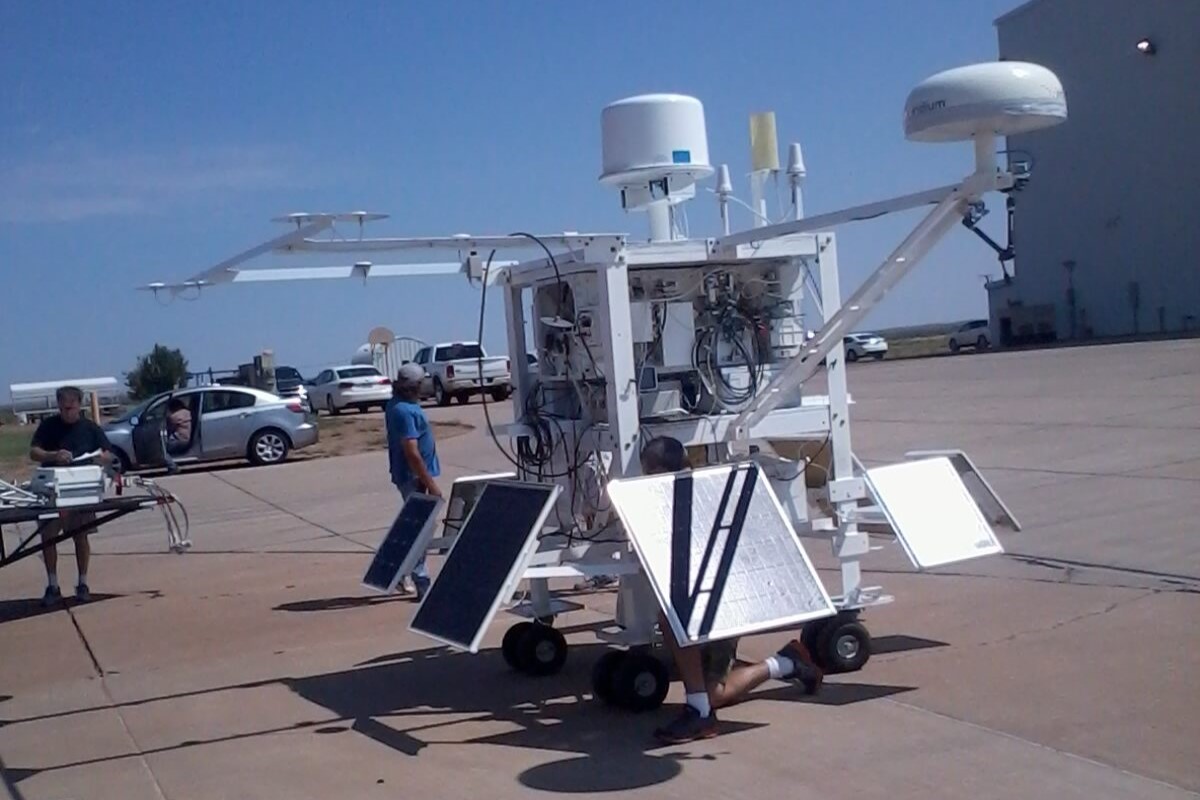

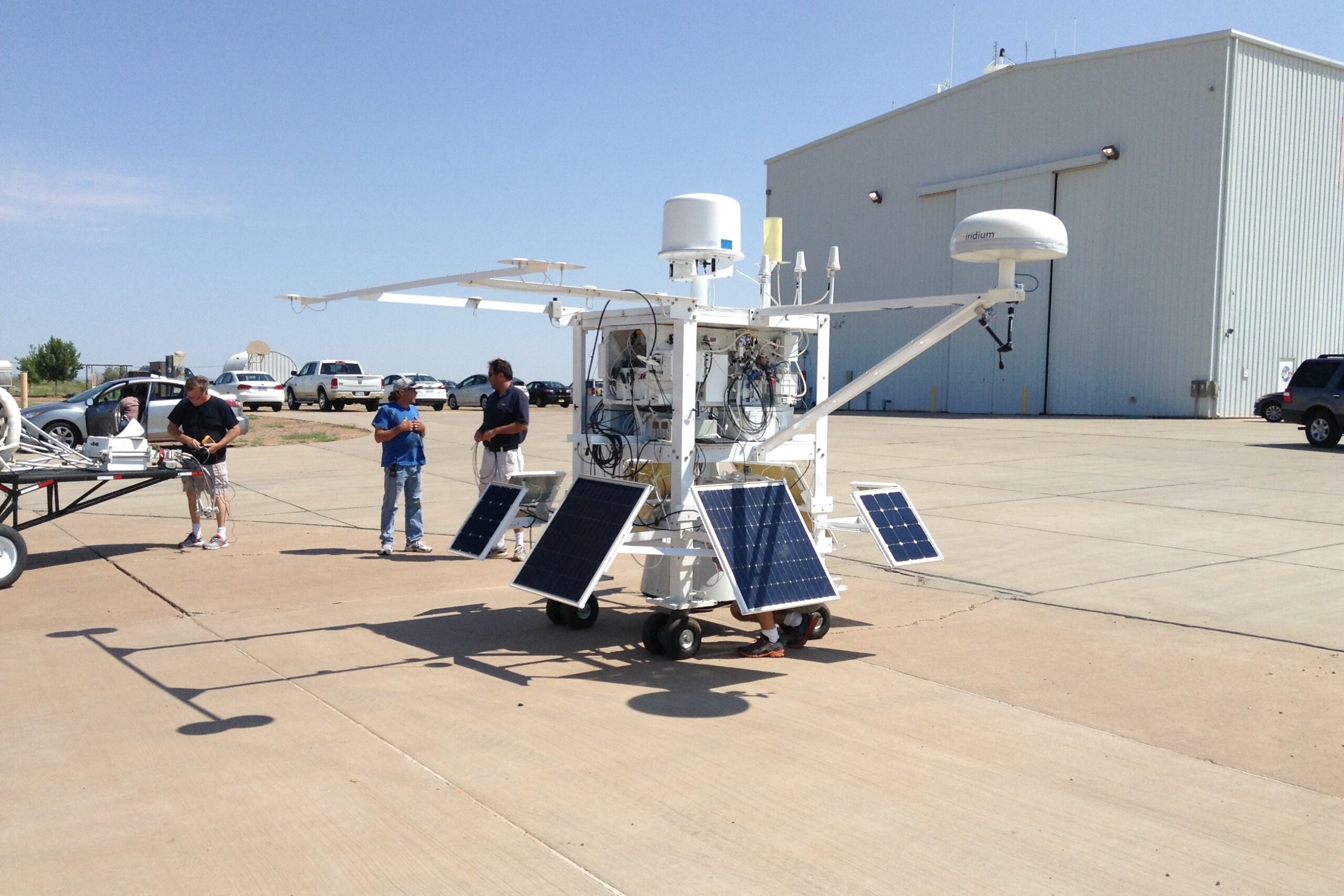

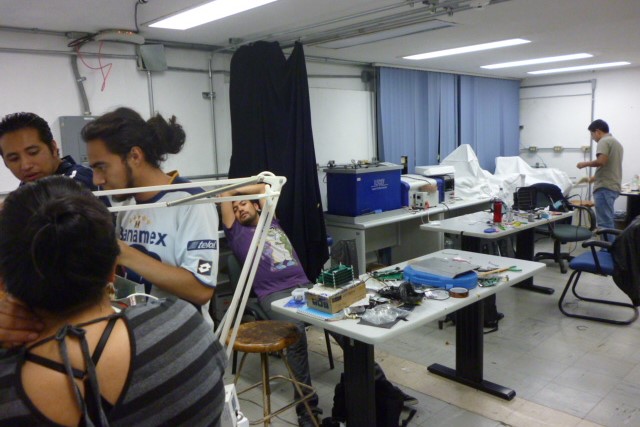
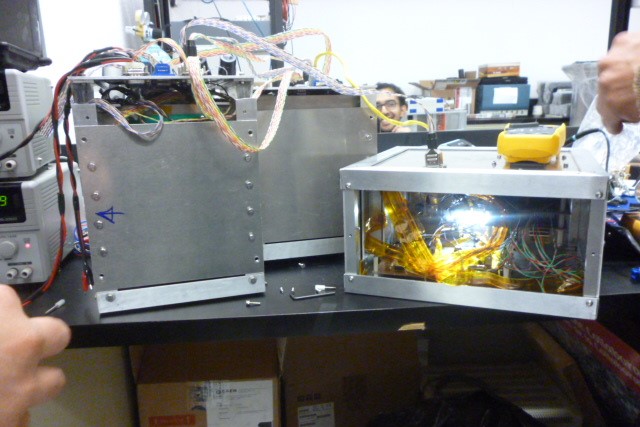
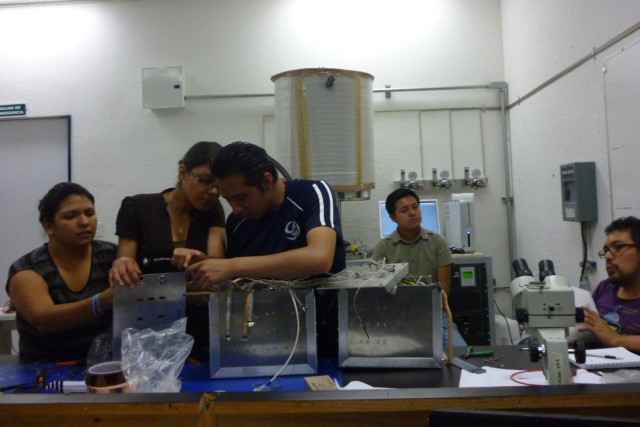
Es un telescopio estratosférico (vuela a unos 35 km de altura) de 500 kg para la observación de la atmósfera en el UV. Es un prototipo de EUSO para la observación de rayos cósmicos de ultra alta energía.
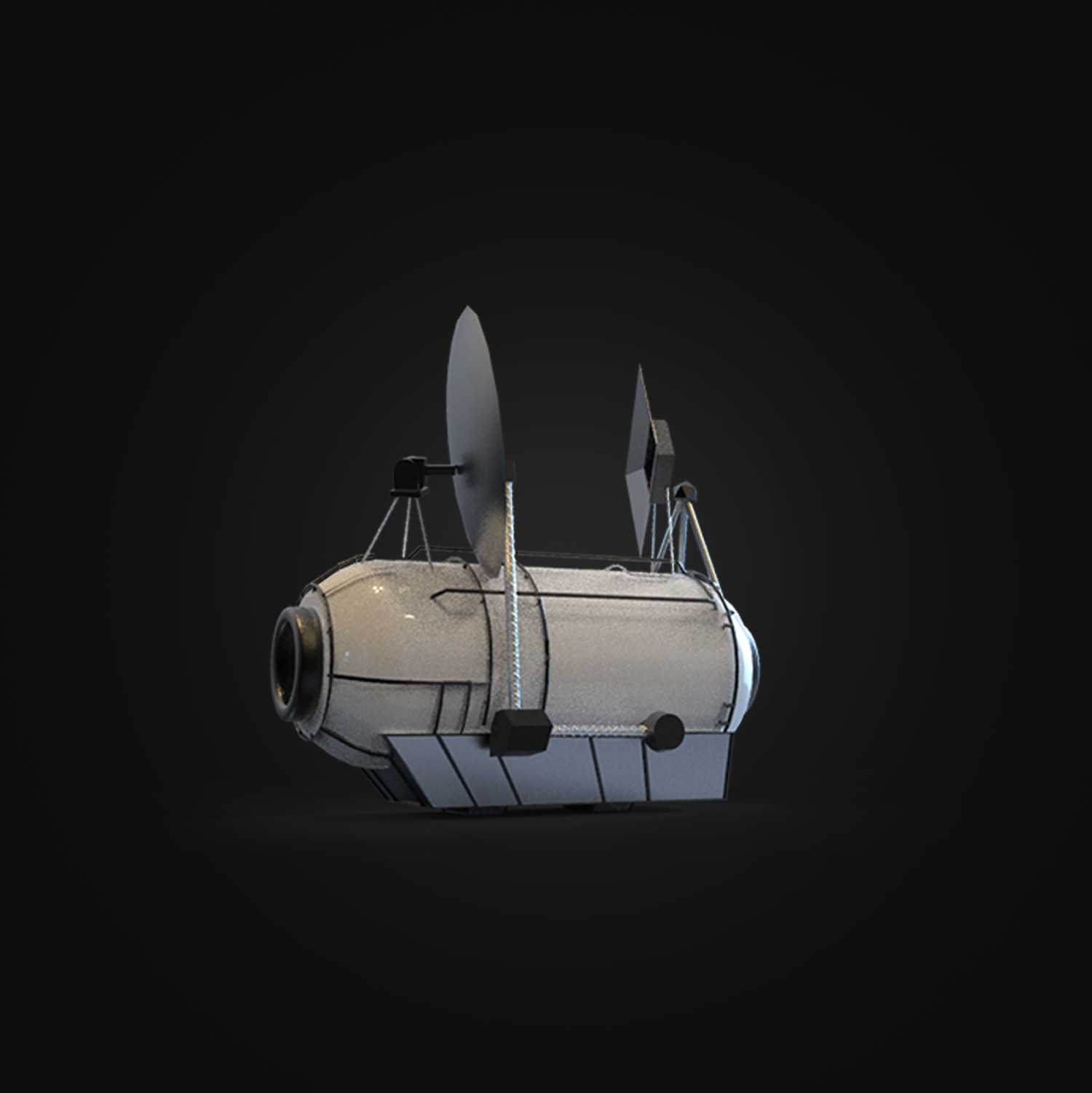
Es un telescopio estratosférico más avanzado y complejo que EUSO-Balloon, de 1,500 kg, para la observación de la atmósfera en el UV. Es un prototipo de EUSO para la observación de rayos cósmicos de ultra alta energía.

Es un telescopio estratosférico (vuela a unos 35 km de altura) de 500 kg para la observación de la atmósfera en el UV. Es un prototipo de EUSO para la observación de rayos cósmicos de ultra alta energía.
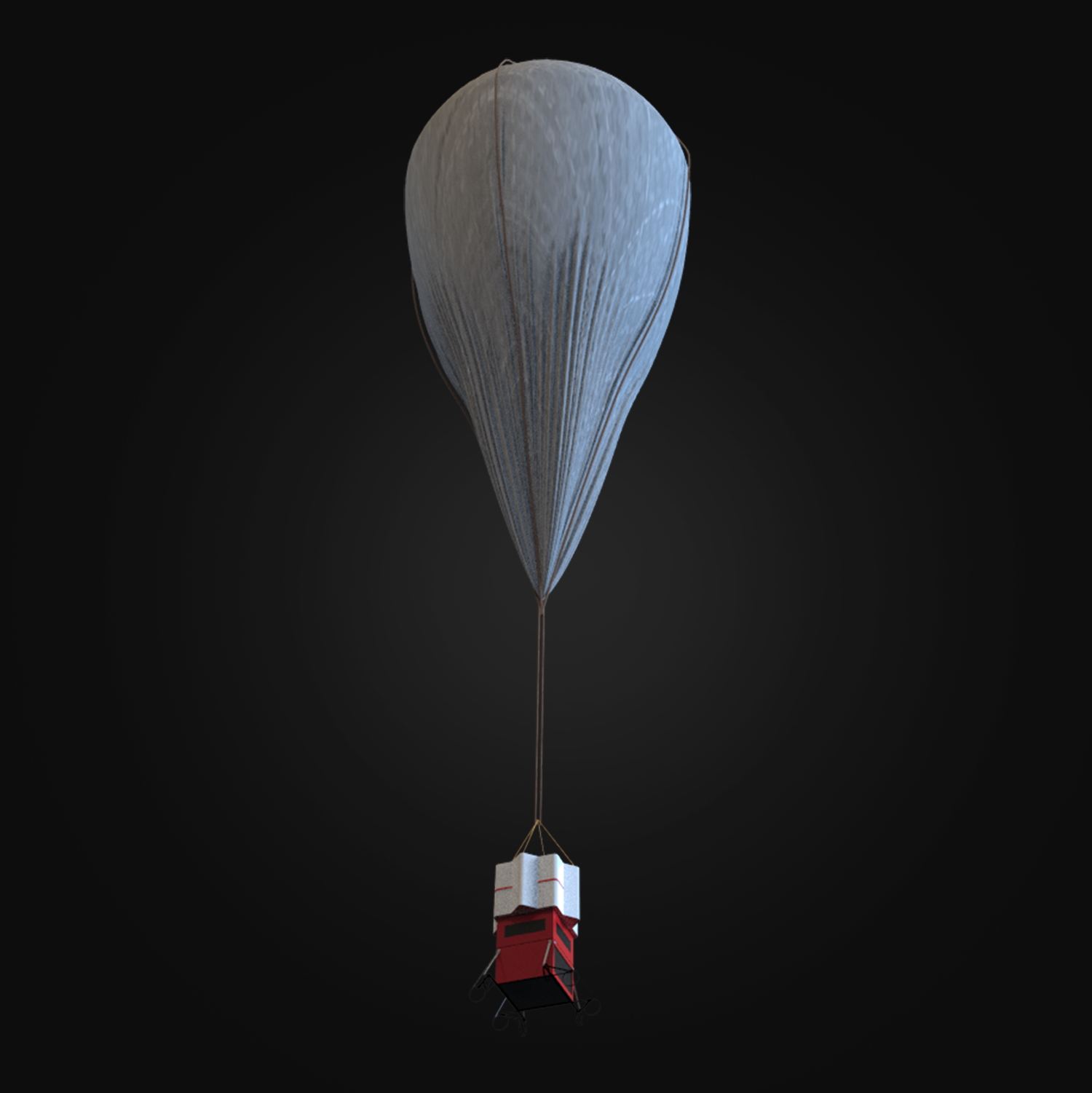
Es una cámara UV que volará en la Estación Espacial Internacional en 2018. Es una versión miniaturizada (60kg) de EUSO-SPB. Observará desde el espacio rayos cósmicos entrando a la atmósfera terrestre.
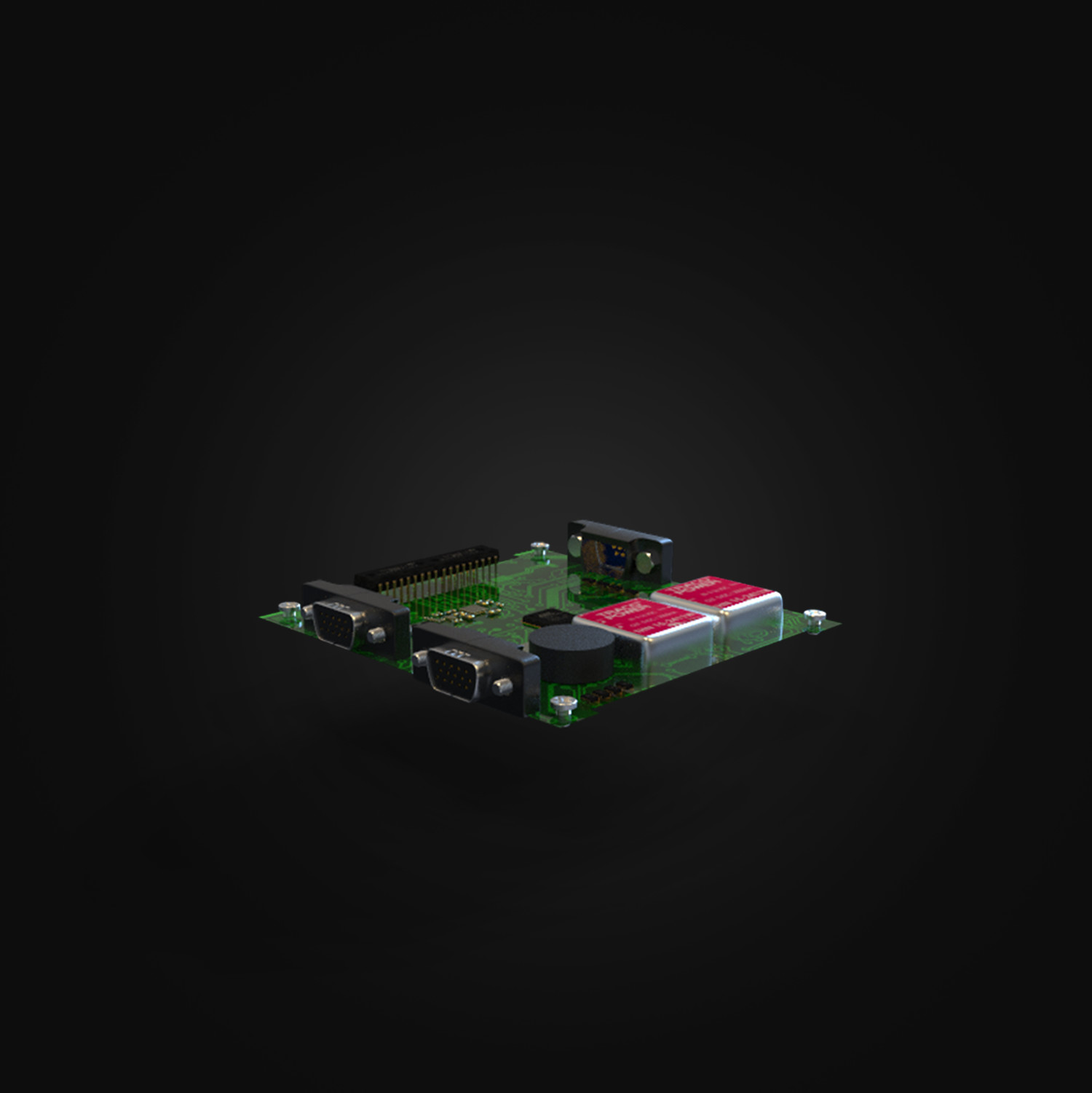
Es un gran telescopio espacial que volará en la Estación Espacial Internacional en 2023.

Es un sistema de telemetría y telecomando para globos estratosféricos de larga duración desarrollado en una cooperación exclusiva LINX-CNES (Agencia Espacial Francesa).
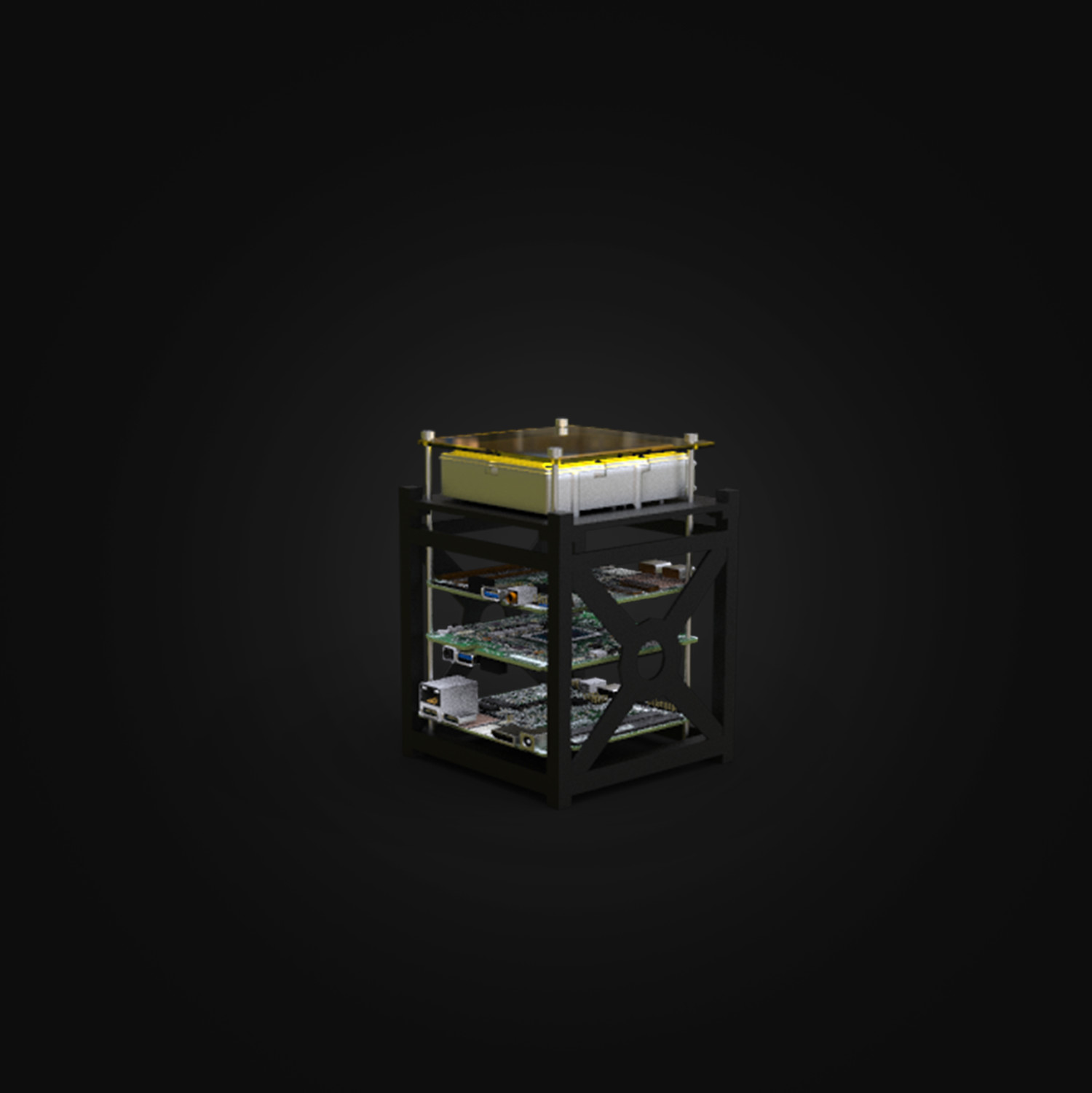
Es una serie de nanosatélites que tiene por objetivo posicionar a México efectivamente en el sector espacial de instrumentación y aplicaciones en órbitas bajas.
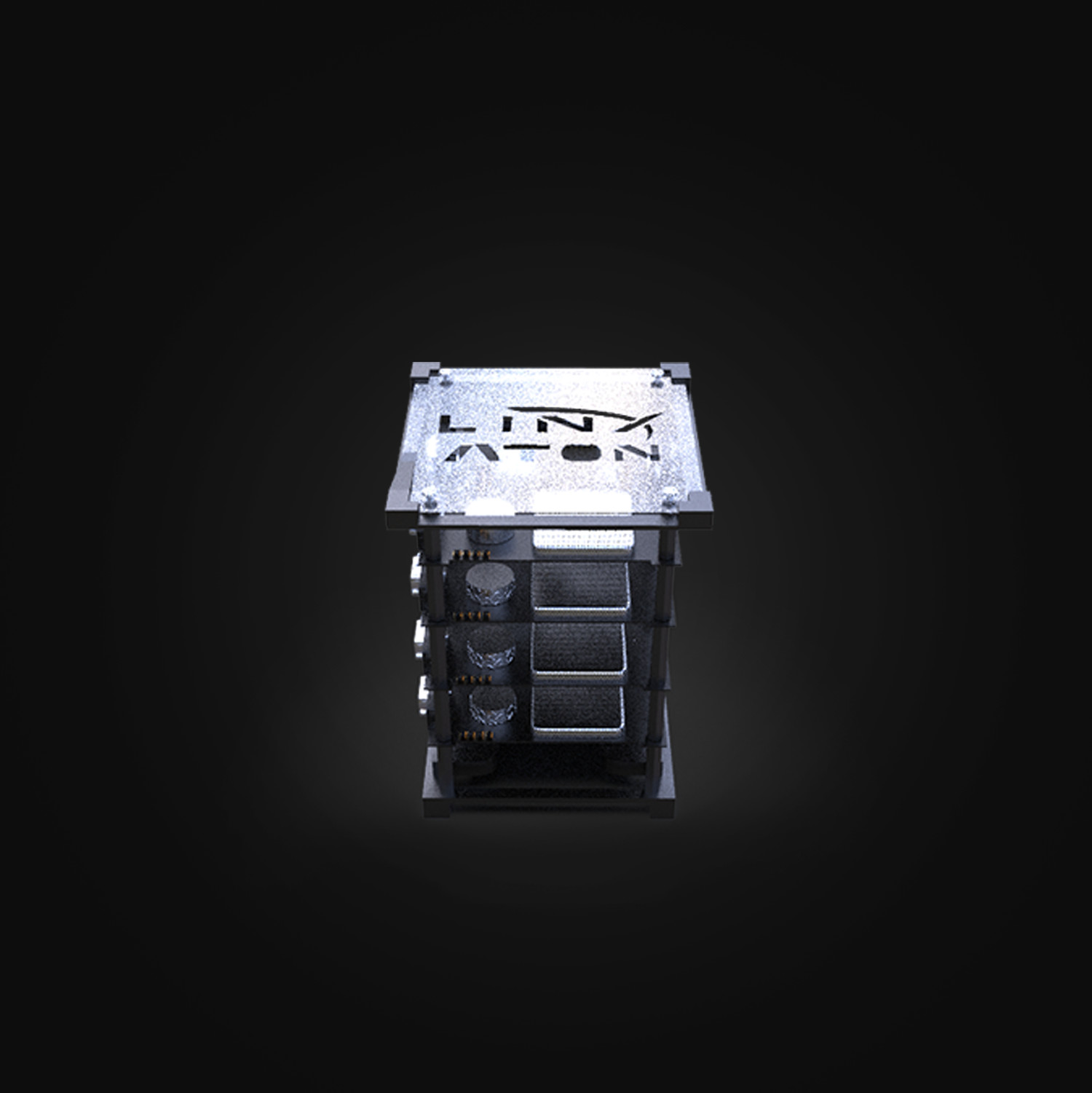
Es un telescopio estratosférico (vuela a unos 35 km de altura) de 500 kg para la observación de la atmósfera en el UV. Es un prototipo de EUSO para la observación de rayos cósmicos de ultra alta energía.
Fue construido bajo la coordinación de la Agencia Espacial Francesa CNES, junto con Alemania, Corea, España, Estados Unidos, Italia, Francia, Japón, México y Polonia. Voló sobre Canadá en 2014.
LINX contribuyó con los sistemas de housekeeping y de alimentación en bajo voltaje y fue responsable por la arquitectura térmica del instrumento.

Es un telescopio estratosférico más avanzado y complejo que EUSO-Balloon, de 1,500 kg, para la observación de la atmósfera en el UV. Es un prototipo de EUSO para la observación de rayos cósmicos de ultra alta energía.
Fue construido bajo la coordinación de NASA, junto con Alemania, Estados Unidos, Italia, Francia, Japón, México y Polonia. Se lanzó desde Nueva Zelandia en abril de 2017. Vuela en un globo de super-presión, el globo más avanzado de la NASA.
LINX contribuyó con dos nuevos sistemas de housekeeping y con los sistemas de alimentación en bajo voltaje. Fue responsable por la arquitectura térmica del instrumento y por la definición de la interfase térmica con los sistemas de la góndola de NASA.

Es una cámara UV que voló a la Estación Espacial Internacional en 2018. Es una versión miniaturizada (60kg) de EUSO-SPB. Observará desde el espacio rayos cósmicos entrando a la atmósfera terrestre.
Fue construido bajo la coordinación de las agencias espaciales italianas, ASI y rusa, ROSCOSMOS, junto con Italia, Francia, Japón, México y Polonia. LINX contribuyó con un nuevo sistema miniaturizado de housekeeping.
¡Éste es el primer equipo mexicano que volará en el Espacio!

Es un telescopio estratosférico (vuela a unos 35 km de altura) de 500 kg para la observación de la atmósfera en el UV. Es un prototipo de EUSO para la observación de rayos cósmicos de ultra alta energía.
Fue construido bajo la coordinación de la Agencia Espacial Francesa CNES, junto con Alemania, Corea, España, Estados Unidos, Italia, Francia, Japón, México y Polonia. Voló sobre Canadá en 2014.
LINX contribuyó con los sistemas de housekeeping y de alimentación en bajo voltaje y fue responsable por la arquitectura térmica del instrumento.

Es un gran telescopio espacial que volará en la Estación Espacial Internacional en 2023. Es un complejo instrumento reflector/refractor con una superficie focal de alrededor de 5000 fotomultiplicadores multi-ánodo. Es un instrumento pionero para la física de frontera.
Está siendo coordinado por las agencias espaciales Rusa, ROSCOSMOS, y Japonesa, JAXA, y participarán Alemania, Corea, España, Francia, Italia, Japón, México y Polonia.
LINX contribuirá con el complejo sistema de housekeeping que controla el instrumento a partir de tierra y de la CPU principal. ¡Este será un hito en el desarrollo de tecnología espacial mexicana!

Es un sistema de telemetría y telecomando para globos estratosféricos de larga duración desarrollado en una cooperación exclusiva LINX-CNES (Agencia Espacial Francesa). El sistema es completamente original, tanto por sus capacidades, miniaturización, costos, como por su tiempo de desarrollo.
Este es un gran suceso de cooperación internacional y la primera cooperación técnica CNES-Agencia Espacial Mexicana (AEM).

Es una serie de nanosatélites que tiene por objetivo posicionar a México efectivamente en el sector espacial de instrumentación y aplicaciones en órbitas bajas.
El lanzamiento tendrá lugar en el PSLV-C51 desde la base del Dhawan Space Center, SHAR, Sriharikota.
El PSLV usará para este lanzamiento una configuración con booster de estado sólido adicionados al motor principal.
Llevará como satélite principal al brasilero Amazonioa-1, y otros 18 satélites secundarios entre los que se cuenta NanoConnect-2.

It is a series of nanosatellites that aims to effectively position Mexico in the space sector of instrumentation and applications in low orbits.
The launch will take place on PSLV-C51 from the base of the Dhawan Space Center, SHAR, Sriharikota.
The PSLV will use a solid-state booster configuration added to the main engine for this launch.
It will carry Brazil's Amazonioa-1 as its main satellite, and 18 other secondary satellites, including NanoConnect-2.
NanoConnect-2 is the first nanosatellite completely designed, built and validated in Mexico: in the LINX laboratory, by Mexican researchers and students. NanoConnect-2 is the second in the series and the first to be launched into Earth orbit.
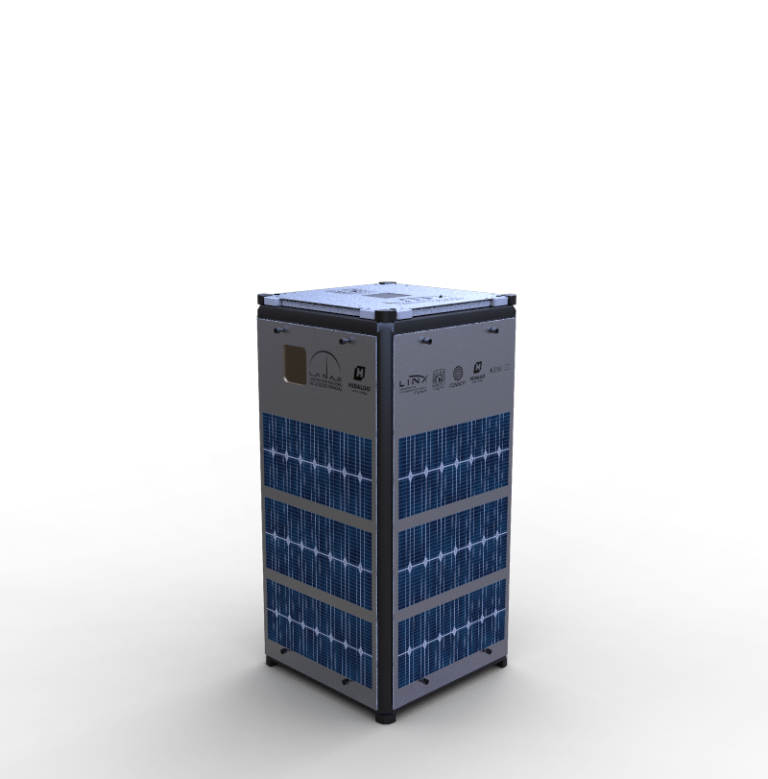
NanoConnect-2 is a 2U nanosatellite with a mass of 1,810 grams, whose technical objectives are:
1.- Practical demonstration of the complete satellite platform, i.e., mechanical structure, power generation and storage system, monitoring system, on-board computer, telecommunications system and monitoring and ground operation station.
2.- Demonstration of the ability to provide space technology validation services, through the transport as payload of an experimental secondary telecommunications system, based on a high-bandwidth and gain antenna made with innovative nanotechnologies by the North American company nCAP Telecommunications in logistical cooperation with Space-AI.
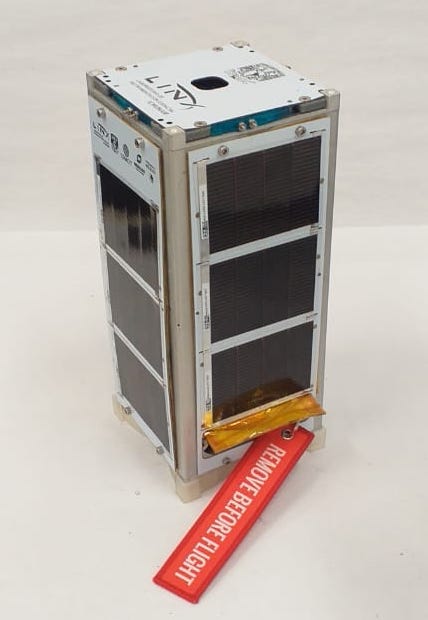
NanoConnect-2
Like any space mission, it has a considerable degree of risk of failure, but the success of the mission is already indisputable in the sense of having passed all the necessary qualification tests and having served for the development of technologies and human resources indispensable for the long-term plans of LINX, LANAE, UNAM and the government of Hidalgo.
For the positioning of Mexico in the space sector as a valid, transcendent and technically and strategically independent actor.
Among the sponsors of this effort, the businessman José Vera and his company Liber Salus, and the late businessman Francisco Valle and his company Pastes Kiko should be highlighted.

These are added to an ecosystem of various national and foreign companies that support LINX in its projects:
AG Electrónica, Biomédica de Referencia, DOW, ENGIE México, EBIME Equipos de Biomedicina de México, Glenair, Globalstar, HIESC, InReach, Liber Salus, MicroLink, nCAP Telecommunications, Publicidad Virtual, Rohde & Shwarz, PRAXIS, SAMTEC, Sol21CyT, Space AI, Spacenet, Steren Electrónica, Weller, Wurth Electronik.
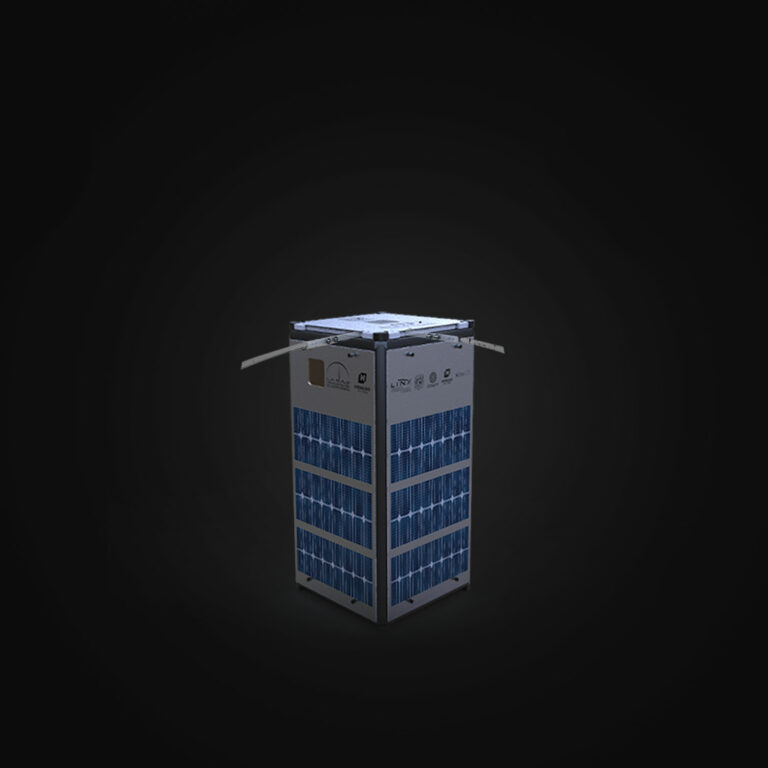
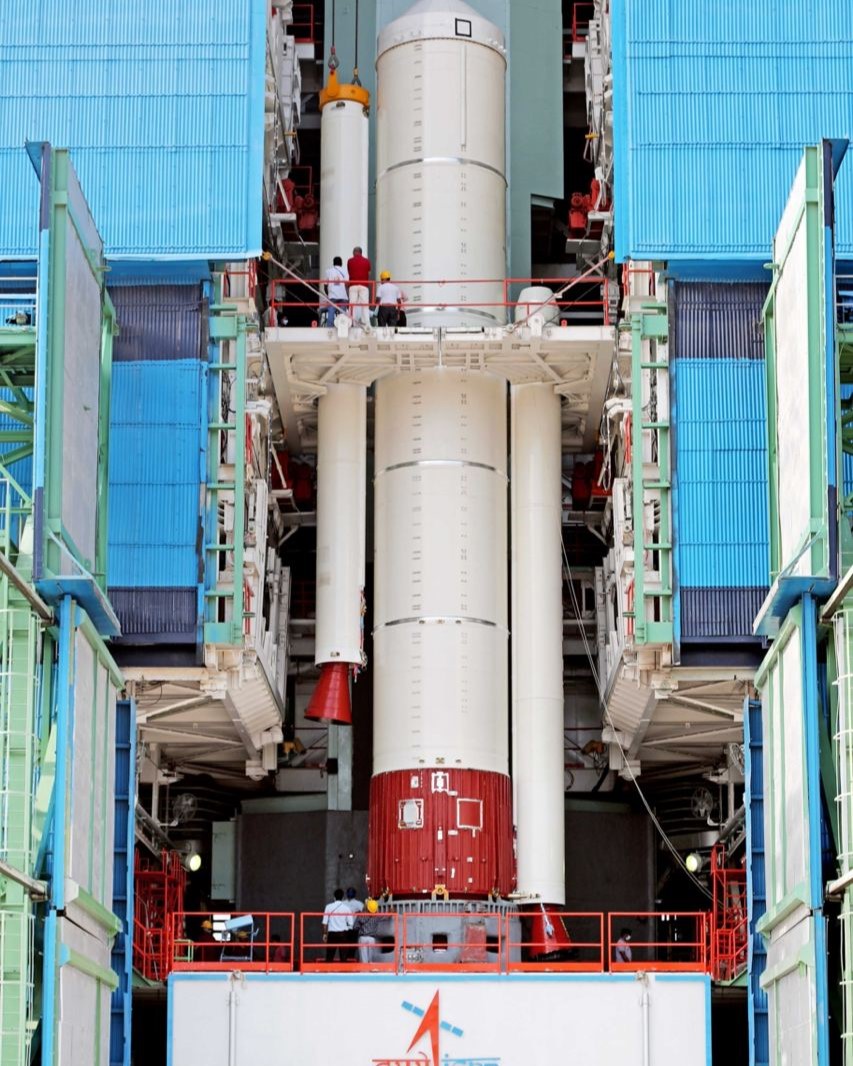
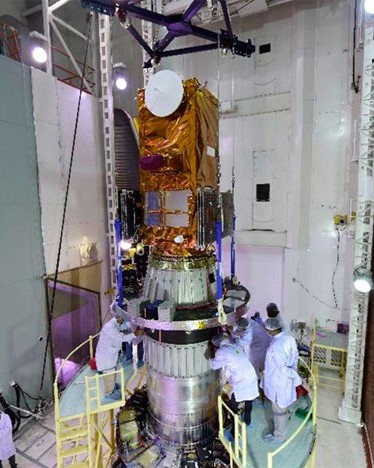
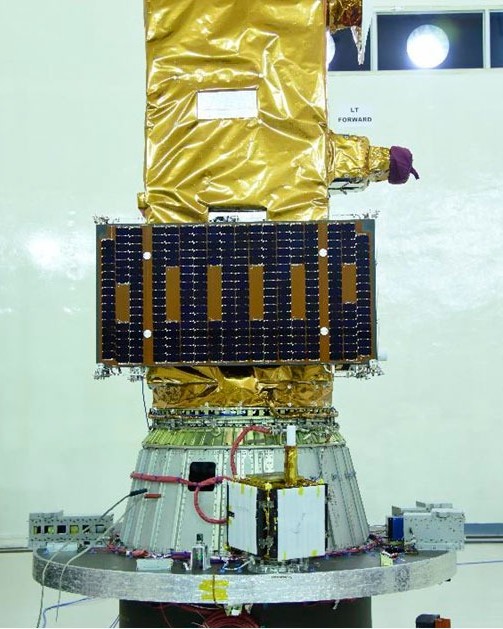

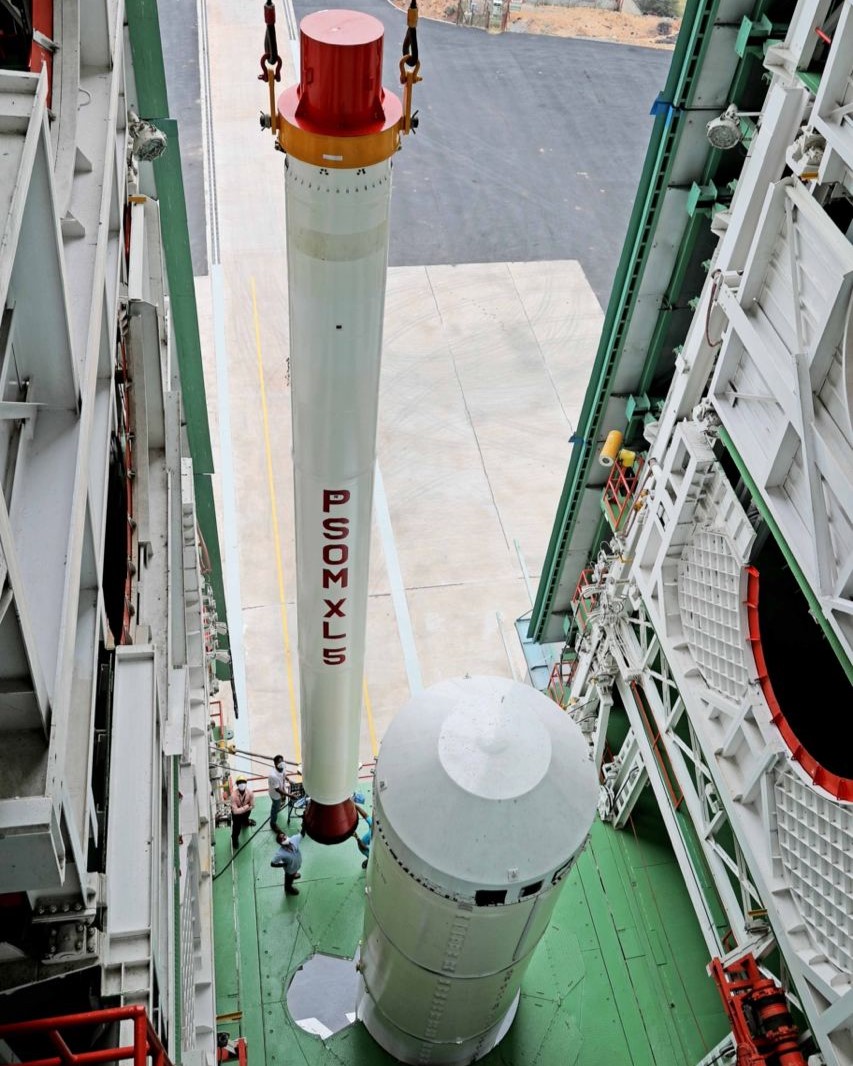
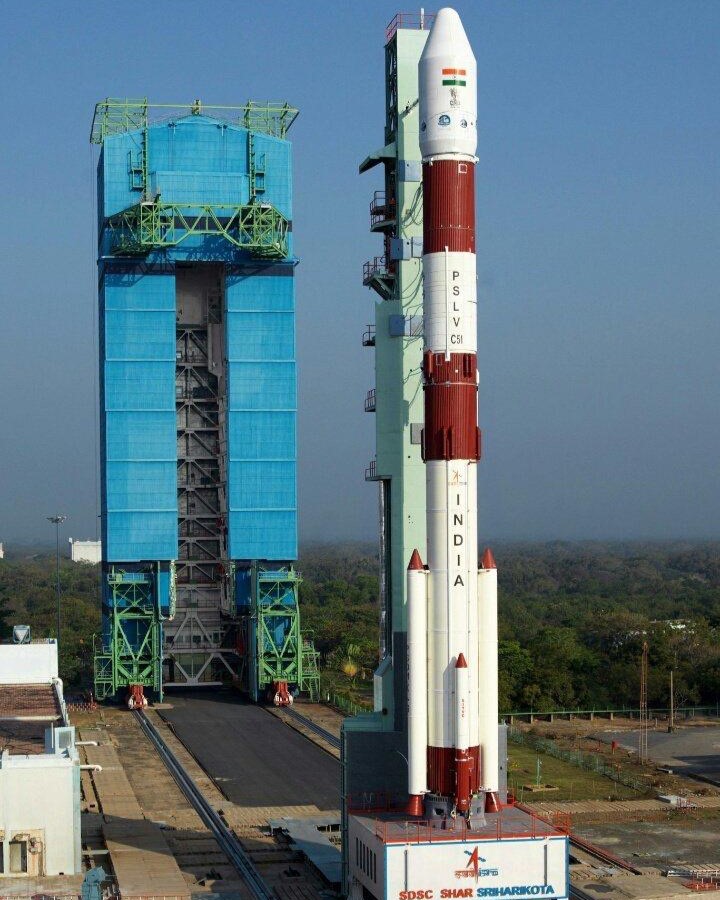
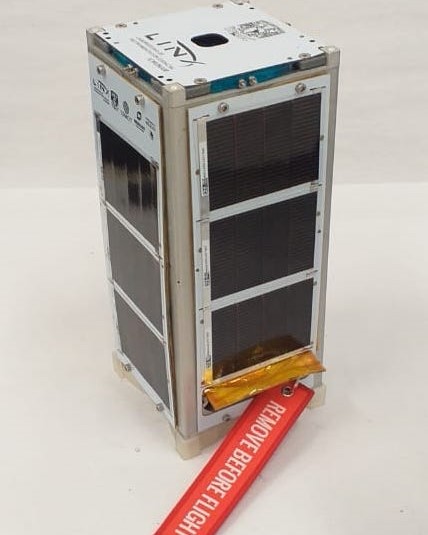
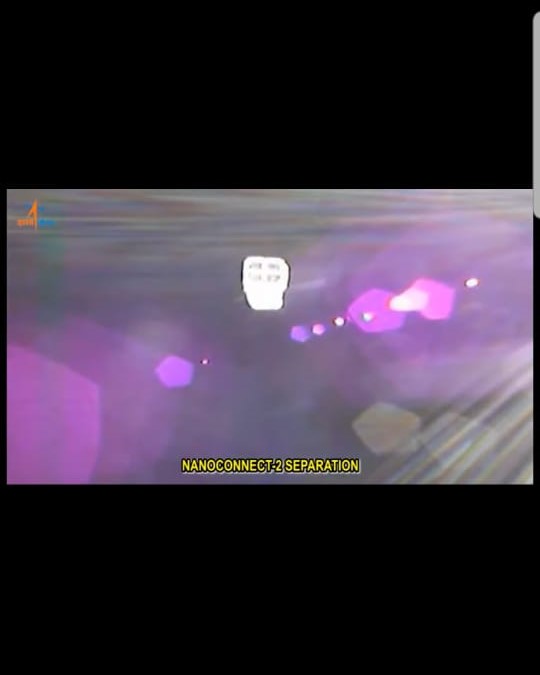
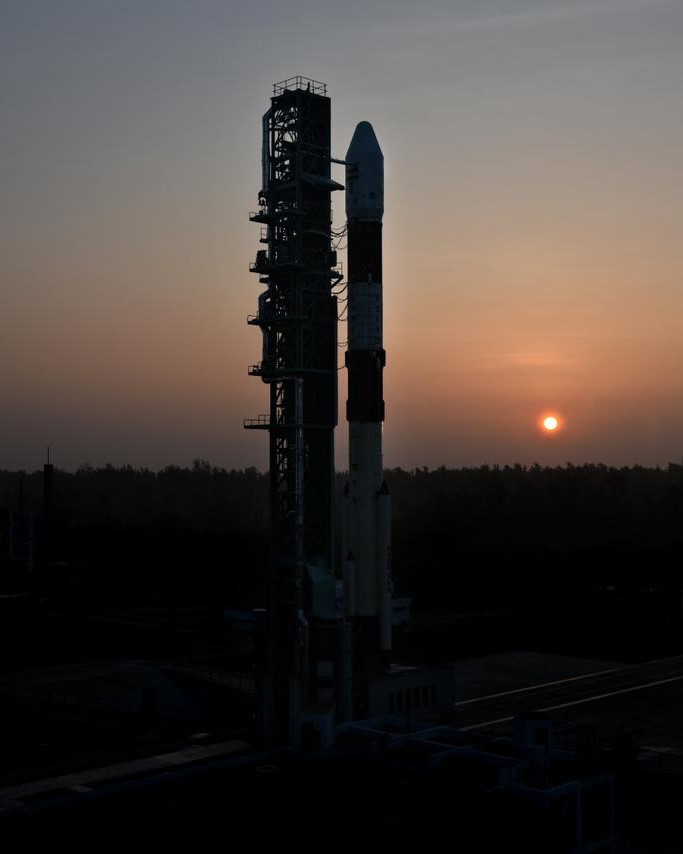
Es una serie de nanosatélites que tiene por objetivo posicionar a México efectivamente en el sector espacial de instrumentación y aplicaciones en órbitas bajas.
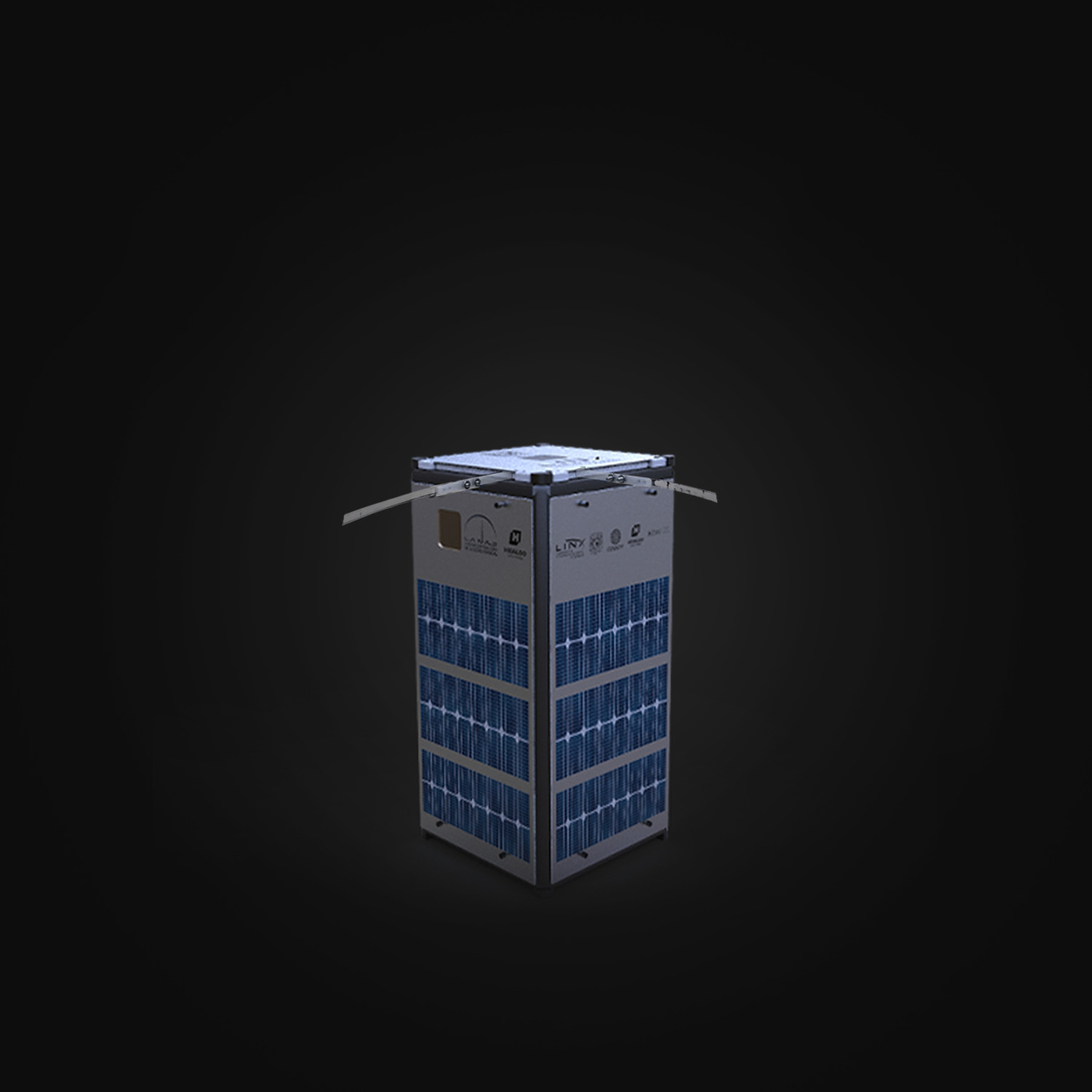
Its objective is to support the mitigation of the effects of COVID-19, through the provision of basic emergency ventilators, simple and cheap, based on components available in the country, on a time scale consistent with the evolution of the first wave of the pandemic in Mexico. Likewise, to continue the development and refinement of these instruments for the subsequent waves that may arise.
The ventilator proposed for production is based on a disposable manual resuscitator, BMV, also known colloquially as Ambu after one of its trademarks. This BMV serves as the core of an automatic invasive breathing system – although it can also be used naturally in a non-invasive way.

The proposed system is easy, transportable, robust, cheap and considers in the best possible way, from its design, the availability of mechanical and electrical parts in the country. The operating commands are simple, and their structure is modular to allow them to be repaired easily and quickly, by simply changing damaged subsystems for new ones in situ.
Repairing faulty subsystems is very simple and can be done after the fact, outside of the instrument to minimize fan downtime.

To ensure robustness of the respiratory function, the ventilator has 2 microprocessors, one dedicated only to the ventilation operation and the other for sensor reading, generation of informative data and production of graphic outputs on the screen, as well as 4 independent motors, 5 power regulators and 2 batteries. This results in a ventilator with a high degree of hot redundancy that prioritizes the continuity of the patient's breathing.

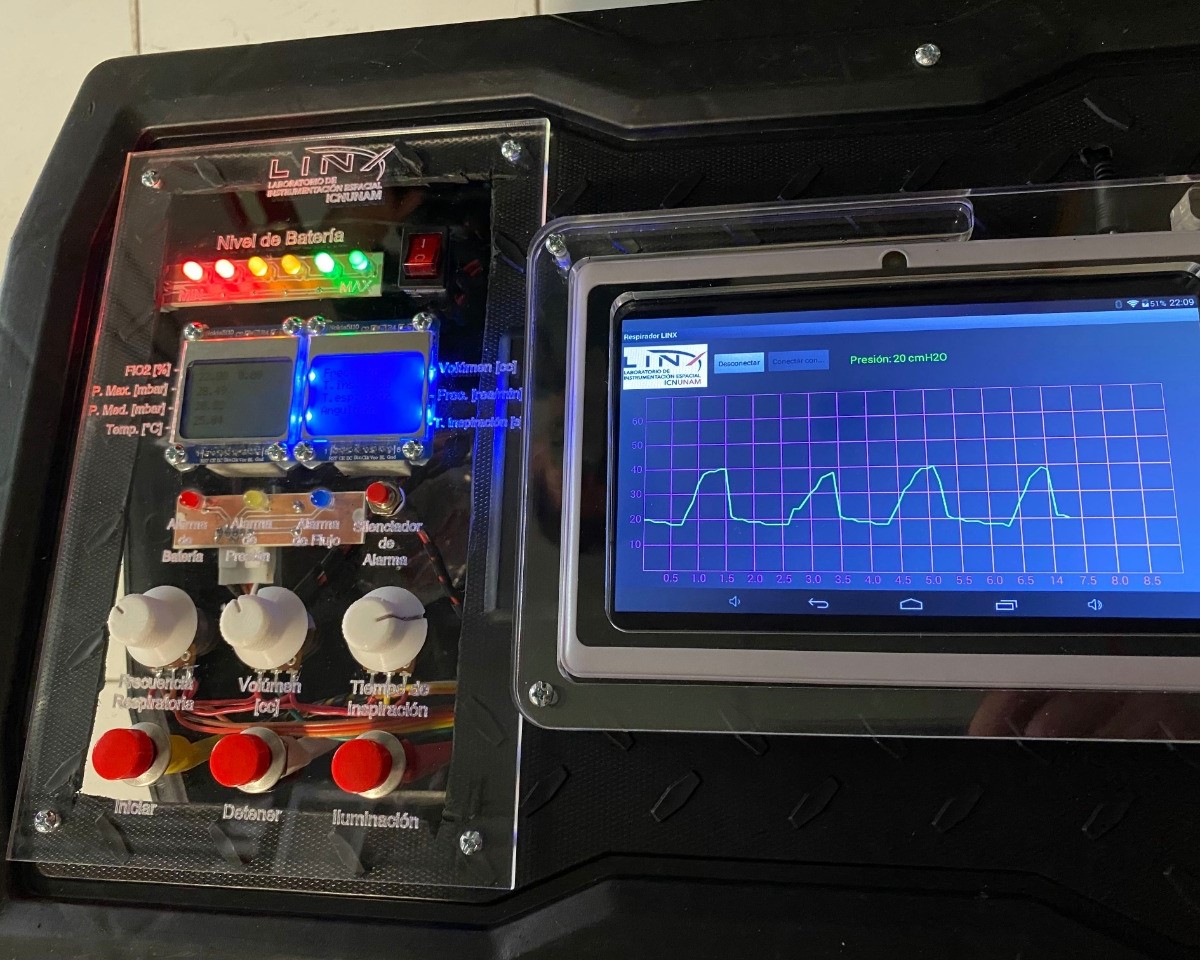
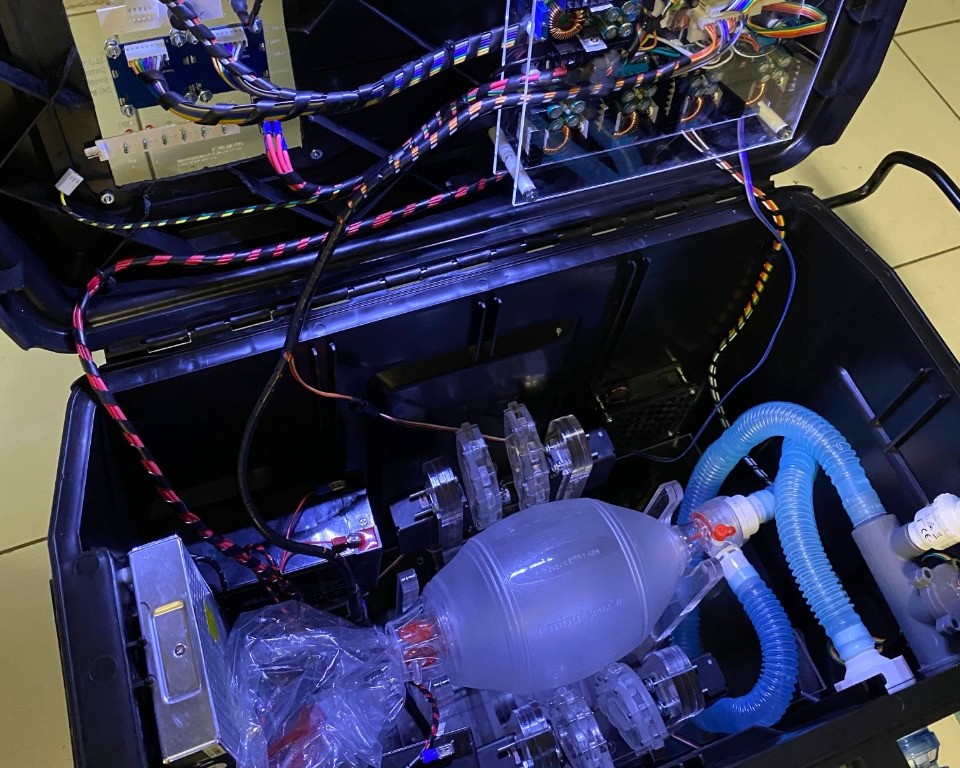
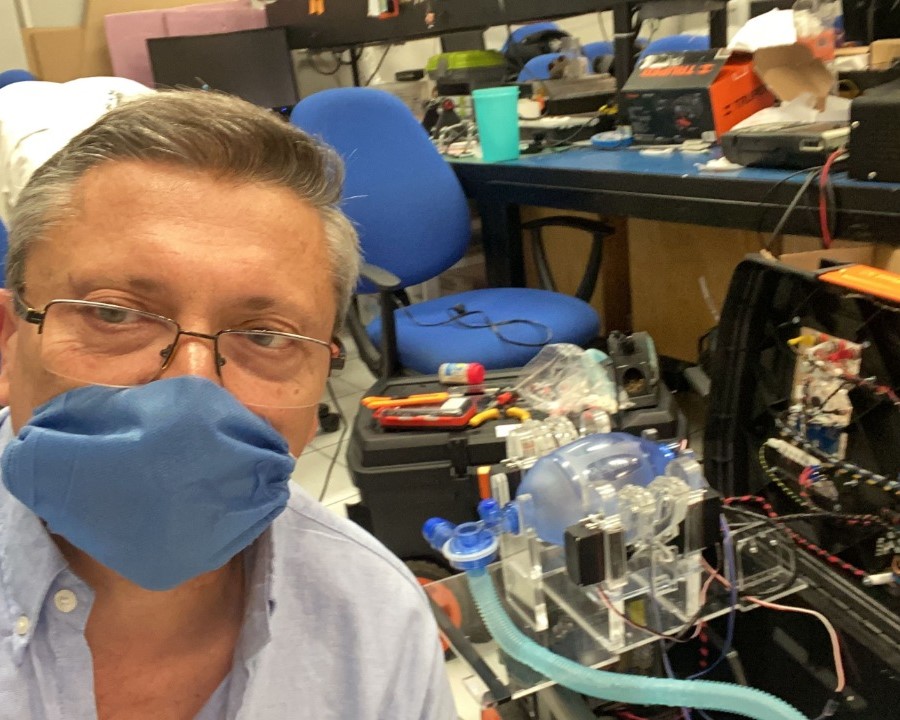
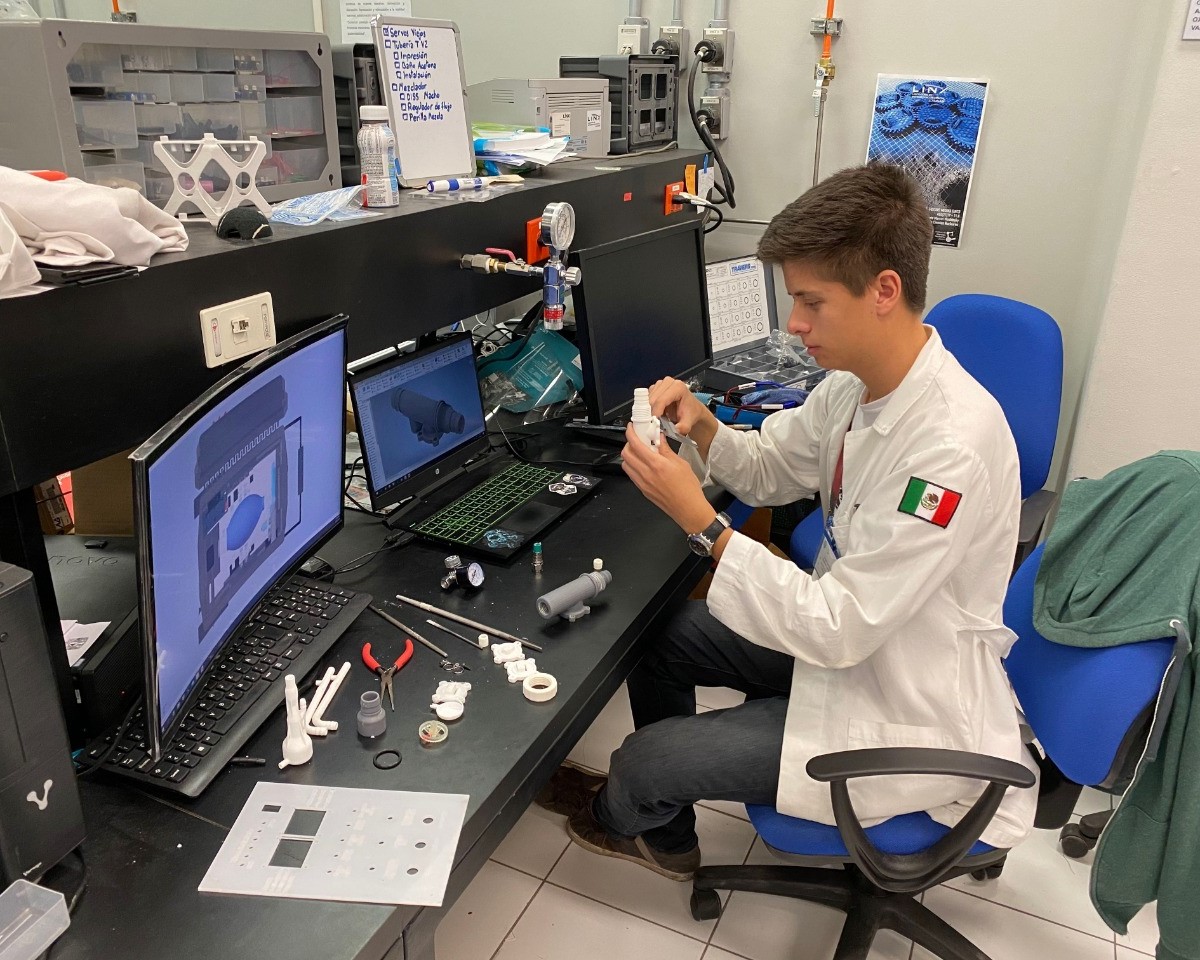
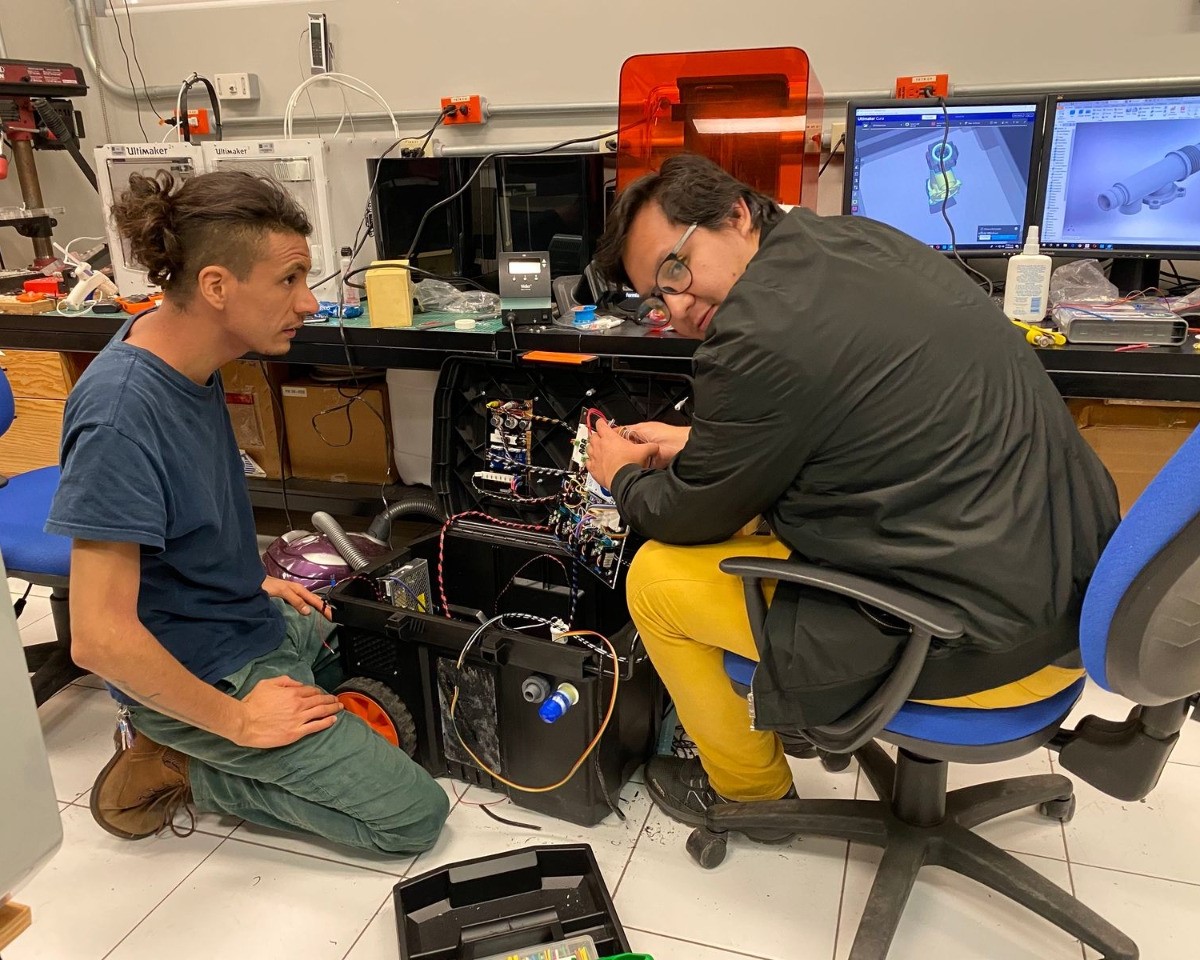
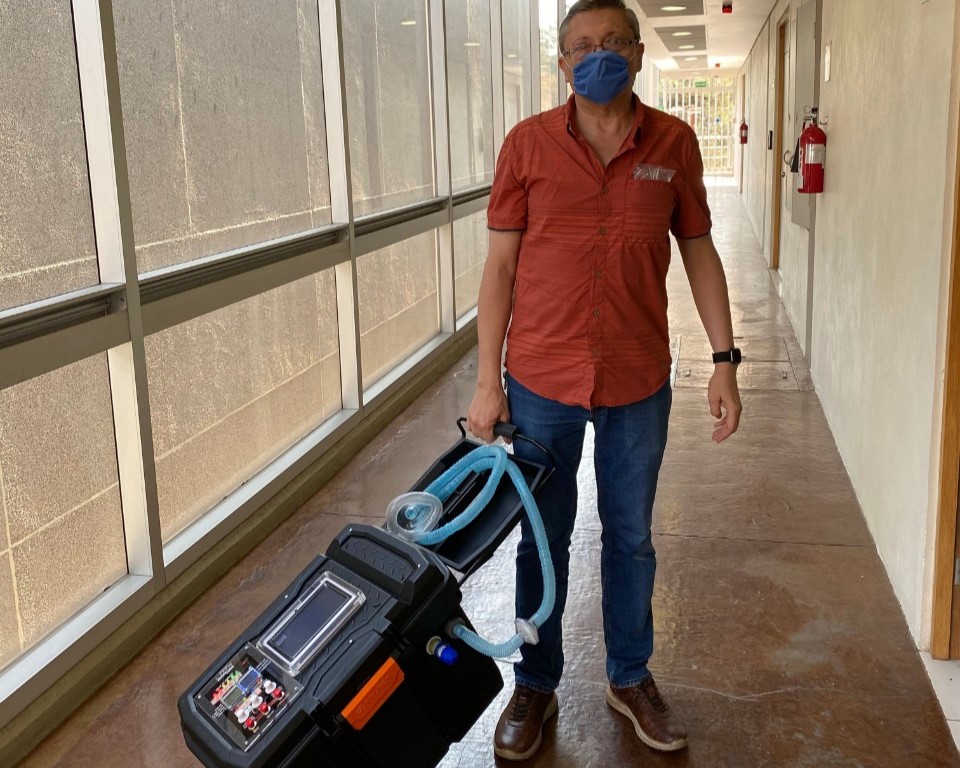
Tiene por objetivo apoyar en la mitigación de los efectos del COVID-19, mediante la aportación de ventiladores básicos de emergencia, simples y baratos, basados en componentes disponibles en el país, en una escala de tiempo consistente con la de la evolución de la primera onda de la pandemia en México.
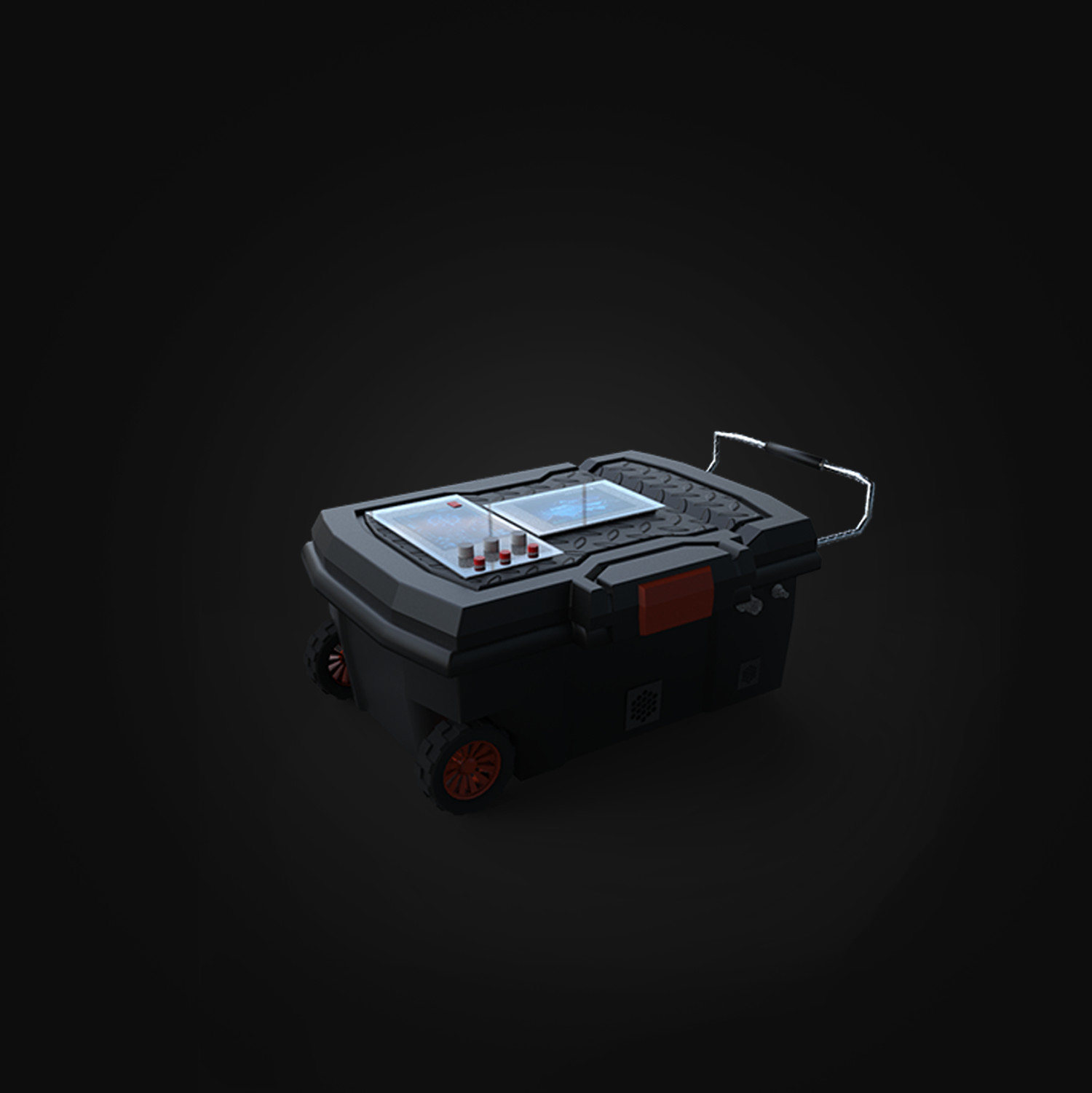



Dirección
Instituto de Ciencias Nucleares, Universidad Nacional Autónoma de México, Apartado Postal 70-543, Ciudad Universitaria, Ciudad de México, México
Correo
linx@
correo.nucleares.unam.mx
Teléfono
55-5623-3389
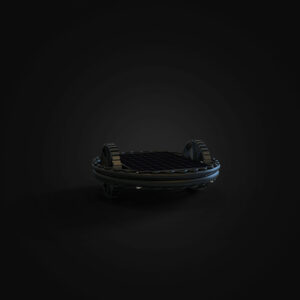
This is the most ambitious mission that LINX is developing. The mission aims to demonstrate the feasibility of building structures on planetary surfaces, using swarms of self-organizing robots. The payload comprises a command, telemetry and deployment module, which is produced by LINX and which is carried by the Peregrine lunar module from the Astrobotic company.
This mission has the support of AEM, CONACyT and UNAM, and will be the first Mexican mission to the Moon, which will represent a technological, strategic and media milestone for the country.
COLMENA’s main objective is to demonstrate the concept of using autonomous micro-robots for space exploration and exploitation on surfaces exposed to the interplanetary environment. These surfaces are covered with regolith, in a vacuum and electrostatically charged by the action of solar UV radiation, which generates a dusty plasma that dominates a boundary layer of a few tens of centimeters. This returns to robots with dimensions smaller than this scale, in instruments completely different from those existing or currently being investigated in other countries, turning COLMENA into a frontier project.
The specific objectives mainly include:
The COLMENA mission is exclusively developed by the Space Instrumentation Laboratory, LINX, of the Institute of Nuclear Sciences of the UNAM.
Students from various majors and academic levels from UNAM, IPN and UNACH, as well as from UNAM preparatory schools, carry out or have completed stays at LINX and participated in different aspects of the mission.
Kind support has also been received in some specific tasks from researchers and laboratories from: the Institutes of Geophysics, the Institute for Research in Materials and Engineering and the Faculty of Sciences of the UNAM, and the ESIME-Ticomán.
Likewise, consultations on materials have been carried out with researchers from L’Institut de Recherche en Astrophysique et Planétologie (IRAP), Universite Paul Sabatier, Toulouse, France.
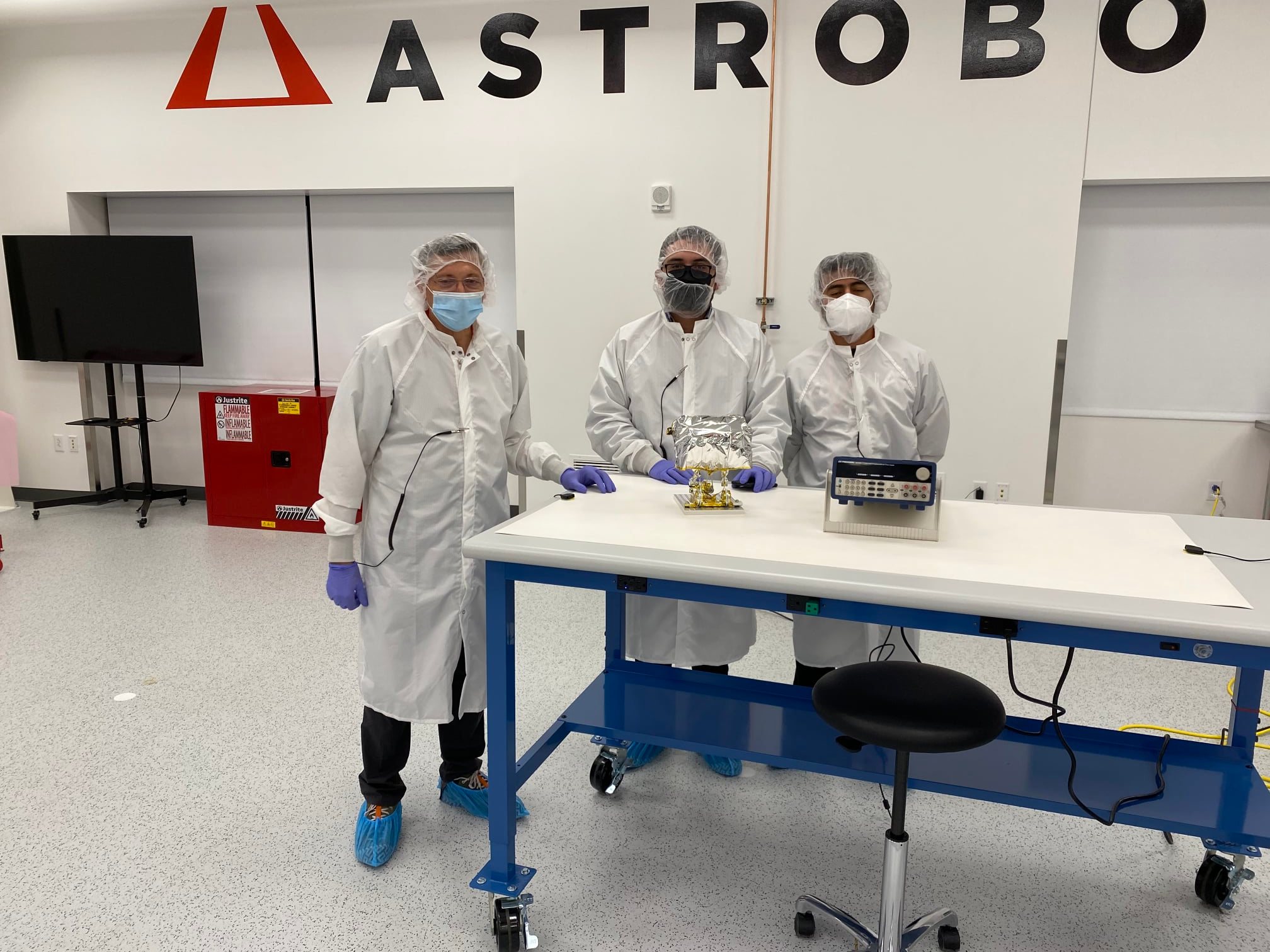



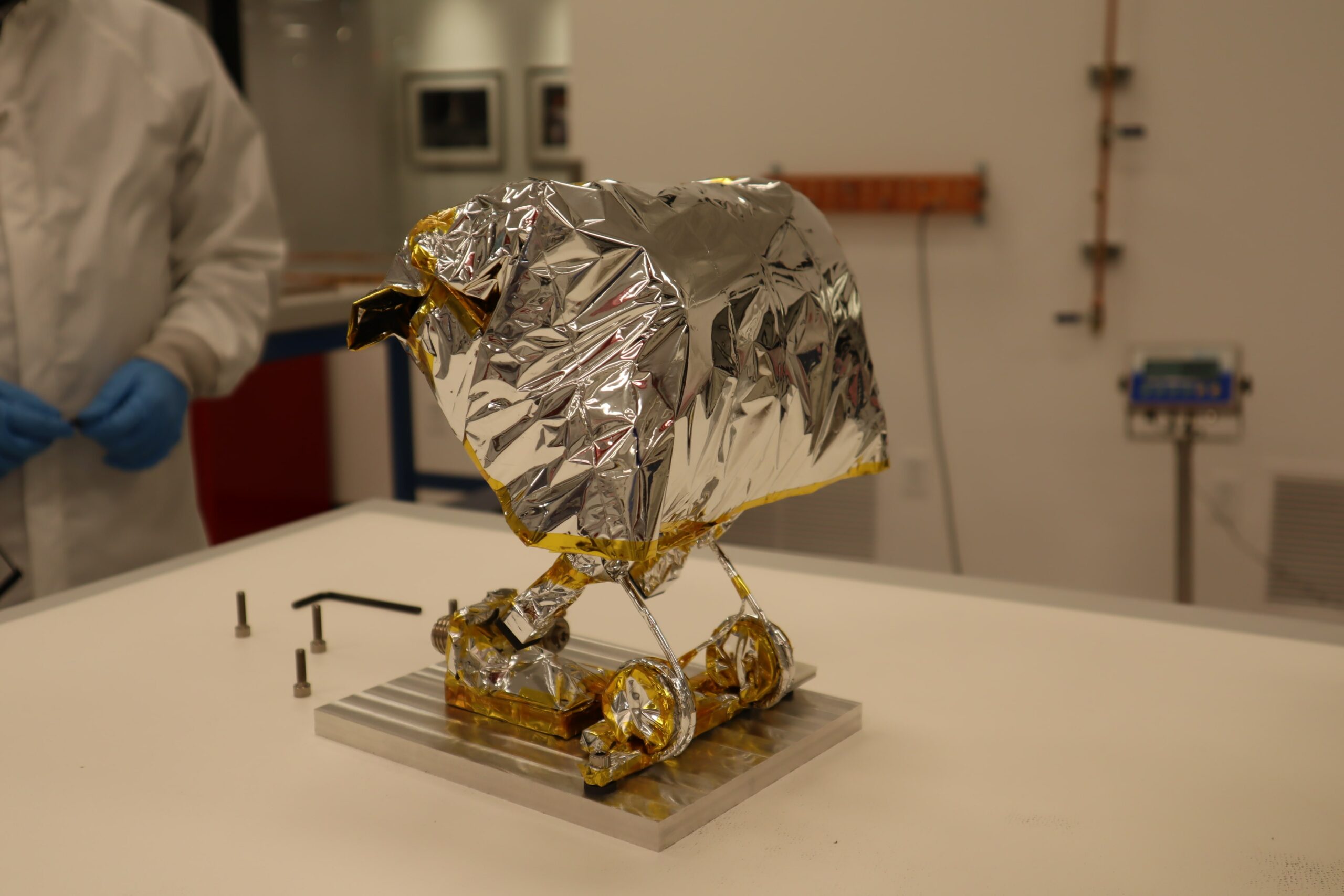



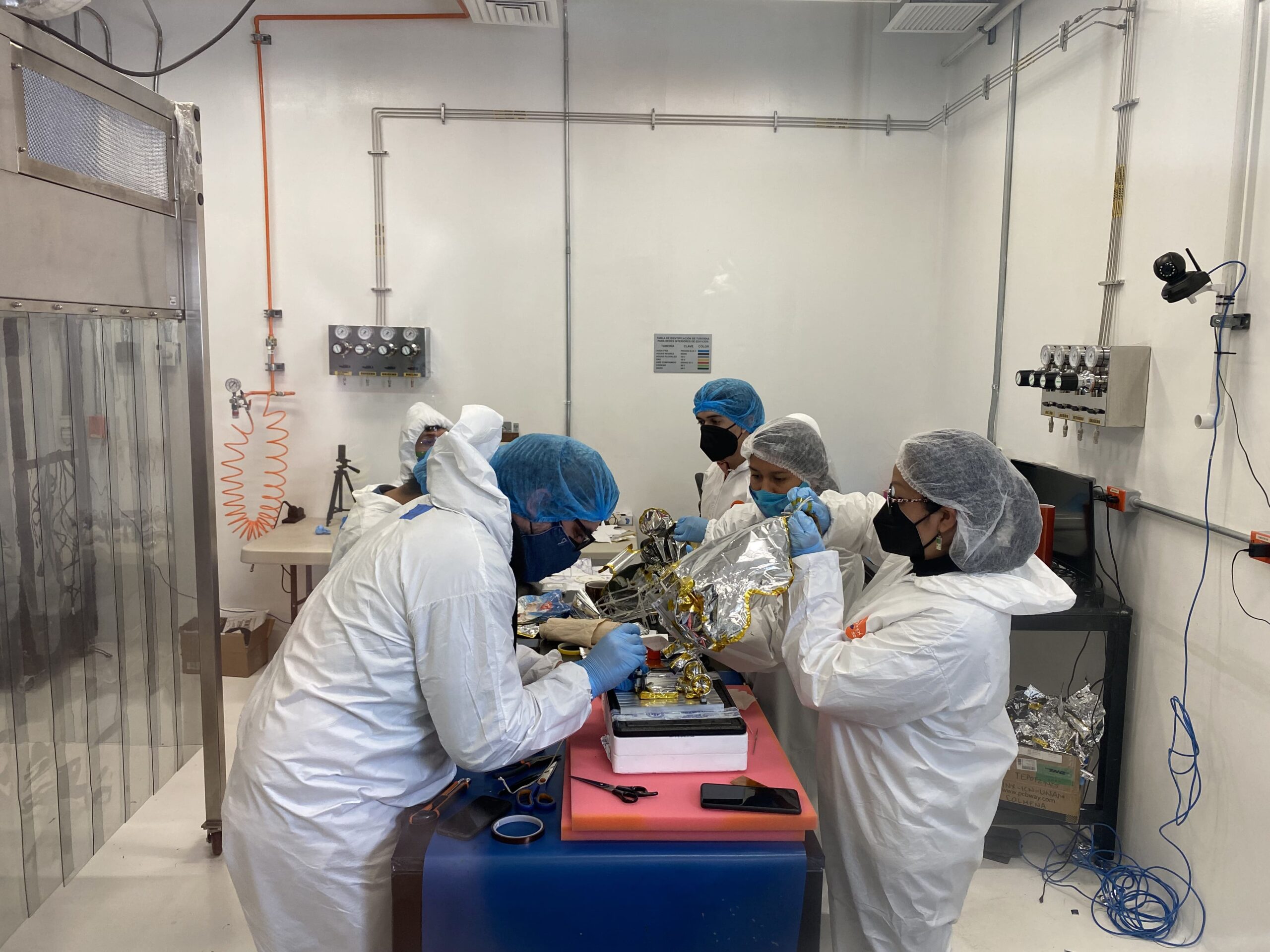


Es un telescopio estratosférico (vuela a unos 35 km de altura) de 500 kg para la observación de la atmósfera en el UV. Es un prototipo de EUSO para la observación de rayos cósmicos de ultra alta energía.
Fue construido bajo la coordinación de la Agencia Espacial Francesa CNES, junto con Alemania, Corea, España, Estados Unidos, Italia, Francia, Japón, México y Polonia. Voló sobre Canadá en 2014.
LINX contribuyó con los sistemas de housekeeping y de alimentación en bajo voltaje y fue responsable por la arquitectura térmica del instrumento.

Es un telescopio estratosférico más avanzado y complejo que EUSO-Balloon, de 1,500 kg, para la observación de la atmósfera en el UV. Es un prototipo de EUSO para la observación de rayos cósmicos de ultra alta energía.
Fue construido bajo la coordinación de NASA, junto con Alemania, Estados Unidos, Italia, Francia, Japón, México y Polonia. Se lanzó desde Nueva Zelandia en abril de 2017. Vuela en un globo de super-presión, el globo más avanzado de la NASA.
LINX contribuyó con dos nuevos sistemas de housekeeping y con los sistemas de alimentación en bajo voltaje. Fue responsable por la arquitectura térmica del instrumento y por la definición de la interfase térmica con los sistemas de la góndola de NASA.
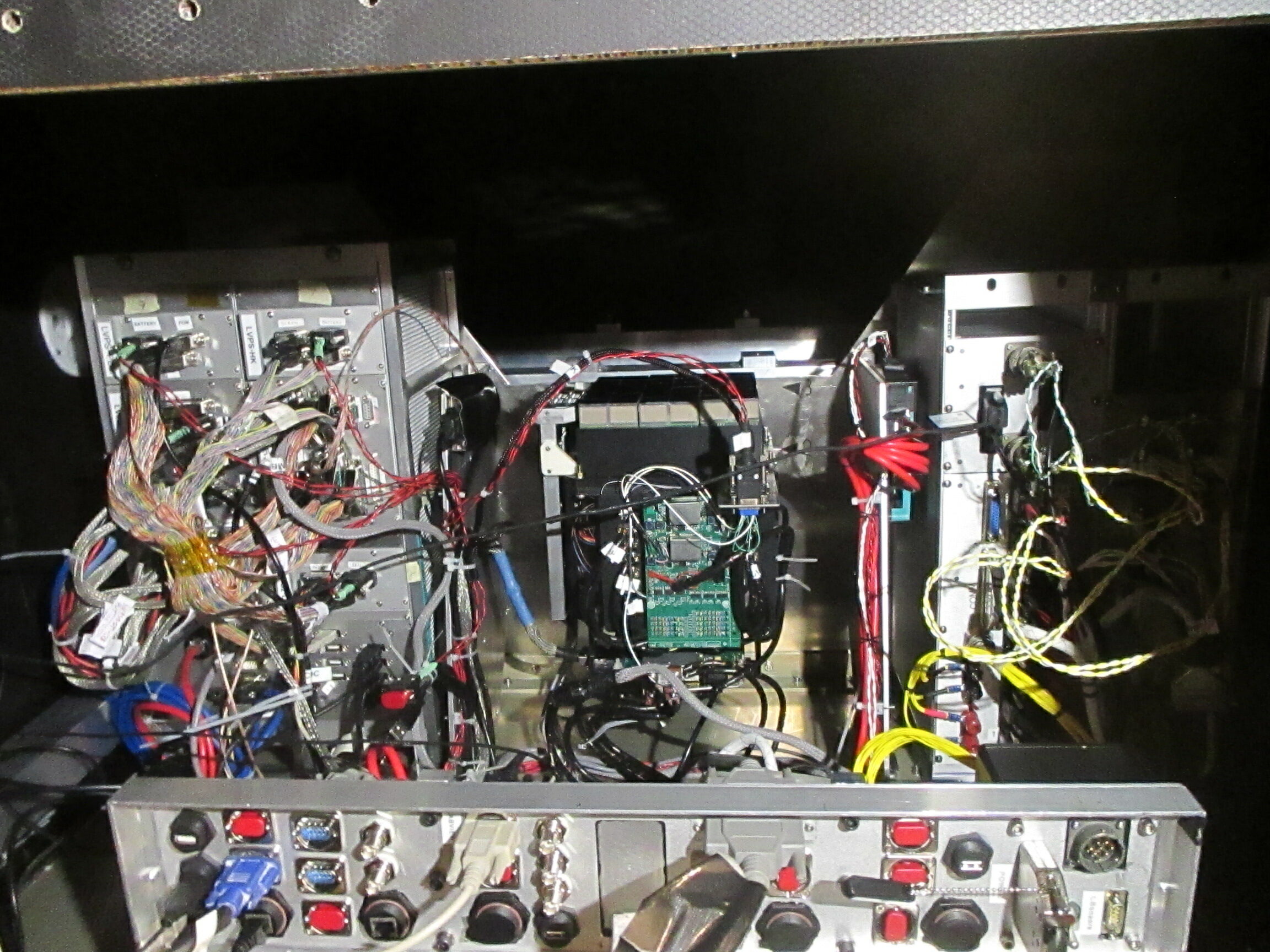

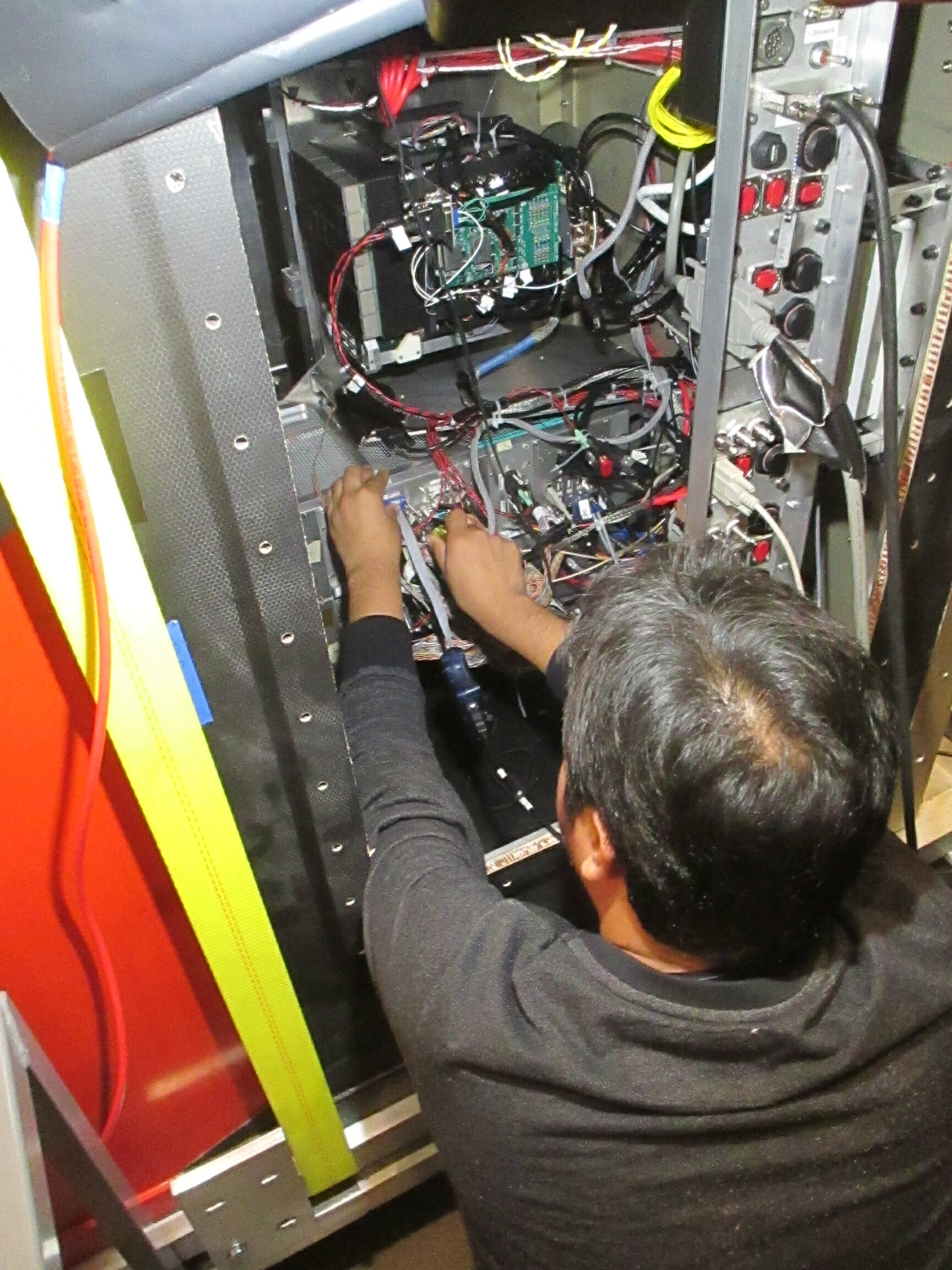



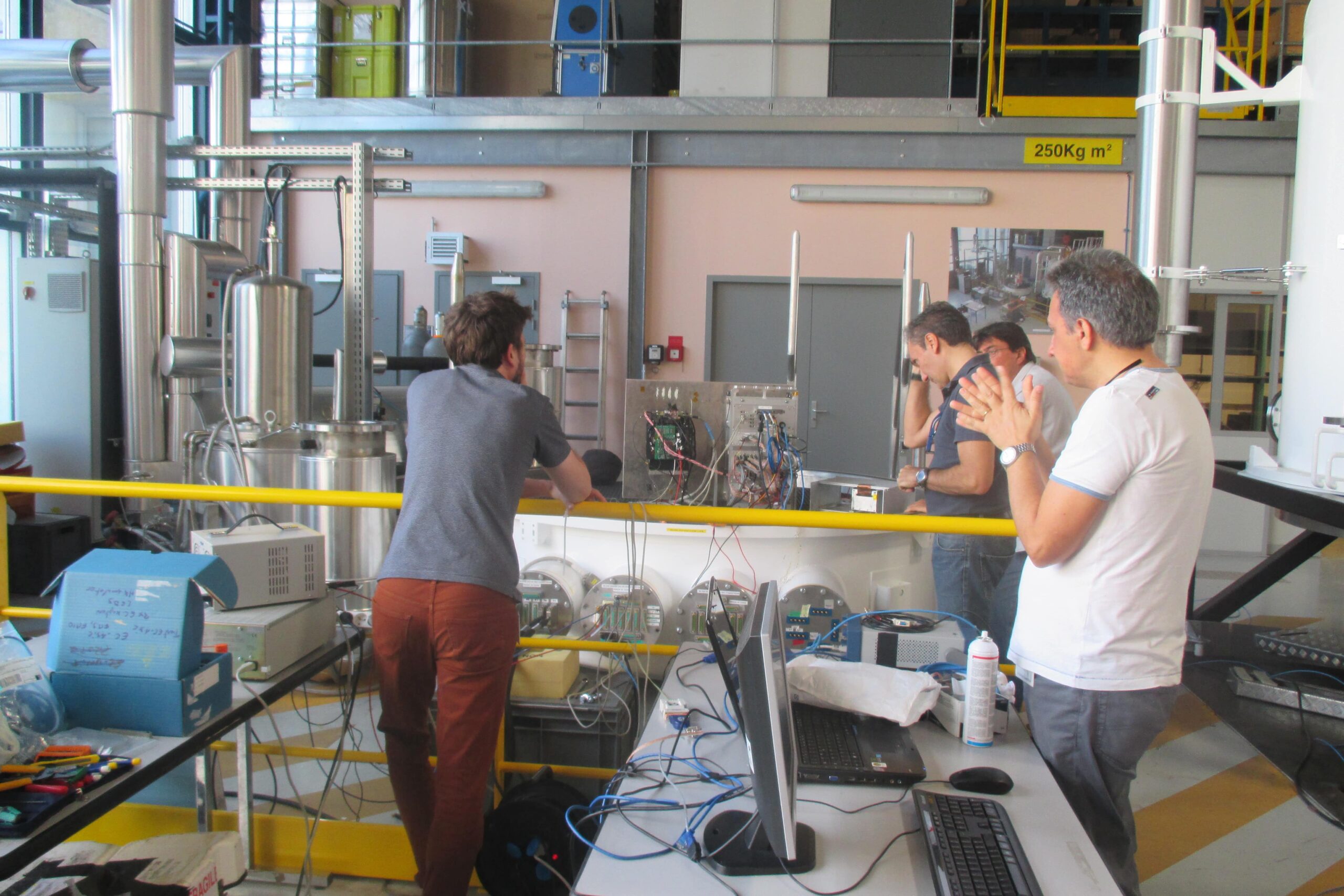

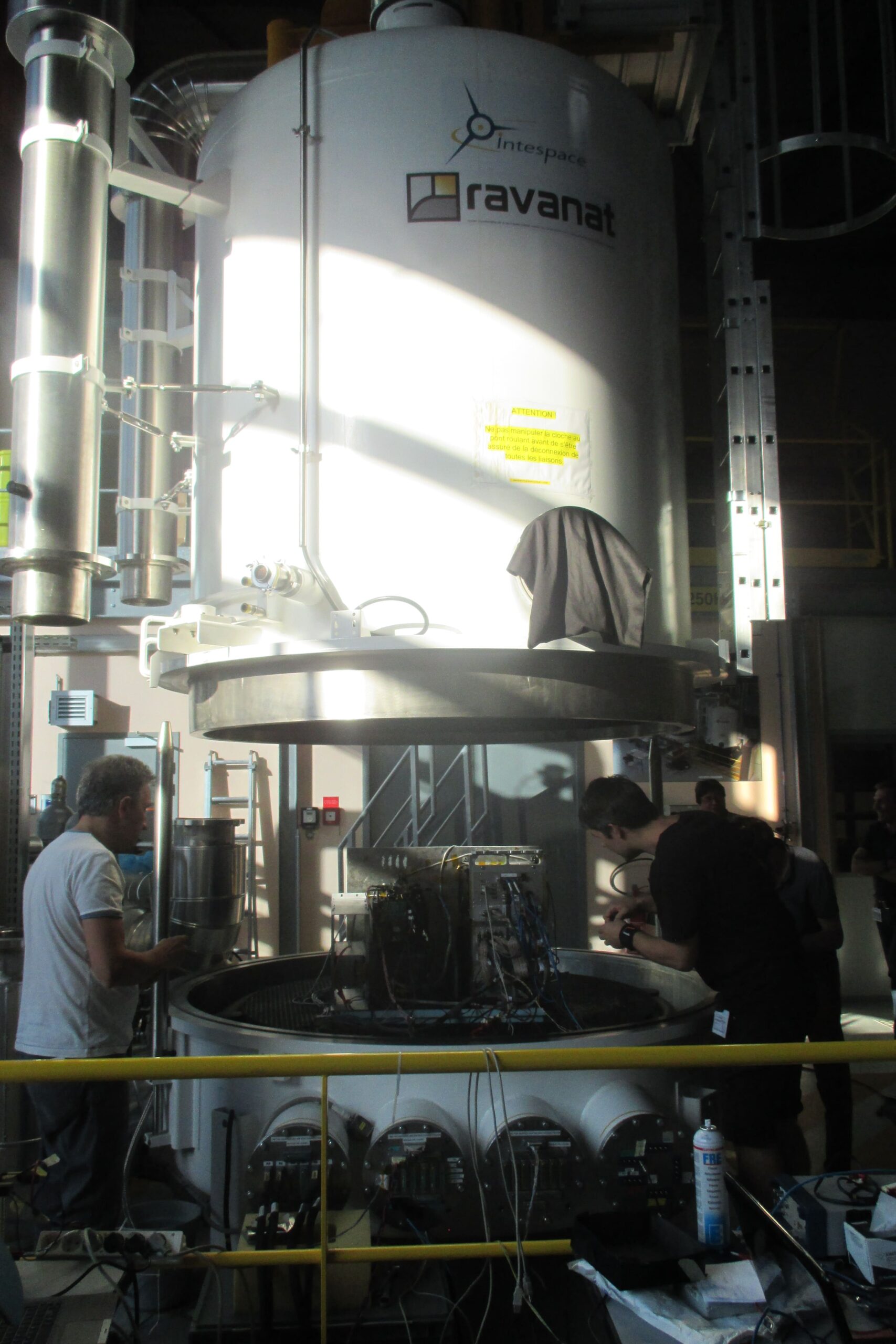
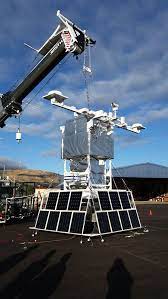


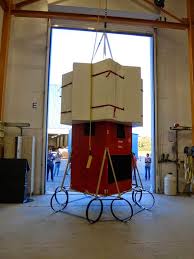

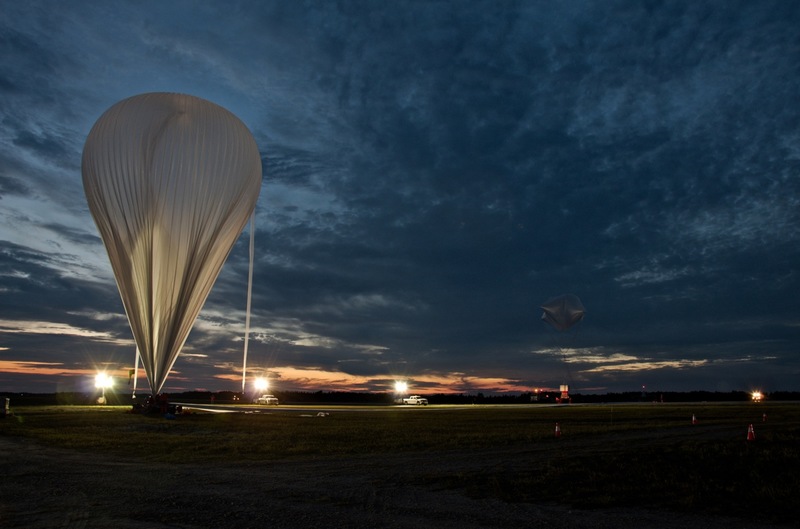


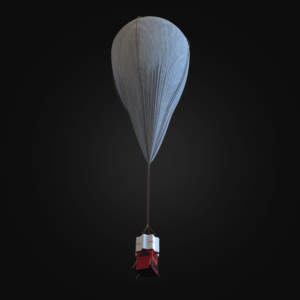
Es un telescopio estratosférico (vuela a unos 35 km de altura) de 500 kg para la observación de la atmósfera en el UV.
Es un prototipo de EUSO para la observación de rayos cósmicos de ultra alta energía.
Fue construido bajo la coordinación de la Agencia Espacial Francesa CNES, junto con Alemania, Corea, España, Estados Unidos, Italia, Francia, Japón, México y Polonia. Voló sobre Canadá en 2014.
LINX contribuyó con los sistemas de housekeeping y de alimentación en bajo voltaje y fue responsable por la arquitectura térmica del instrumento.



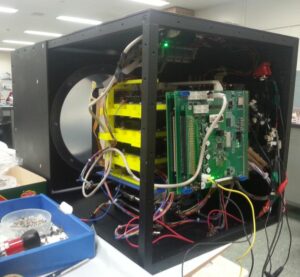
Es una cámara UV que volará en la Estación Espacial Internacional en 2018. Es una versión miniaturizada (60kg) de EUSO-SPB. Observará desde el espacio rayos cósmicos entrando a la atmósfera terrestre.
Fue construido bajo la coordinación de las agencias espaciales italianas, ASI y rusa, ROSCOSMOS, junto con Italia, Francia, Japón, México y Polonia. LINX contribuyó con un nuevo sistema miniaturizado de housekeeping.
¡Éste es el primer equipo mexicano que volará en el Espacio!


Es un gran telescopio espacial que volará en la Estación Espacial Internacional en 2023. Es un complejo instrumento reflector/refractor con una superficie focal de alrededor de 5000 fotomultiplicadores multi-ánodo. Es un instrumento pionero para la física de frontera.
Está siendo coordinado por las agencias espaciales Rusa, ROSCOSMOS, y Japonesa, JAXA, y participarán Alemania, Corea, España, Francia, Italia, Japón, México y Polonia.
LINX contribuirá con el complejo sistema de housekeeping que controla el instrumento a partir de tierra y de la CPU principal. ¡Este será un hito en el desarrollo de tecnología espacial mexicana!
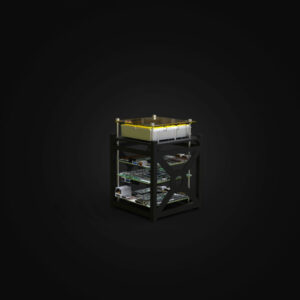
Es un sistema de telemetría y telecomando para globos estratosféricos de larga duración desarrollado en una cooperación exclusiva LINX-CNES (Agencia Espacial Francesa). El sistema es completamente original, tanto por sus capacidades, miniaturización, costos, como por su tiempo de desarrollo.
Este es un gran suceso de cooperación internacional y la primera cooperación técnica CNES-Agencia Espacial Mexicana (AEM).
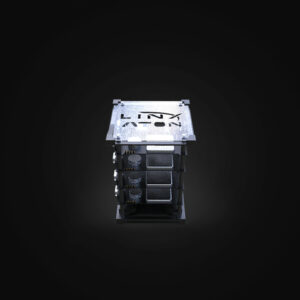
Es un telescopio estratosférico (vuela a unos 35 km de altura) de 500 kg para la observación de la atmósfera en el UV. Es un prototipo de EUSO para la observación de rayos cósmicos de ultra alta energía.
Fue construido bajo la coordinación de la Agencia Espacial Francesa CNES, junto con Alemania, Corea, España, Estados Unidos, Italia, Francia, Japón, México y Polonia. Voló sobre Canadá en 2014.
LINX contribuyó con los sistemas de housekeeping y de alimentación en bajo voltaje y fue responsable por la arquitectura térmica del instrumento.
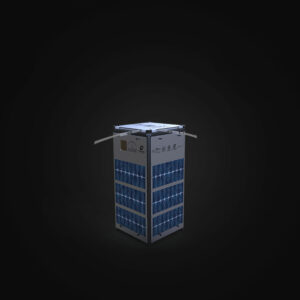
Es una serie de nanosatélites que tiene por objetivo posicionar a México efectivamente en el sector espacial de instrumentación y aplicaciones en órbitas bajas.
El lanzamiento tendrá lugar en el PSLV-C51 desde la base del Dhawan Space Center, SHAR, Sriharikota. El PSLV usará para este lanzamiento una configuración con booster de estado sólido adicionados al motor principal.
Llevará como satélite principal al brasilero Amazonioa-1, y otros 18 satélites secundarios entre los que se cuenta NanoConnect-2.
NanoConnect-2 es el primer nanosatélite completamente diseñado, construido y validado en México: en el laboratorio LINX, por investigadores y alumnos mexicanos. NanoConnect-2 es el segundo de la serie y el primero en ser puesto en órbita terrestre.
NanoConnect-2 es un nanosatélite de tipo 2U de 1,810 gramos de masa, cuyos objetivos técnicos son:
1.- demostración práctica de la plataforma satelital completa, esto es, estructura mecánica, sistema de generación y almacenamiento de potencia, sistema de monitoreo, computadora de a bordo, sistema de telecomunicaciones y estación de seguimiento y operación terrena.
2.- demostración de la capacidad de prestar servicios de validación tecnológica espacial, mediante el transporte como carga útil de un sistema secundario experimental de telecomunicaciones, basado en una antena de gran ancho de banda y ganancia realizada con innovadoras nanotecnologías por la empresa norteamericana nCAP Telecommunications en cooperación logística con Space-AI.
El desarrollo de estos satélites es realizado por:
El Laboratorio de Instrumentación Espacial LINX, del Instituto de Ciencias Nucleares de la UNAM, en cooperación con el gobierno del estado de Hidalgo, en el marco de las actividades iniciales del Laboratorio Nacional de Acceso Espacial, LANAE.
La serie fue iniciada en noviembre de 2017 con el lanzamiento NanoConnet-1
El primer nanosatélite mexicano en vuelo suborbital, con la participación del gobernador del estado, el Lic. Omar Fayad, utilizando la plataforma estratosférica ATON de LINX, operada desde Pachuca.
NanoConnect-2
Como toda misión espacial tiene un grado considerable de riesgo de fracaso, pero el éxito de la misión es ya indiscutible en el sentido de haber superado todas las pruebas de calificación necesarias. Y haber servido para el desarrollo de tecnologías y recursos humanos indispensable para los planes de largo plazo de LINX, del LANAE, y de la UNAM y el gobierno de Hidalgo. Para el posicionamiento de México en el sector espacial como un actor válido, trascendente e independiente técnica y estratégicamente. Entre los patrocinadores de este esfuerzo debe destacarse en forma especial, al empresario José Vera y a su empresa Liber Salus, y al ya fallecido empresario Francisco Valle y su empresa Pastes Kiko.
Estas se suman en un ecosistemas de diversas empresas nacionales y extranjeras que apoyan a LINX en sus proyectos:
AG Electrónica, Biomédica de Referencia, DOW, ENGIE México, EBIME Equipos de Biomedicina de México, Glenair, Globalstar, HIESC, InReach, Liber Salus, MicroLink, nCAP Telecommunications, Publicidad Virtual, Rohde & Shwarz, PRAXIS, SAMTEC, Sol21CyT, Space AI, Spacenet, Steren Electrónica, Weller, Wurth Electronik.



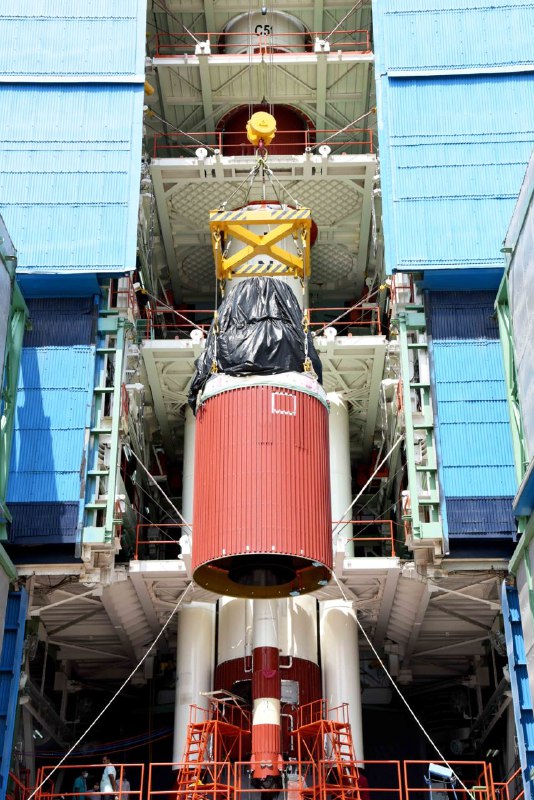
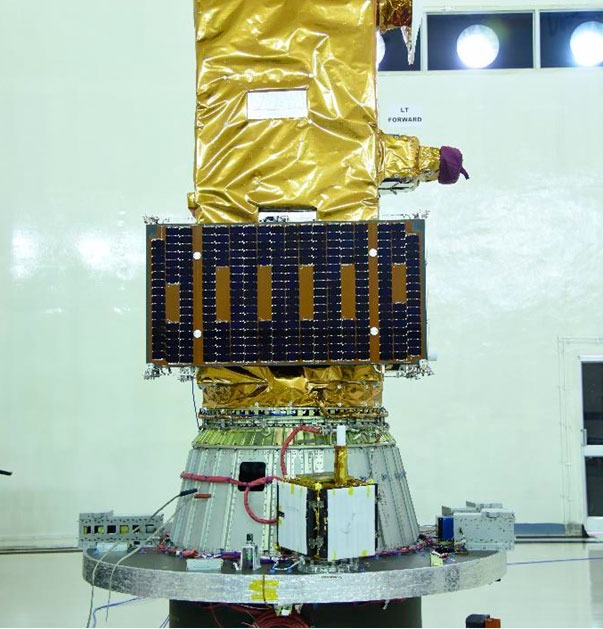





Tiene por objetivo apoyar en la mitigación de los efectos del COVID-19, mediante la aportación de ventiladores básicos de emergencia, simples y baratos, basados en componentes disponibles en el país, en una escala de tiempo consistente con la de la evolución de la primera onda de la pandemia en México. Así mismo, continuar el desarrollo y perfeccionamiento de dichos instrumentos para las ondas subsecuentes que posiblemente se presentarán.
El ventilador propuesto para producción está basado en un resucitador manual descartable, BMV, también conocido coloquialmente como Ambu por una de sus marcas comerciales. Este BMV funge como el núcleo de un sistema automático de respiración invasiva – aunque que también puede utilizarse de manera natural en forma no-invasiva.
El sistema propuesto es fácilmente, transportable, robusto, barato y considera en la mejor forma posible, desde su diseño, la disponibilidad de partes mecánicas y eléctricas en el país. Los comandos de operación son simples, y su estructura es modular para permitir su reparación en forma sencilla y rápida, mediante el simple cambio in situ de subsistemas dañados por otros nuevos. La reparación de los subsistemas defectuosos es muy simple y puede realizarse a posteriori, fuera del instrumento para minimizar el tiempo muerto del ventilador.
Para garantizar robustez de la función respiratoria, el ventilador posee 2 microprocesadores, uno dedicado solamente a la operación de ventilación y otro para lectura de sensores, generación de datos informativos y producción de salidas gráficas en pantalla, así como 4 motores independientes, 5 reguladores de potencia y 2 baterías. Con esto se logra un ventilador con alto grado de redundancia en caliente que prioriza la continuidad de la respiración del paciente.
